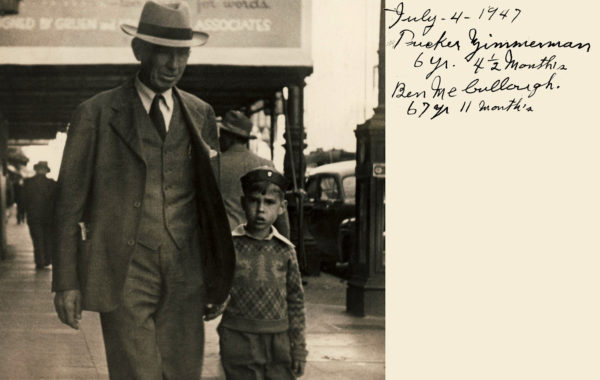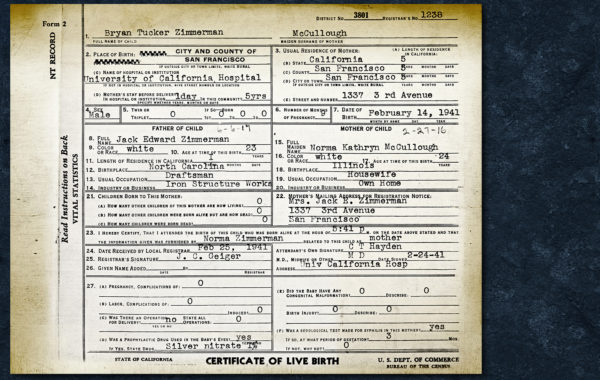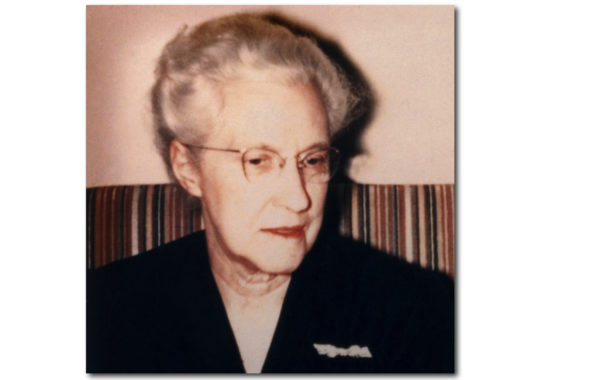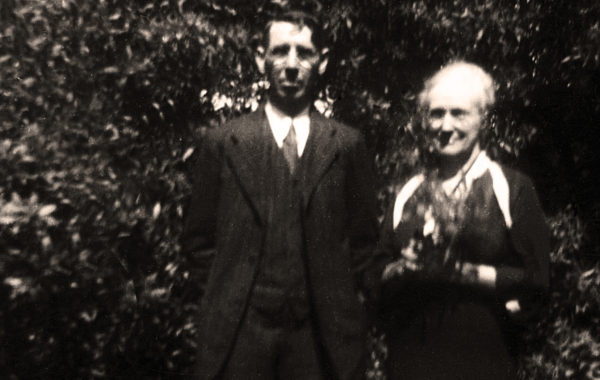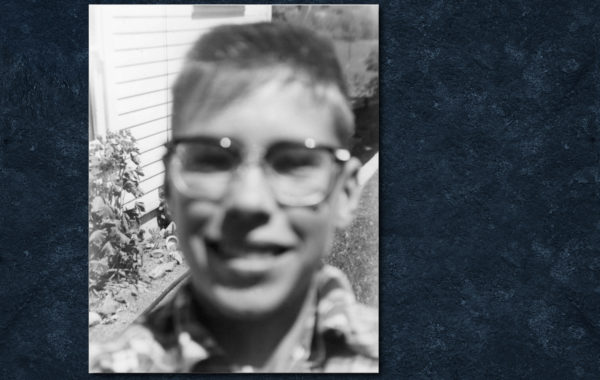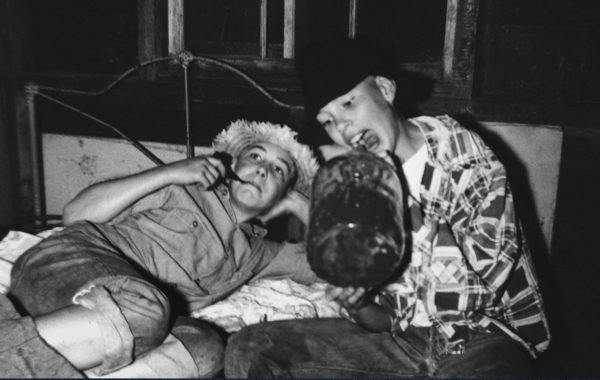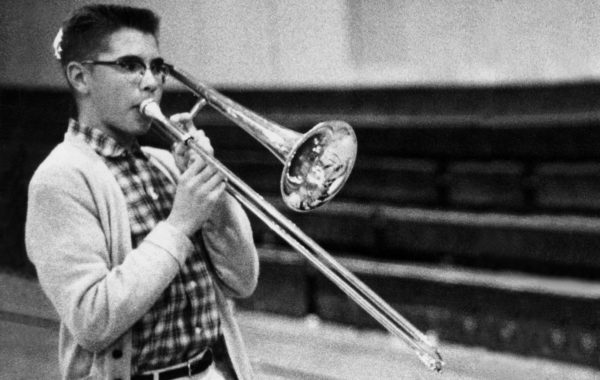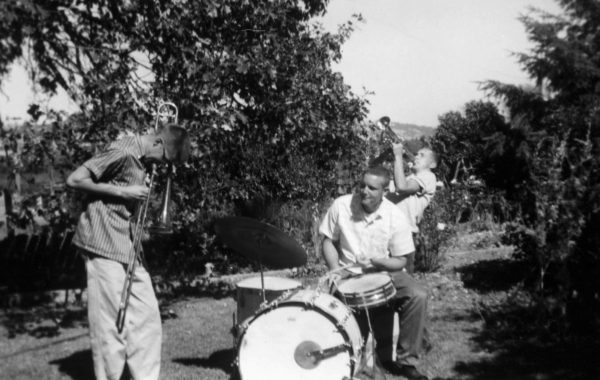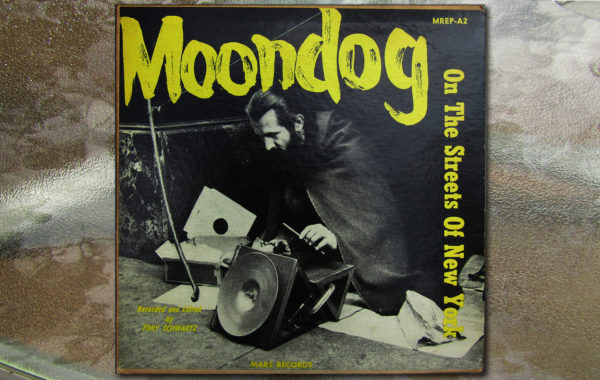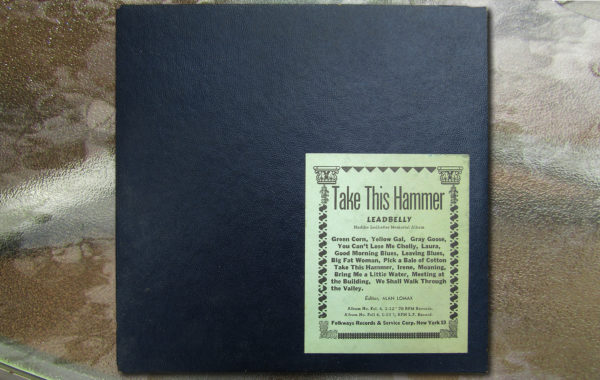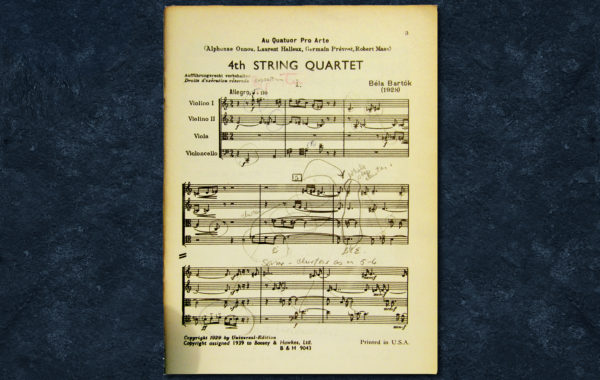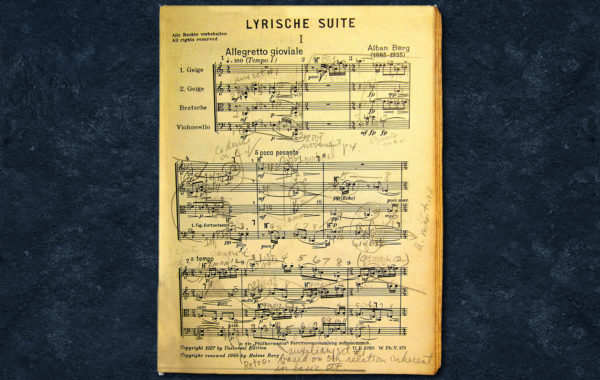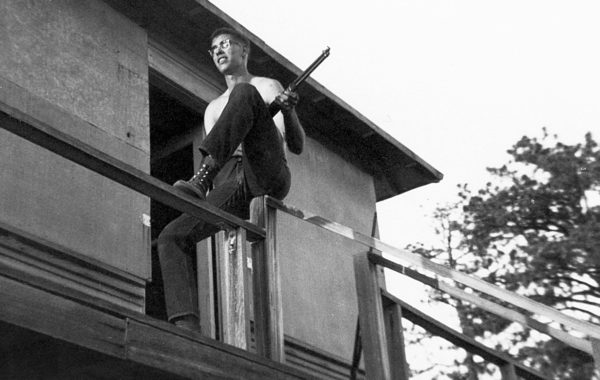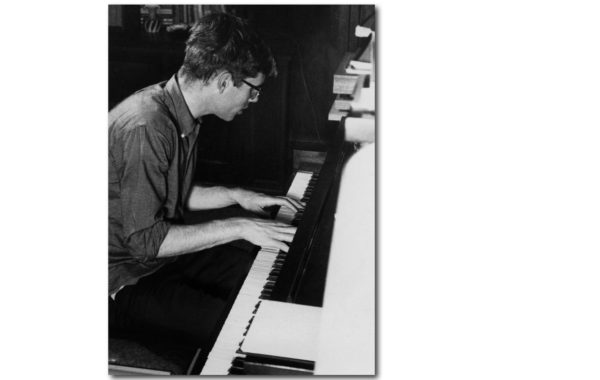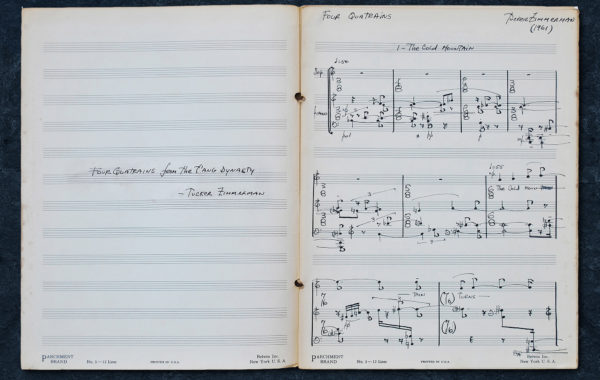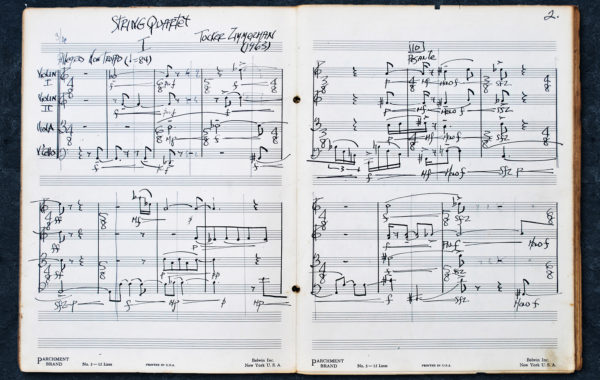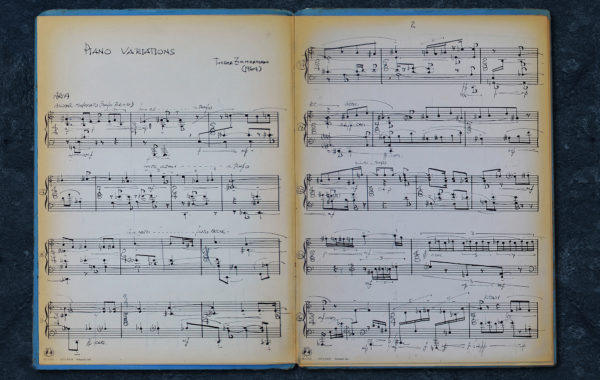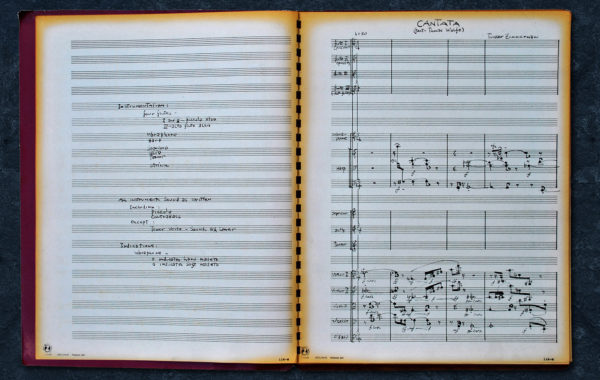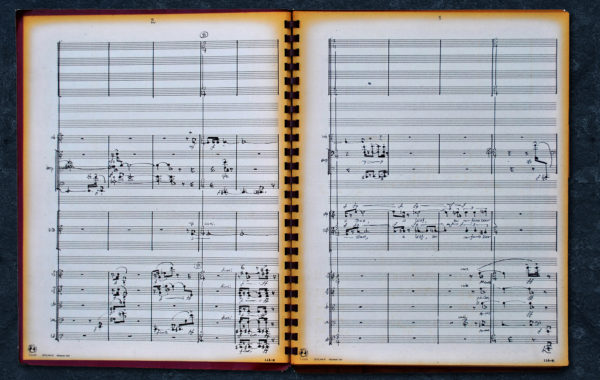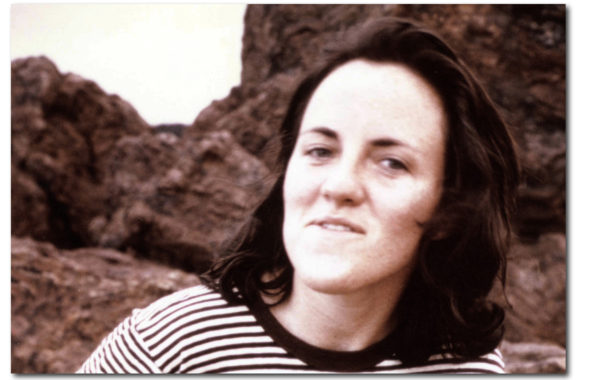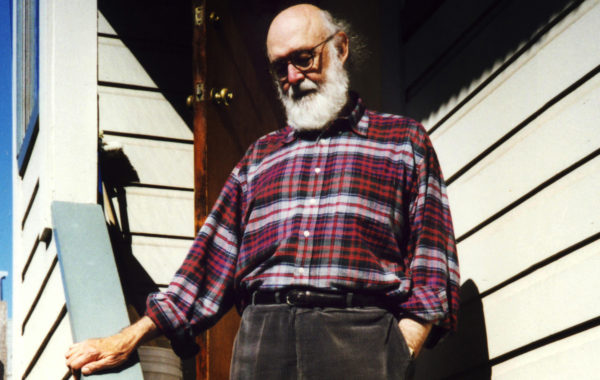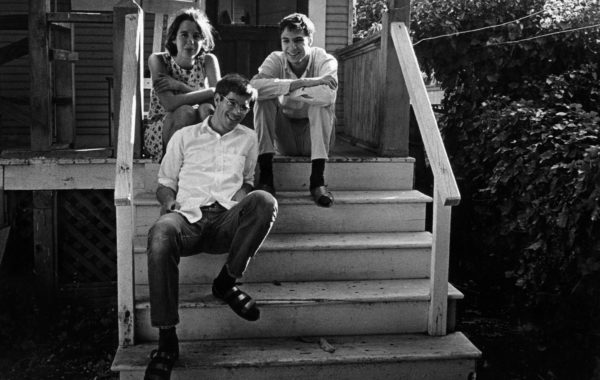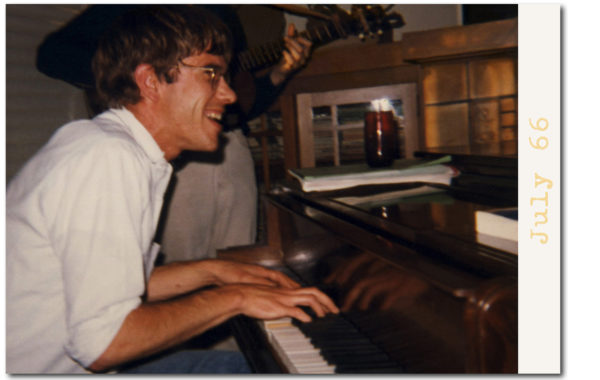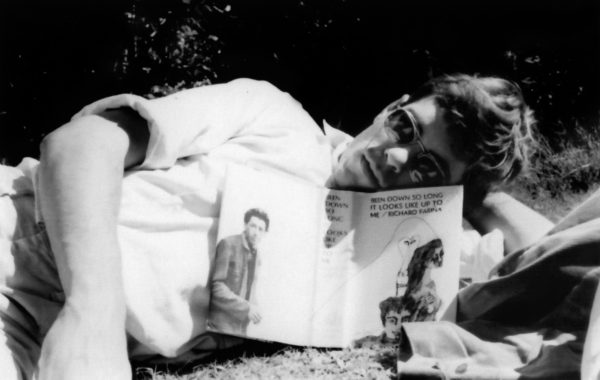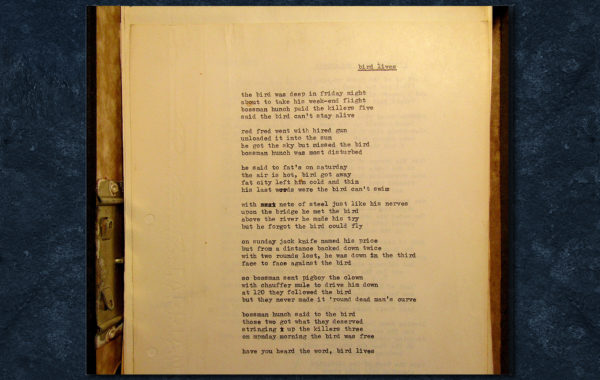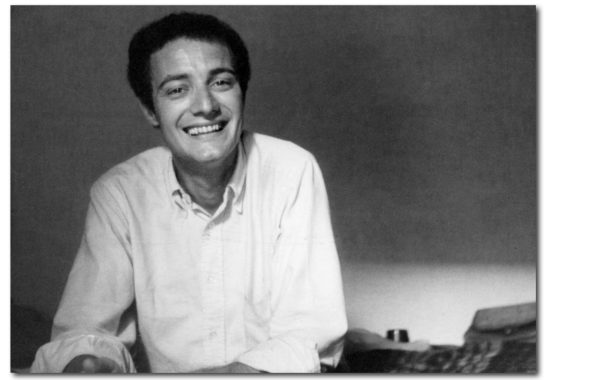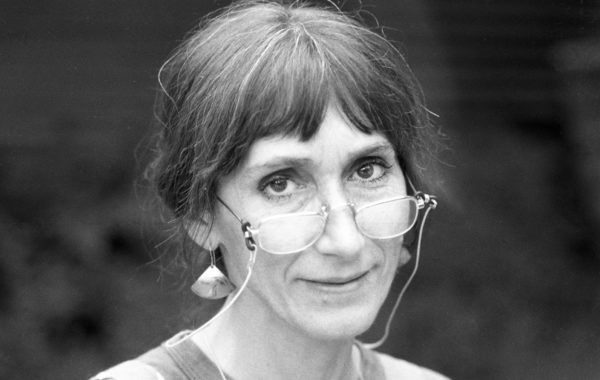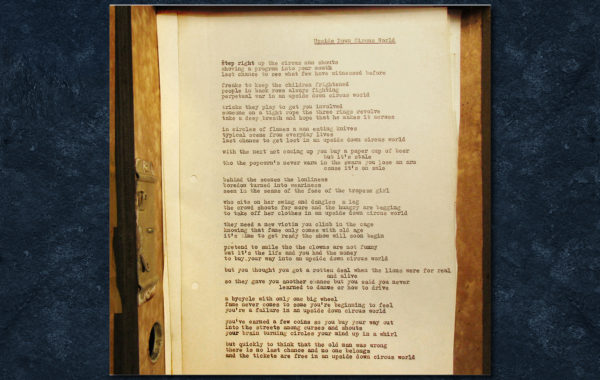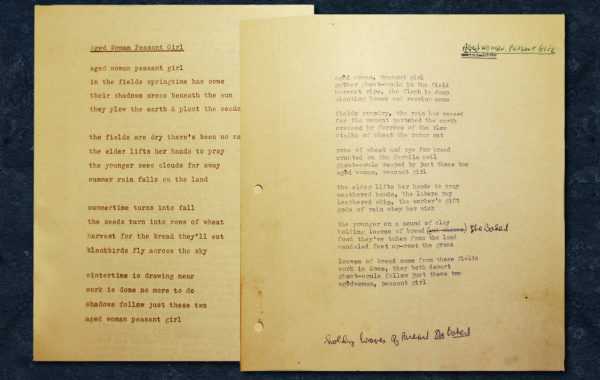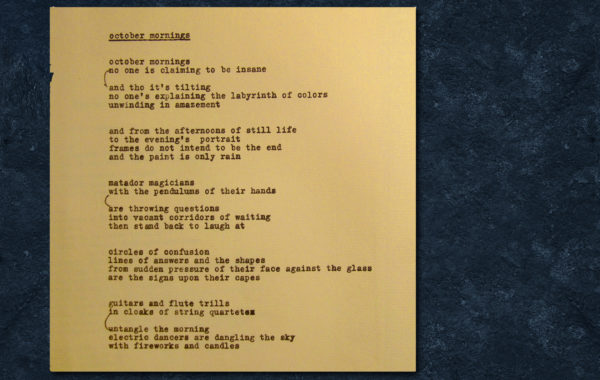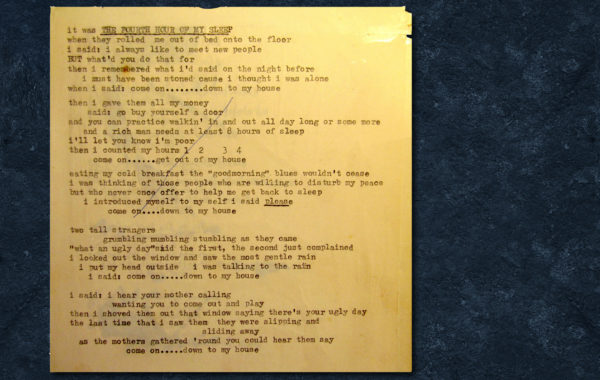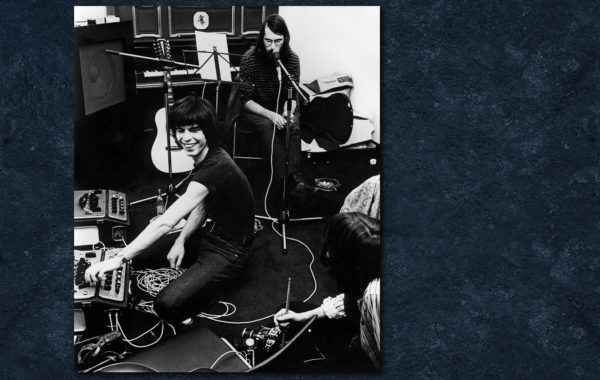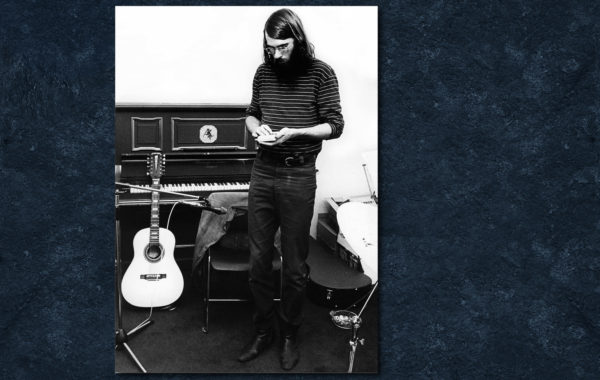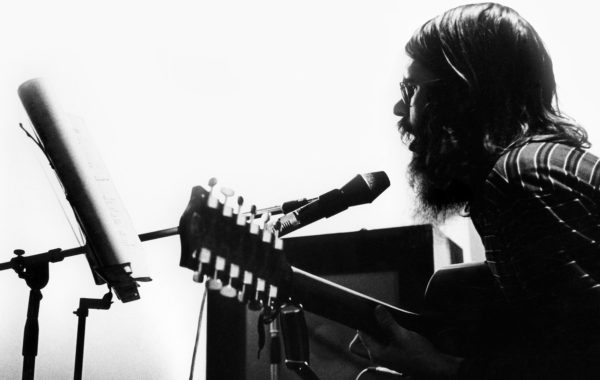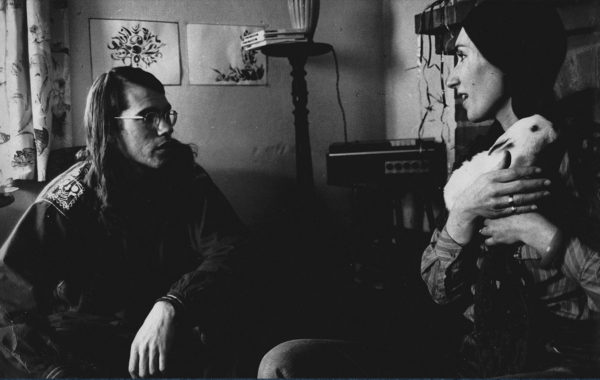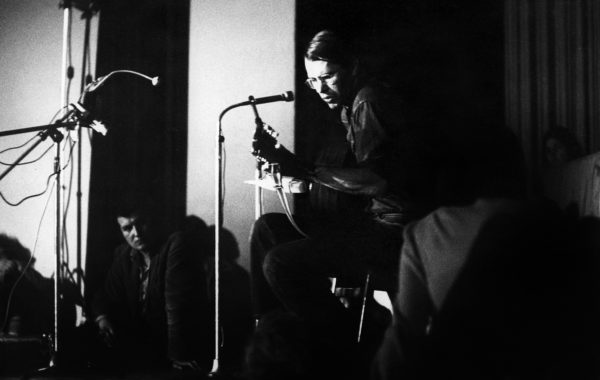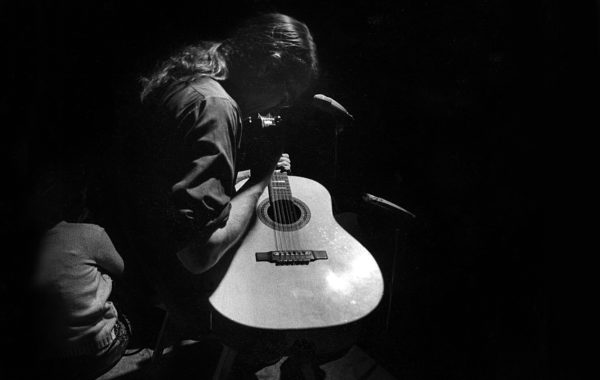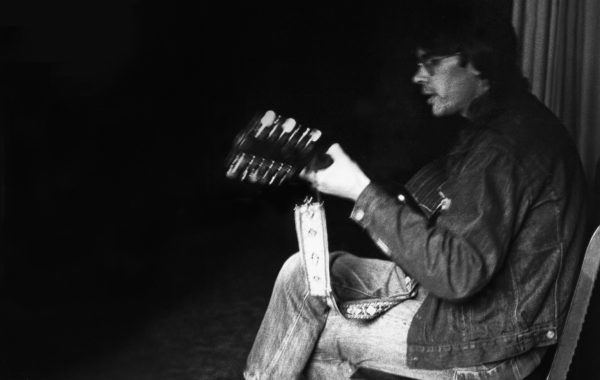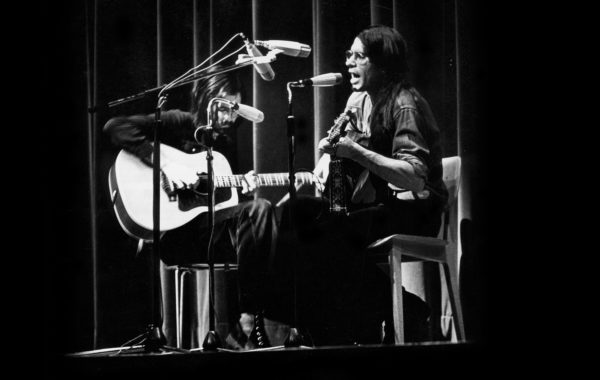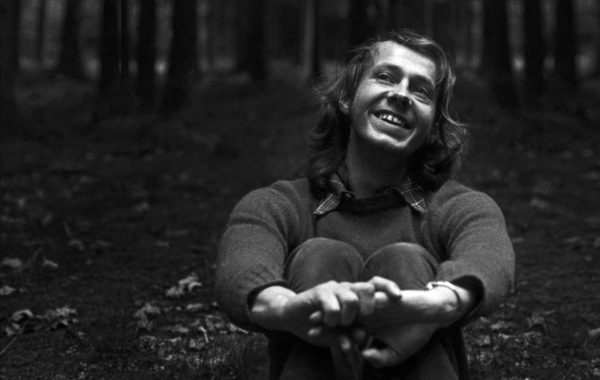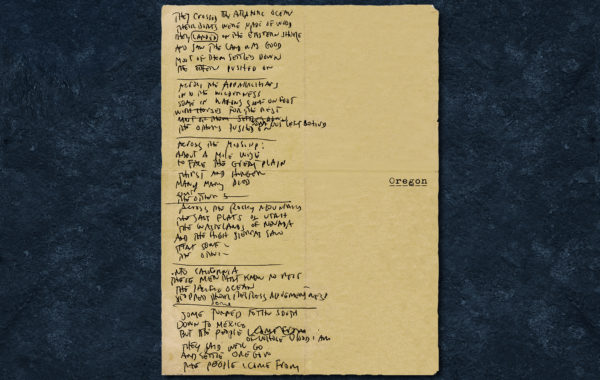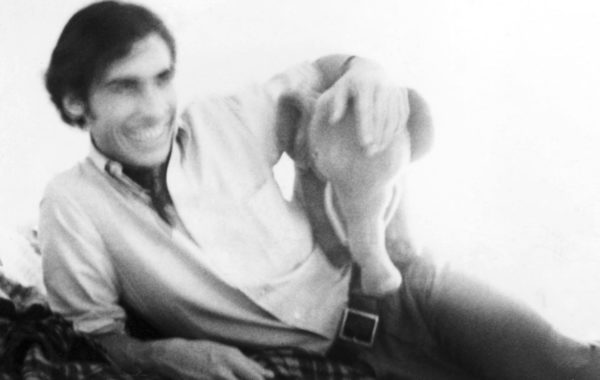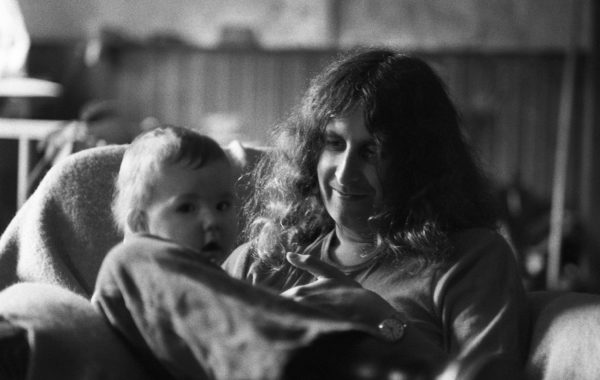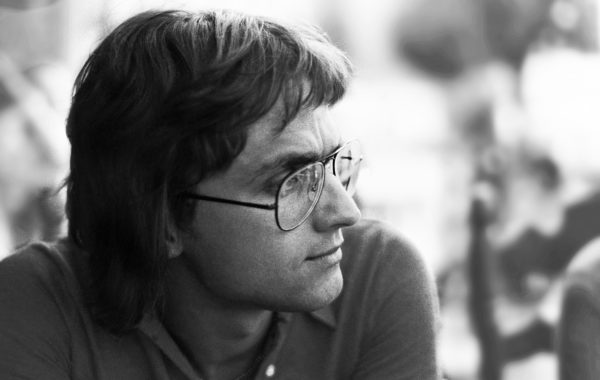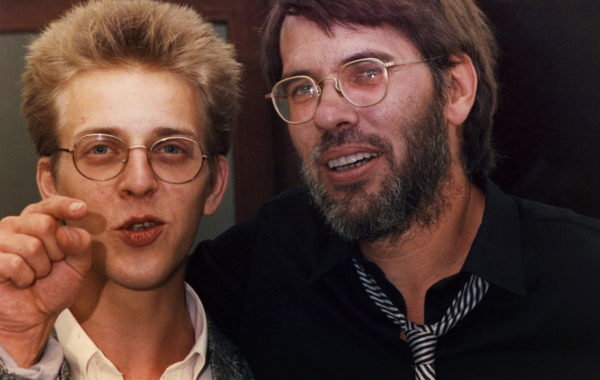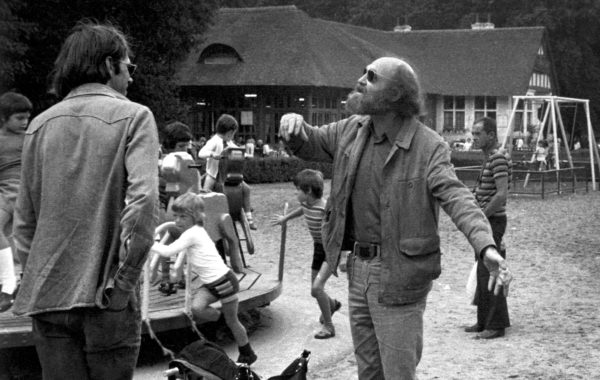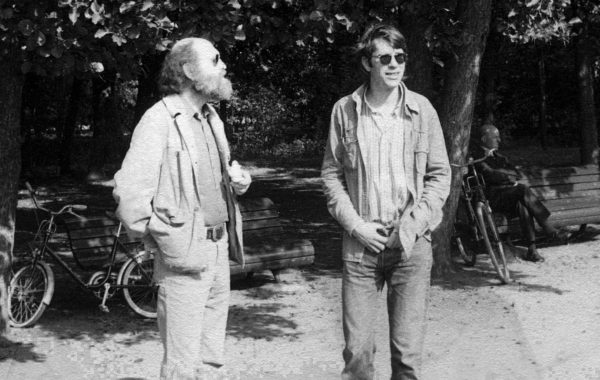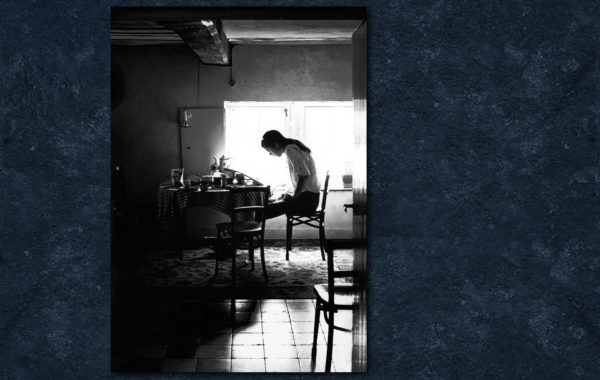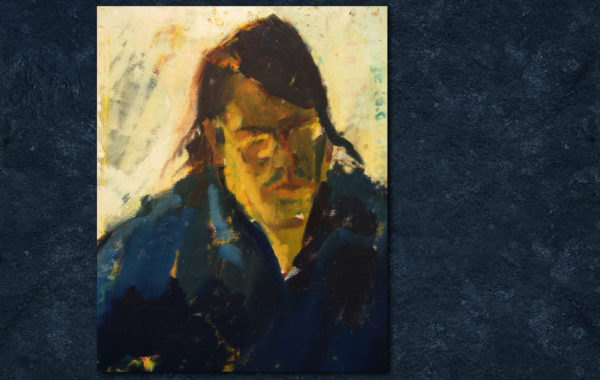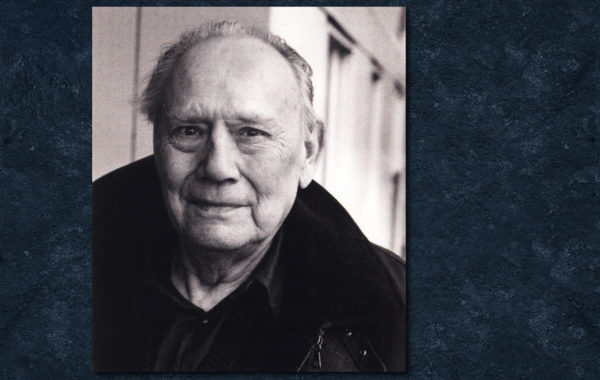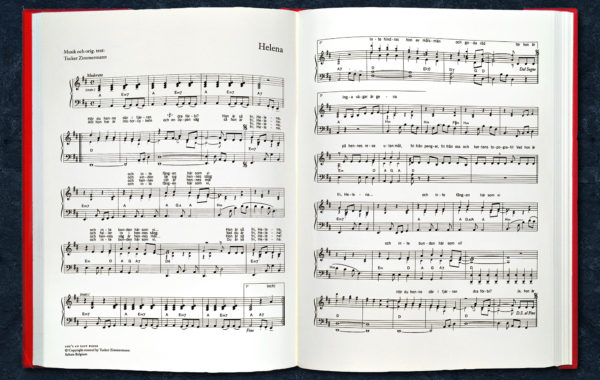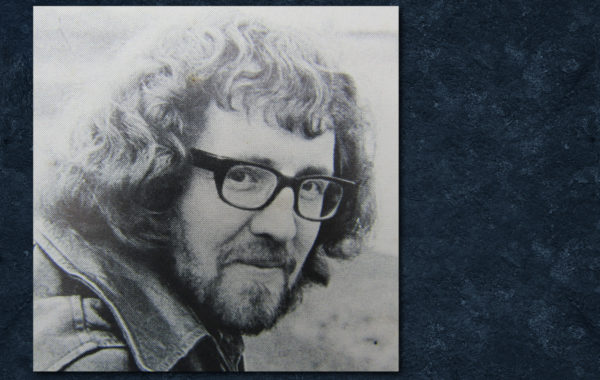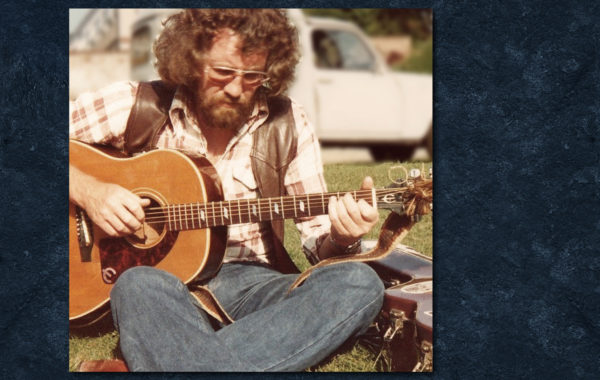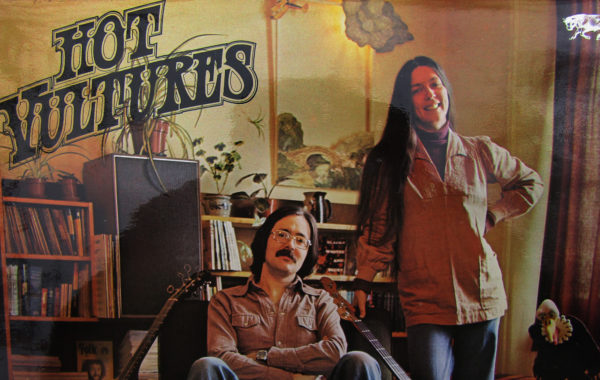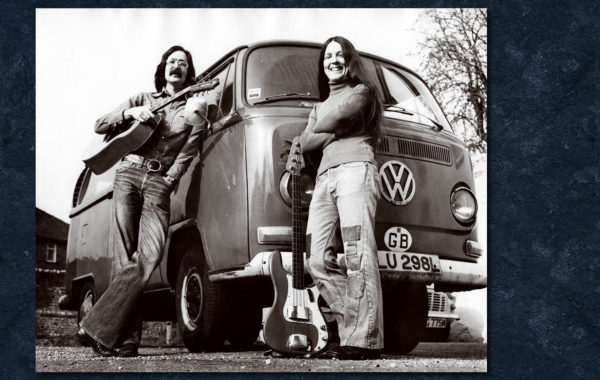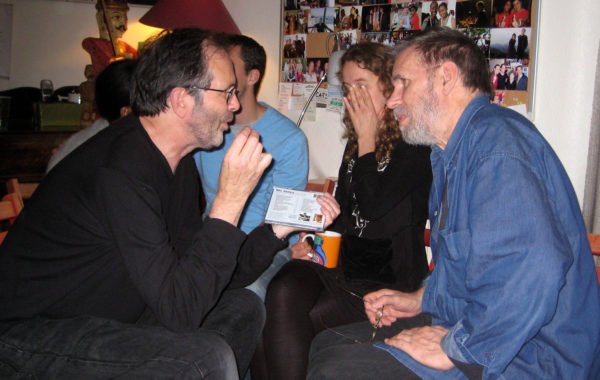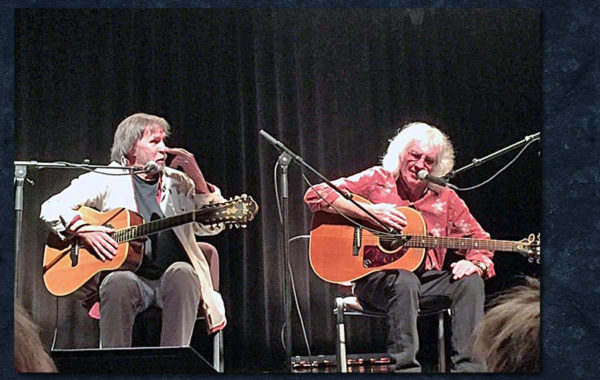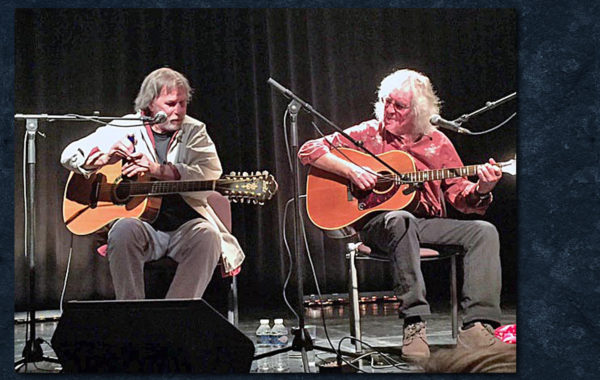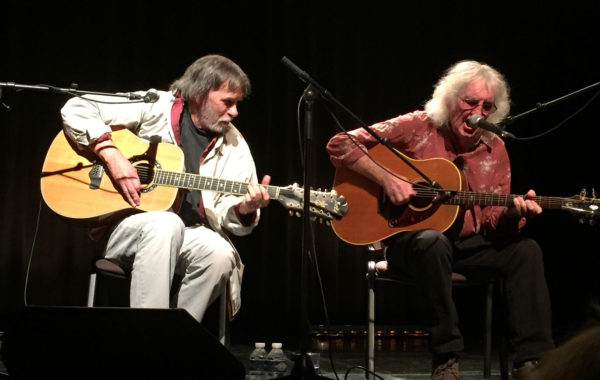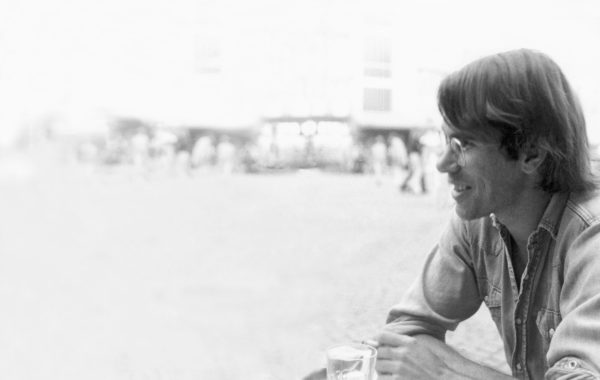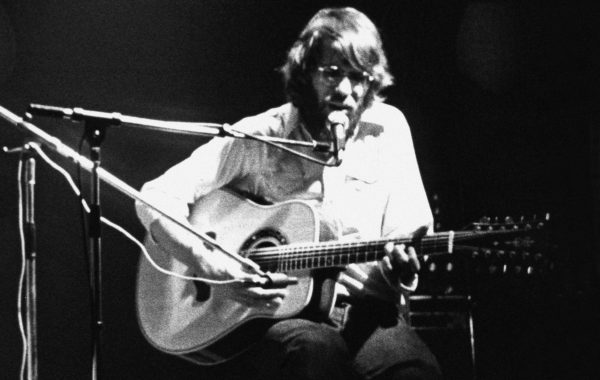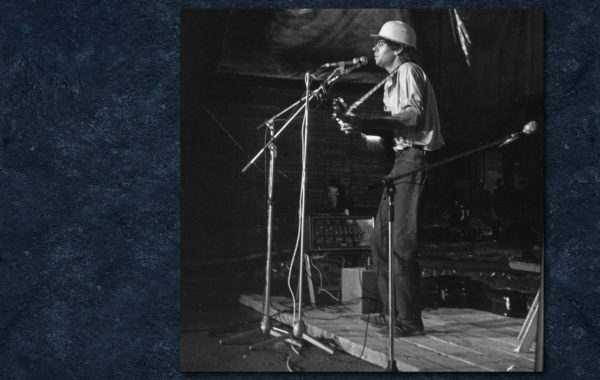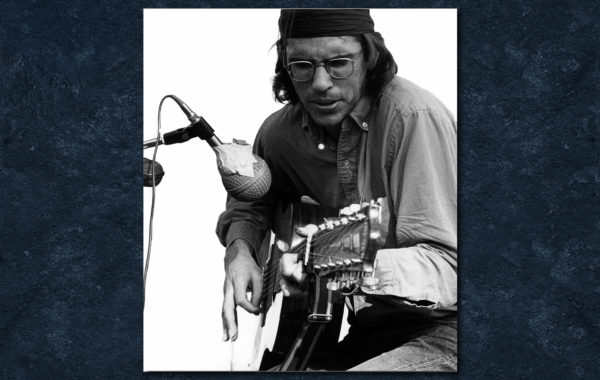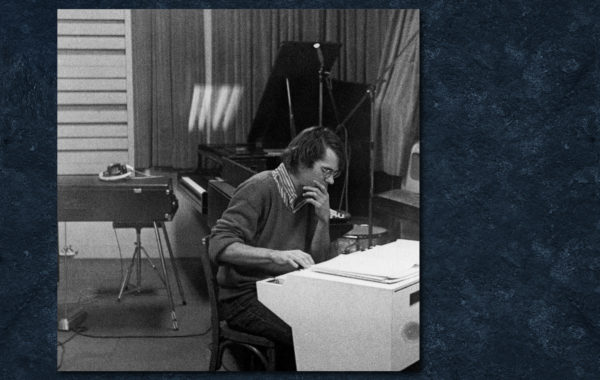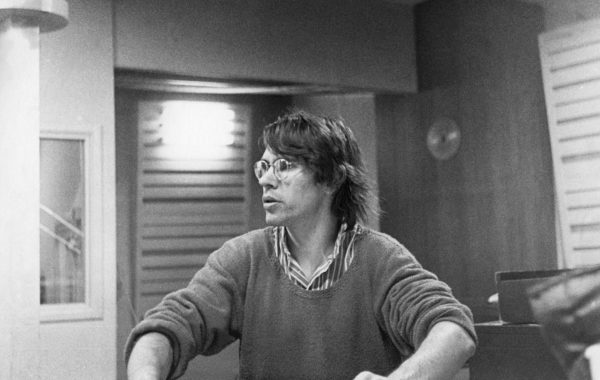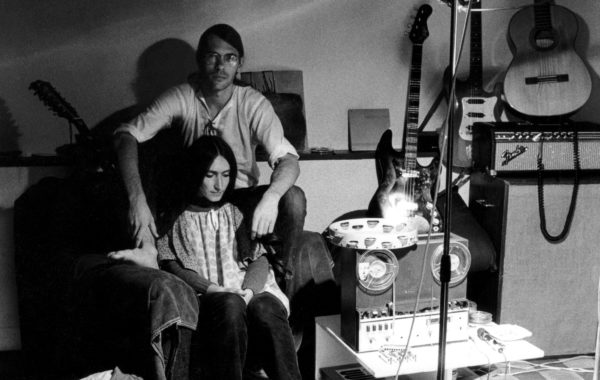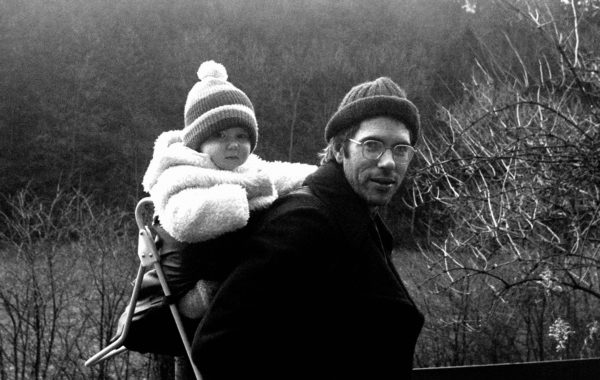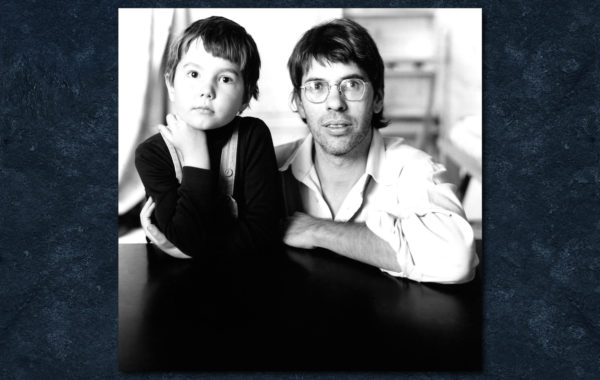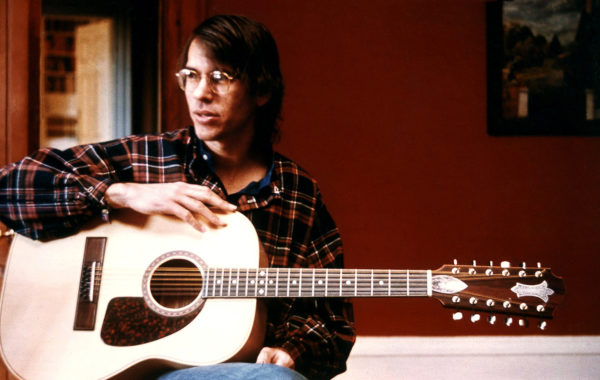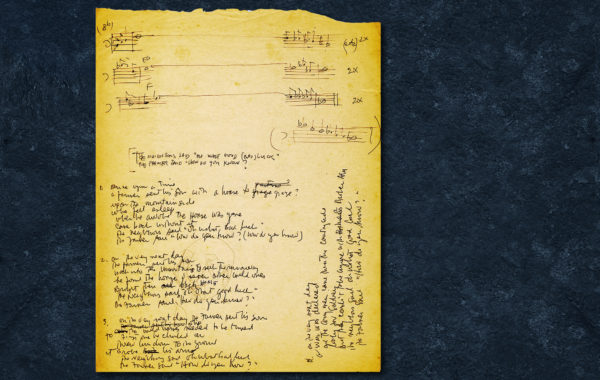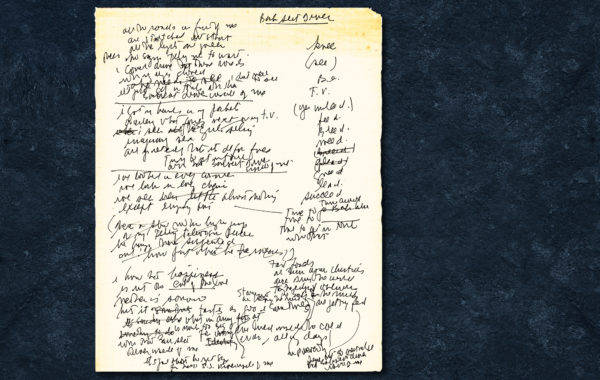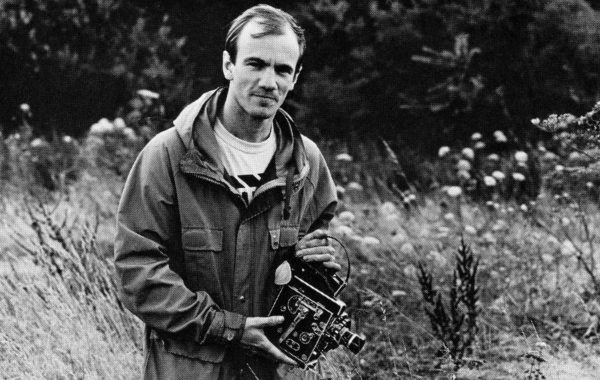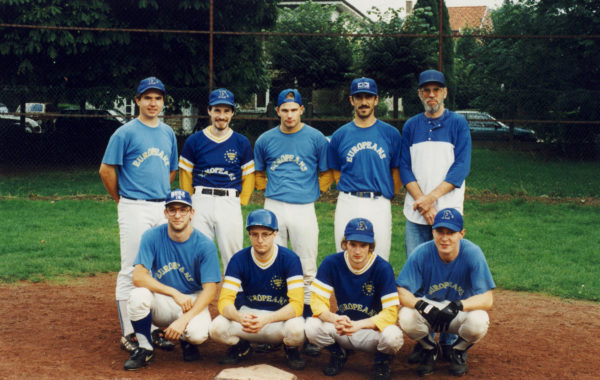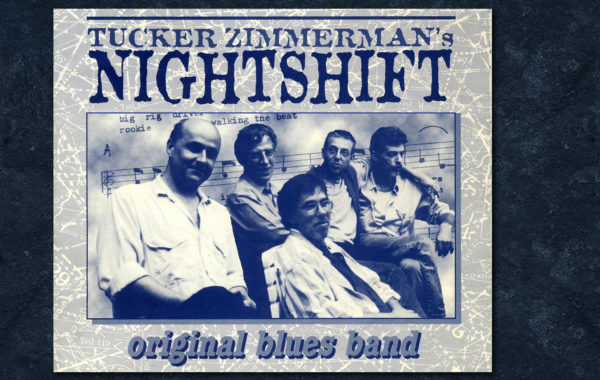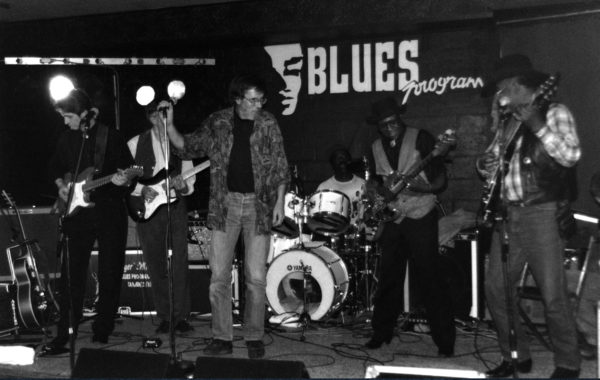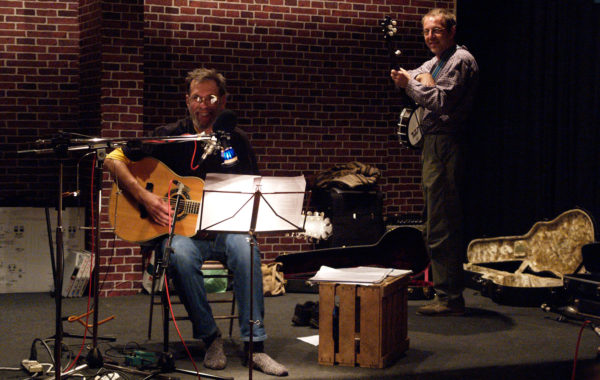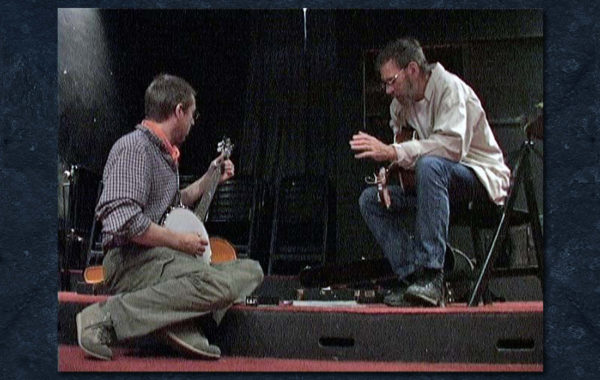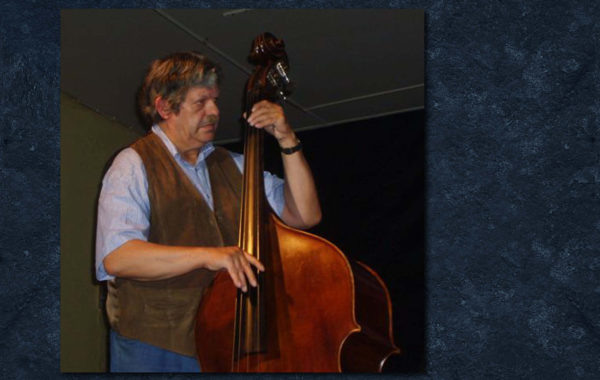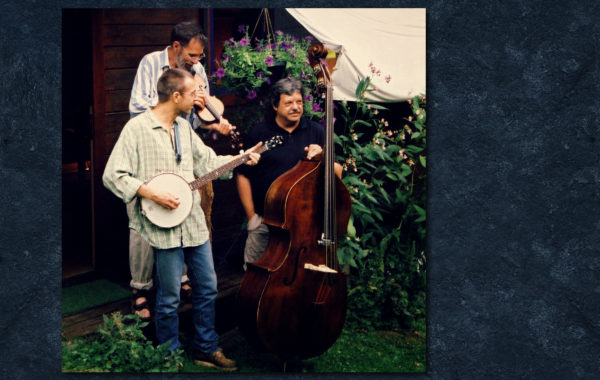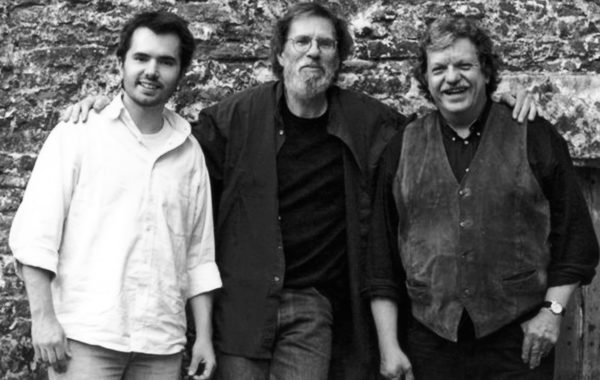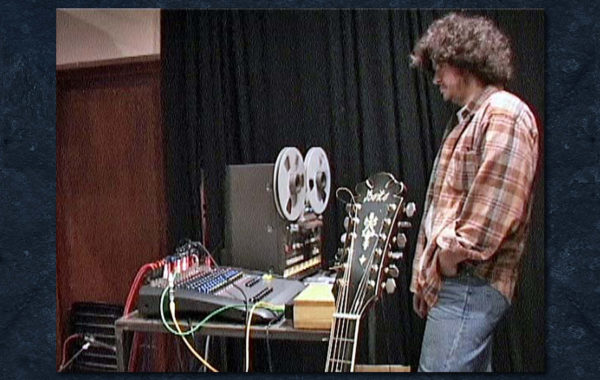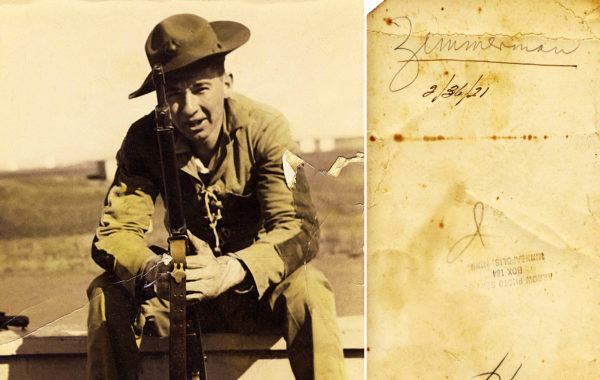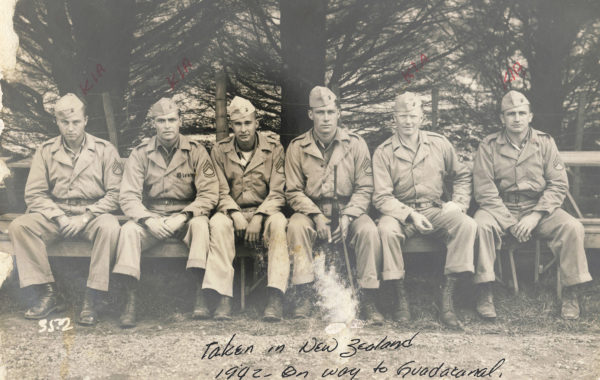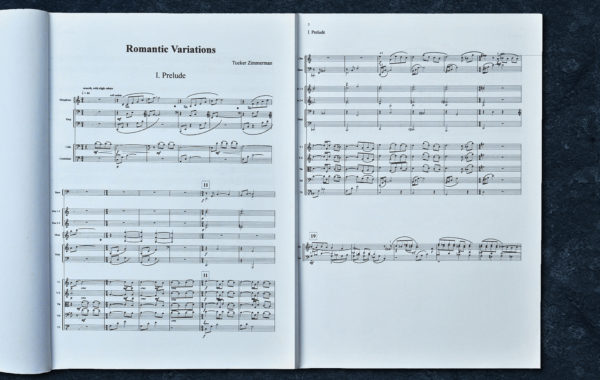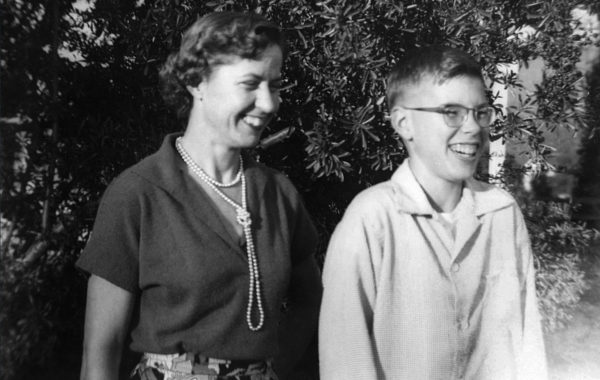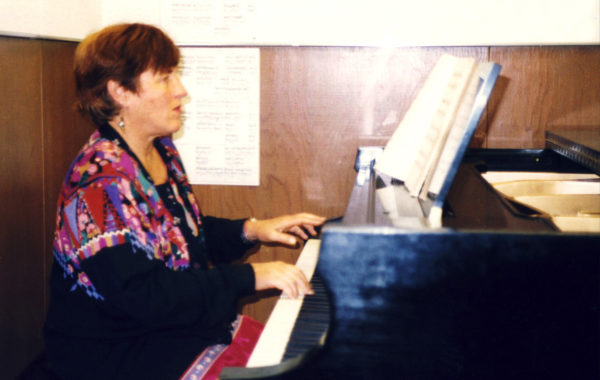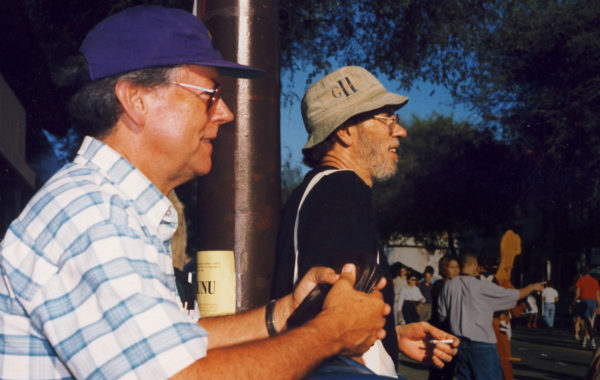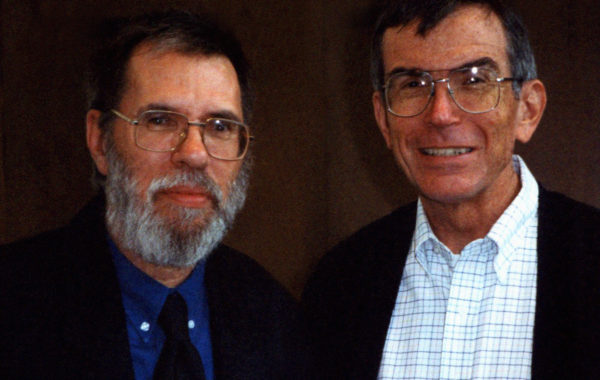BIOGRAPHY
SHORT BIOGRAPHY
TUCKER ZIMMERMAN was born February 14, 1941, San Francisco California, studied music there from the ages of 4 to 25, and completed his studies at San Francisco State College (now University) in theory and composition in 1966.
In 1965 he began writing songs (words and music) for his own voice with harmonica and guitar and to date has written over 800 such songs.
In 1966 he received a Fulbright Scholarship to study composition in Rome, Italy with Gofreddo Petrassi. In 1967 the scholarship was renewed for a second year. During this time he began to perform his songs in various folk clubs in Rome.
After a two-year stay in London where he recorded his first album of songs, he returned to the continent and began living in Belgium. From 1970 to 1984 he played hundreds of solo concerts all over Europe, especially in Belgium, Switzerland and Germany where he was regarded as a « song poet ». During this period he also continued to write songs and recorded 5 more LPs. In 1984 he stopped touring as a solo performer. His creative output from then until 1996 was divided into two media: musical composition and the writing of fiction.
In 1996 he returned to song writing and performing, first with a blues band, and then with his own Nightshift Trio. He continues to be active with his trio. He also continues to write poetry/fiction and to compose music for various acoustic ensembles.
AUTOBIOGRAPHY – CHAPTER I
1.
I was born in San Francisco, California at sundown on February 14, 1941 – sun in Aquarius, moon in Libra, Leo rising (for those who might be interested in that sort of thing). My father’s side of the family came from Bavaria in the 1860s and settled in Asheville, North Carolina. My Grandfather, Joseph S. Zimmerman, was an architect and a violin maker. I was told as a child that he designed the state capitol building of North Carolina. I was also given a violin that he made, which I have to this day and upon which I took my first music lessons at the age of four. There is a rumor that his brother was the same Charles F. Zimmerman who invented the autoharp. Another rumor says that Ethel Merman, the singer, was a great aunt of mine and that Harry Zimmerman, the 1940s Hollywood bandleader was a half-uncle. My father’s older brother, Charles Tucker Zimmerman, was an all-American lineman from Wake Forest, but his future as a professional football player came to an end with the start of World War Two when he joined the navy. My dad had already left home at 15 and, lying about his age, joined the Marines when he was 16. He was already married and I was already born when the Japanese bombed Pearl Harbor. He re-enlisted in the Marines and my mother divorced him. I didn’t see him again until I was 24.
My mother’s side of family came from Scotland way back around the time of the American Revolution. The McCullough clan. I don’t know much about the McCullough clan tho I grew up in their embrace. They came to California during the depression. Grandpa McCullough had been a farmer and my grandmother had been a schoolteacher in Illinois. In San Francisco we lived as an extended family – grandma, grandpa and their three daughters and their husbands and all their children – in a single house on 5th Avenue, just down the hill from the University of California Hospital. I was the first of the cousins to arrive and my father was the first of the husbands to leave. Since the three sisters had day jobs downtown, I was raised by my grandmother. She taught me to read and write when I was four – long before I went to school. We would sit at a blackboard in the kitchen and go thru the alphabet. She would read me stories, then I’d read them back to her. Her favorites were fairytales from Grimm and Hans Christian Andersen. My mind without a doubt would have been permanently warped at an early age by those grotesque tales if her readings had not been balanced by stories from Winnie the Pooh and Uncle Remus. I remember some ferocious earthquakes and I remember the boarded windows and the city-wide blackouts at night during the war. Hushed, fearful whispers that Japanese submarines had been seen cruising around the San Francisco Bay. I also remember the visit of Clarence Dobson, black sheep brother of my Aunt Aline’s husband, Hank. One day when I was about five he appeared at the door with a beat-up steel string guitar and a bottle of whiskey. My grandma quickly sent me upstairs to my room to keep me from being contaminated by this wild creature, tho I later snuck down the stairs when everyone was gathered in the living room to hear him sing his songs. I don’t know whose songs he sang, perhaps some were his own, but I do recall a couple had some pretty rowdy lyrics and at least one was deep on the raunchy side. Late that night I was awakened by a commotion in the upstairs hall. I peeked out my door and saw that Clarence, staggering drunk, babbling like an idiot, had been caught trying to sneak a loose woman into the guest bedroom. From that night on I had two adults I wanted to grow up and be like. Grandma and Uncle Clarence. The puritan and the free-wheeling rascal. The Saint and the Sinner. To this very day I still feel the tug of war these two are playing with my soul.
When I was in the second grade my grandma thought it would be a good idea if I stayed after school for an extra hour each day to take special French lessons. I didn’t learn much – boite, crayon, plume, tableau – and I quit after a few weeks. Not even my grandma could have had the foresight to know that I would eventually spend half of my life in a French-speaking country.
In the third grade I got to see clearly for the first time. Because of alphabetical seating I was stuck in the last seat of the back row. I squinted and tried to copy what the teacher wrote on the blackboard but it was hopeless. Grandma saw the weird squiggles I brought home in my notebook and quickly figured it out. I needed glasses. They tested my eyes. Technically blind in one eye (20/800) and extremely myopic in the other (20/200). With corrective lenses they brought me up to 20/40 in my right eye. It was a revelation. I could see colors. Peoples’ faces. I saw my own face in the mirror for the first time. It wasn’t until 50 years later that I learned the truth about my left eye. The Belgian doctor who tested me for a new pair of glasses said – offhand – that there was not much she could do about the left eye because of the scar. What scar? The one you got when you were born, she said. Had to be forceps birth. The doctors had ripped the retina right in two. What gets me most about this revelation is not that the doctors conspired over the years to cover up their mistake, but that they actually had me running around with an eye patch over my good eye, to strengthen the weak, and when all their work failed as it must – they blamed me for the failure. I wasn’t trying hard enough, they said. It was my fault if I couldn’t see. I believed them. That’s what you do when you’re eight years old.
Also in the third grade I almost beat a kid to death with an iron pipe. He was one of the eighth graders who used to hold me down on the sidewalk outside the gate after school and let a huge German shepherd dog lick my face. I would have probably killed the kid right there in the schoolyard, up against the flagpole, if the teachers hadn’t grabbed me and hauled me away. I was frightened, profoundly shaken by the incident, and I often think back upon it and remind myself that the line between the barbarian and the civilized man with his ten commandments is very thin. The incident got my folk’s attention too. I was already on my way to a life of petty crime. My new glasses made shoplifting very easy. Nickels and dimes, candy bars and comic books. At the age of eight I was hanging out with 12-year old boys and getting anatomy lessons from their sisters. My grandma thought a change of scenery would be beneficial. The Dobsons – Aunt Aline and Uncle Henry – were about to move north to a ranch in Sonoma County anyway and it was agreed that I’d be moving with them. To make it even better grandma would be coming along too. It was also not unlikely that Uncle Clarence would drop in again someday. Maybe I’d get a better look at his guitar. Maybe he’d teach me one of his songs. Or maybe – best of all – he’d tell me a story about one of his wild women. I loathed the city and everything about it, especially school. I welcomed the change.
2.
I don’t know where I’d be today without the life that was waiting for me in Healdsburg. Sometimes I think I’d be at the bottom of a deep dark hole, dead or alive, one or the other, but who knows? I was 8-years old and for the first time the world started to make sense. The kids in the fourth grade made me feel at home, showed me how to fit in, became my friends. One of them – Pete Petersen – has remained a close, life-long buddy. Then there was the forest in back of the ranch. Over the next ten years I hiked the hills all the way to the coast – 30 miles of gentle wilderness – with a hunting knife in my belt and a sleeping bag slung over one shoulder. I spent nights out there. I wandered in the wilderness. I discovered I liked to be alone. I read my first adult novels on these hikes. Zane Grey. John Steinbeck. Jules Verne. Their images are printed vividly forever in my mind and have probably influenced every story, poem and song I’ve written since.
Healdsburg didn’t have a violin teacher in 1949, but I wasn’t too disappointed. I didn’t even think about music for the first couple of months. Then school started and I tried out for the band. I wanted to play trumpet. All the impressive guys played trumpet. I wanted to make a big impression. But the bandmaster – Charlie McCord – took one look at me and said you’re a trombone player. And so I was. I was soon taking private lessons from Charlie and piano lessons from his wife, Florence. One buck each. I remember leaving the dollar bill on the edge of the piano and Florence pretending it wasn’t there. The McCords treated me as a special person. They said I had talent. I disappointed Florence a great deal. The piano really didn’t interest me very much and I seldom practiced. However I got to be quite accomplished on the trombone. Charlie McCord was a retired U.S. Army bandmaster from the Presidio in San Francisco and he tolerated no monkey business. I practiced hard for him and I became his prize student. I gave my first public performance when I was ten. It was a hot, summer night in the town square. The Plaza. This was before television. Everybody came out on Saturday night, sat around on the grass, eating sno-cones and gossiping under the strings of colored lights. I stood up on the bandstand and – with Florence banging away on a piano – I slush-pumped out the melodies of Far Away Places and Jeanie with the Light Brown Hair. The crowd applauded. I was hooked. Thruout my elementary and high school years Band was the only class that held my interest. I got poor grades in every other subject. In my three years of high school I was selected to play in the California Youth Symphony. At graduation Pete gave his valedictorian speech and I played my trombone solo. Some of my classmates – these forty odd years later – still think of me as a trombone player.
I enjoyed playing the trombone, but the repertoire itself seemed dusty and stale. Stephen Foster tunes were about as good as it got, but they belonged to another generation. I wasn’t desperate tho. My heart was already captured by another kind of music. When I was ten, on one of my infrequent trips down to the city to see my mother, I discovered the musics of Leadbelly and Moondog. Left alone during the day in the flat while my mom was at work, I amused myself by playing thru her record collection. She had a huge collection of Dixieland, some of the old time stuff from New Orleans with the Preservation Hall Jazz Band as well as San Francisco’s Yerba Buena Jazz band with Lu Waters and Turk Murphy. I especially liked the sound of Murphy’s barrelhouse trombone and I would play along with these tunes on the record player, doing my best to imitate every note. For a very short period of my young life my biggest aspiration was to grow up and play in a 5-piece Dixieland band. However, on one particular visit, I put on a couple of records I’d previously over-looked. One was an extended EP, 45 rpm – a live recording of Moondog playing on the streets of New York. The instruments he played were of his own invention – all percussive – with names like Utsu and Trimba. One of his pieces was called Fog on the Hudson. Another was called From One to Nine – “nine quarter beat rhythms in Snake Time.” I loved the idea of music being played in Snake Time. Moondog also recited a few of his poems on this recording, crazy couplets that stood out like neon lights in my brain as cars honked horns in the background. Moondog was a unique and fascinating man, and one of the finest moments in my life came 25 years later (1975) when after a playing a gig in the small German town of Recklinghausen I was invited to Moondog’s house for a visit. We talked for three or four hours, almost till dawn, me sitting cross-legged on his bare floor while he squatted before me, blind, white bearded, clothed in a robe of colorful silk scraps he’d sewn together himself which made him look like a rare tropical bird. He advised me never to forget the importance of counterpoint. But back in 1951, Moondog was merely a distant, eccentric man, playing some very eccentric music on what was to become a very rare recording. I didn’t get him into focus until a few years later when I was in college and started to compose music myself.
The other recording was a 10-inch long play on Folkways, edited by Alan Lomax for the Library of Congress. There was no picture on the blue-pebbled cover. Just a pasted on label that said TAKE THIS HAMMER: LEADBELLY. On the record were a dozen solo performances. Green Corn, Grey Goose, Good Morning Blues, Goodnight Irene. On one tune he played piano, Big Fat Woman, but on all the others he played a guitar that stopped my heart and made time stand still. His voice was peculiar and high pitched, and I was excited by the idea that a musician could give himself such a crazy name, but his guitar was the most special thing about him. I later learned that it was a 12-string, and from that moment on I vowed that if I should ever play guitar someday it would have to be a 12-string.
Meanwhile, back on the ranch at about the same time (1951), I was busy discovering yet another kind of music. One hot day that summer I was idly pawing thru some junk in the spare room when I came upon an old radio that had been discarded. My grandma’s. She said it was broken. I could have it. I was at a strange period in my life when I enjoyed taking apart complicated pieces of machinery and appliances and never putting them back together. I was getting ready to attack and demolish the radio, in fact I had just removed two of its five vacuum tubes, when I got the idea of sticking them back inside the wooden box in their wrong places. I plugged in the radio again, half hoping that it would explode, but instead found that it had switched on and was in perfect working order. I took it back up to my room and rolled the dial thru a lot of static until I came to a station broadcasting the most amazing music I had ever heard. A piano tune with sax and drums and a voice that rose from the guts and cried out thru a smoky throat. After the tune was over the man on the radio said that was The Fat Man – Fats Domino – and then he played another piano tune from New Orleans by Professor Longhair. Tipatina. The only music I’d heard on the family radio was by crooners, fake jazz swingers, and manufactured schmaltz from Tin Pan Alley. This Fat Man and Professor Longhair were real people singing real music. The next day I rigged up a copper wire from my room on the second floor down to the chicken house. A super antenna. It pulled in the station without a trace of static. It was KWBR down in Oakland and the announcer was Bouncin’ Bill Doubleday. I listened to this station every spare moment I had – from 1951 to 1958 – after school, on lazy summer afternoons, always at night before going to sleep. This music settled deep into my dreams. I heard all the great voices: James Brown, Muddy Waters, B.B. King. Roscoe Gordon, Little Richard, Bo Diddley, John Lee Hooker, Jimmy Reed, Ray Charles. I heard all the great vocal groups. The Penguins, the Five Satins, the Four Deuces, the Medallions, Hank Ballard and the Midnighters. This music stirred my soul, altered my mind, changed my life. I didn’t know what these singers looked like, and in fact it didn’t occur to me until much later that they all had dark skin. All I knew was that they were real people and their music was authentic. It was an honor to be in the presence of their voices. I’m still influenced by these great, sometimes unknown, often neglected artists. At first they called it Race Music. Then they started calling it Rhythm and Blues. I believe that my real musical life began with the magic sounds that came out of that old magic radio. I took these songs to the piano downstairs (when nobody was around) and figured out how to play them. In the Still of the Night, Earth Angel, Bright Lights Big City, Buick 59, Annie Had a Baby. My aunt once caught me playing Bobby Freeman’s Do You Wanna Dance and told me that I would probably go to hell if I continued to sing that kind of music. That comment fueled my rebellion even more and actually for a few moments one day (when nobody was around), I really did sound like Hank Ballard. That moment might have been the height of my musical career.
Rock ‘n roll came storming in a couple of years later and I was knocked out by some of the artists – Jerry Lee Lewis, the Everly Brothers, Danny and the Juniors, Buddy Holly, Richie Valens, but I always came back to the Fat Man on KWBR, back to Huey “Piano” Smith and Professor Longhair. These were the ones I wanted to imitate.
Healdsburg in those years was a great town to grow up in. I even enjoyed going to school. I played in the marching band for football games and parades. I played in the pep band at basketball games. In my senior year I talked three of the guys in the pep band into a rhythm ‘n blues band. I taught them how to play the Fat Man and others. I gave us a name – the Four Casuals – and we went out and played for local dances and weddings. Our big moment came when we won a contest in Santa Rosa and we drove down to Vallejo to tape a single in a real recording studio. I wrote the tune for the A side. Jammin’ the Blues. We did Elevator Operator for the flip side. The engineering technique in that studio was unique. They put each of us in one of the four corners of the room, stuck a mike in the middle and told us to play as loud as we could. I never found out what those two tunes sounded like, but I was proud to be in a band with a record. There was catch tho. All we had to do was come up with a thousand dollars and they’d print up a few copies and take them to the radio stations. Nobody had a thousand dollars, not even my grandma. Just as well. It was scam. And certainly Jammin’ the Blues was not top ten material. Everything else was one big, cosmic joke. At the Italian weddings we got paid in wine – as much as we could drink. One afternoon at the Country Club I got up and danced on the piano – then passed out, crashing down like a sack of potatoes into Tom Johnson’s drum set. That was The Four Casuals last gig.
A week later I packed my essential belongings in Tom Johnson’s Buick station wagon and we drove south to San Francisco where I was about to go to college.
One curious incident on that 75-mile drive still makes me wonder. Among my essential possessions was a guitar I’d found in the spare room at the ranch. A cheap 6-string that might well have come from a Montgomery Ward catalog. I had never played it and I still have no idea why I was bringing it along. That day Tom was burning rubber all the way down Highway 101 and somewhere past Santa Rosa with Little Richard screaming on the radio, he floored it all the way. The needle climbed past 100 mph, the guitar slid out the open back window and shattered into a million pieces on the black top. We saw it all in the rearview mirror. Tom didn’t even slow down. “It’s a goner,” he said. “To the hell with it.” What still makes me wonder is this: if that guitar had survived the trip and I had actually learned to play it in 1958, what kind of songs would I have played? Or would I have started writing my own songs and what kind of songs would they have been? As it turned out, seven years passed by before I picked up another guitar, taught myself to play it and wrote my first song.
3.
In 1958 the cheap guitar was a small loss. I was a piano man. During the first week in which I was getting settled in the back rooms of my mom’s flat on Second Avenue (Richmond District), I bought my first piano. An old black upright that was almost impossible to keep in tune. $200. It served me well for 8 years tho. My friend Pete used to drive up from Stanford on weekends and we’d sit around smoking, drinking beer and writing blues songs. I still perform one of them. That’s Life – words by P.J. Petersen, music by T. Zimmerman. We were seventeen years old. Pete’s ambition was to become a bum. My ambition was to become a dirty old man.
I loved San Francisco this second time around. It’s just not a kid’s city that’s all. It’s for adults and ageing teenagers who can’t wait to be 21. I had my trombone too. I had a future as a player in some symphony orchestra or as a studio musician down in L.A. I played in a couple of jazz groups. I played in a big band. Count Basie charts. I was lousy at improvisation but I could hit all the high notes and the music was a kick. My life was all mapped out ahead of me.
Then I walked into my first theory class with Robert Morton at City College. Within the year I had sold my trombone and I was composing my first piece of music – a Debussy imitation for piano called Le Silence de la Nature (echoes of those after-school French lessons in the second grade) (echoes too of Rimbaud whose opium-addled poetry I was devouring). I studied privately with Morton for two years. Imitative composition. I wrote the first movement of a Mozart piano sonata for him, then a Beethoven Sonata, a Chopin Etude, a Mendelssohn Scherzo, a Schumann Fantasy, a Brahms’s Intermezzo, a Wagner interlude, a Debussy Prelude, and a short piece that might have been part of a Stravinsky ballet. Morton then demonstrated the rules of 12-tone music, gave me a recording of Boulez and Stockhausen and sent me out into the world telling me that I was on my own. He was a great, grouchy teacher. A perfectionist. Very demanding. I owe him so much.
Those first two years back in San Francisco were filled with other amazing wonders. I discovered the poetry of Ginsberg and the prose of Kerouac. I walked in sandals around North Beach on weekends, chain smoking Lucky Strikes, squirting wine into my mouth from a Basque leather flask, looking for Beatniks and hoping maybe that I could become one. I began to write poetry. I read hundreds of books that I never imagined existed when I’d taken those long hikes in the forests behind the ranch. Walt Whitman. Kenneth Patchen. Henry Miller. Thomas Mann’s Doctor Faustus was about a 12-tome composer. I read it over and over. I haunted the City Lights bookshop. I sat in their basement and read Alan Watts and Philp Wylie. I came home with books filled with translations of Japanese Haiku and Chinese quatrains. I read and re-read the essays of Aldous Huxley, C.G. Jung and P.D. Ouspenski. I didn’t understand half of what they said, but I underlined passages anyway, hoping that someday I’d come back and be able to make sense of them all. I memorized entire poems of e.e. cummings and T.S. Eliot. Winnie the Pooh made a come back and Alice in Wonderland also made her re-appearance at this time. These I understood. These still bear their influence. The Jabberwocky is still one of my favorite poems.
Then there was all that jazz. Horace Silver. Thelonius Monk. Cannonball Adderley. Wes Montgomery. Lambert, Hendrix and Ross, the Modern Jazz Quartet. Still underage, I snuck into the Jazz Workshop on Broadway, hid behind the cigarette machine and let the hard boppers from the east coast fill my head with their chromatic madness. Down at the Blackhawk at Turk and Hyde I caught every set of Cal Tjader, Shelly Manne and other cool cats from the west coast. I was there all three nights, seated at the front table less than 3 feet from the podium when Miles Davis and John Coltrane teamed up to work out the tunes they would later record on Kind of Blue. I talked to some of the musicians, had rewarding conversations with Curtis Fuller (trombone), and John Lewis of the Modern Jazz Quartet. They both spoke of Schoenberg, Webern and Berg. Lewis showed me his analysis of Bartok’s Fifth String Quartet.
4.
Between my first and second years of college, needing a summer job, I signed up with the U.S. Forest Service as a firefighter. They sent me north – to Lassen National Forest, to the ranger station in Fall River Mills. The fire camp – Jellico – was old railroad work camp for the Western Pacific and I shared the bunkhouse with seven other guys. I didn’t have any music with me but I had my poetry. Waiting for fires, I sat on my bunk and wrote page after page of free verse. This soon provoked a hostile reaction from half of the crew, the card players I never joined. They teased me about my poetry. Taunted me. I ignored them. They continued to bait me. The affair boiled over one night when one came over to my bunk and dumped me on the floor. For a few moments I went blind with rage. I was back in the third grade with that iron pipe in my hands. I knew I was in a fight, that we were kicking up a lot of dust, and when I got control of myself less than a minute later I found I had shoved my attacker up against the wall and was pressing my elbow into his windpipe. I was determined to strangle him. It was the frightened look in his eyes that frightened me. I pulled back, puzzled by the extreme violence into which I had plunged. The fight was over tho, and it had a curious outcome. From that night on the fire crew respected me and my poetry. They’d gather around when I’d finish a poem to hear me read it aloud. On a fire, when we’d bump into a crew from another district, they would proudly brag that they had a poet among them, and if any of these other firefighters had suggested that writing poetry was anything less than a man’s job, they would have had to face the seven guys of my crew in a knock-down, drag-out battle. My original attacker, Cap Jacques, became one of my best friends. I saw him down in the city when I went back in school and I saw him again the following summer when I traveled back north for another 3-months with the fire crew.
That second summer with the Forest Service evolved in an unexpected direction. Early in June, the lookout on Soldier Mountain – old Eagle-eye Aaron, had trouble with his eyes and had to come down. The ranger sent me up as a temporary replacement. I stayed. I liked the job. I liked living in a small glass house on top of the world. I liked the solitude. I read a stack of books. I wrote a pile of poems. Every quarter of an hour I’d stroll around the catwalk, my eyes peeled for a sign of smoke in the vast valleys below. I could see east into Nevada, north into Oregon. And always Mt. Lassen stood tall and snow capped to the south. After sundown, while cooking my dinner on the old wood stove, I’d talk with other lookouts on the radio. I liked the job so much that when September rolled around and it was time to go back to school, I asked to be kept on. I stayed on Soldier Mountain until after Thanksgiving that year – and came down to Fall River Mills with the first snow. When the district ranger offered me a full time job, saying he’d make me a fire crew boss the following summer, I decided to drop out of college and spend my life with the Forest Service. And I might have stayed if not for one small revelation that I experienced about three weeks later. I’d been put in charge of a thinning crew. It was my job to walk ahead of the chainsaw gang, to choose the trees to cut down and mark them with a paint gun. I eventually learned that the 200-acre stand of pines we were thinning had already been sold – 25 years in the future – to a private company that manufactured toilet paper. I also learned that most of the fires I had fought in my two summers with the crew – some 60 fires in all – were also stands of timber the Forest Service was protecting for the same private interests. I resigned. I had better things to do than protect America’s future supply of ass wipes. I had music to compose. I had a more meaningful life to pursue.
5.
The fifties slid into the sixties. San Francisco was an exciting place to live for the next five years. There was nothing visible on the surface. The Beats were retired to their homestead land in Big Sur and their adobe huts in Mexico and the Hippie movement, the Counter Culture, the Underground – call it what you will – was merely bobbing around in embryonic form. There was a folk scene in Berkeley. Joan Baez lived just down coast in Carmel. Jerry Garcia played in a jug band. So did Country Joe. John Cage came to town and created joy and confusion. Nothing specifically sensational was in sight, but everyone could feel it. The vibrations. A vital force shifting beneath of surface of the streets. Maybe it was simply the next earthquake preparing its destruction, or maybe some aberration of mind left over from the media-amputated beat scene.
I began to compose my own music. A Cello Sonata. A String Quartet. In 1962 I painted apartments in the Haight-Ashbury at night and later moved into one up on Downey Street. We were all students. It was the cheapest rent in the city. I was now at San Francisco State College studying for a degree in theory and composition and studying privately with Henry Onderdonk. I composed an elaborate set of variations for solo piano. The day JFK was shot, I sat down at my piano and wrote the Aria that would become the theme of these variations. I sat at my piano for the next four months, 14 to 16 hours a day. I forgot about my part-time job as a janitor at Woolworth’s. They phoned up after three weeks and told me I was fired. I couldn’t have cared less. I had better things to do than to sweep floors and stock shelves with crap. I cut classes. Henry understood and covered for me. When the piece was finished he introduced me to Ellen Southard, one of the finest performing musicians I’ve ever met. She played my Piano Variations many times in the years to come up and down the west coast and all the way over to Amsterdam in Holland. I set a few poems by e.e. cummings to music. I composed a Cantata on texts of Thomas Wolfe. Henry guided me thru each piece, showing me what I really was attempting. He taught me how to listen. He opened my mind to a thousand musical nuances I never suspected the existence of, such as the way three flutes sound when playing the same note. I had other excellent teachers at State who gave lessons which have served me well over the years. Wayne Peterson taught me the fundamentals of orchestration and Alex Post taught me discipline in counterpoint (both 16th and 18th century). However Onderdonk’s classes in advanced analysis excited me the most. He introduced me to the work of Luigi Dallapiccola, the Italian serial composer. Later, in 1966, when I expressed an interest to study with Dallapiccola, Henry urged me to apply for a Fulbright scholarship. Henry became a close friend. A mentor. He became the father I never had. He died recently. I loved him very much and I will always miss him.
In 1964 my friend Pete got married. I was the best man at his wedding. I had a few girlfriends at the time but getting married to any of them was the last thing on my mind. One by one I saw friends go down the bridal path and disappear from view. One advised me that the time had come for me to also grow up and put away childish things. Thank God I was smart enough to ignore his advice.
Back in the a scene was beginning to blossom. My friend Don Bailey, who’d been close friends with Richard Farina and Thomas Pynchon at Cornell University, introduced me to some powerful white tablets he’d just received from the Sandoz Labs in Switzerland. The experiences I had were very much like those I’d had when I was eight years old and got my first pair of glasses. For the first time I saw my face in the mirror – only this time there wasn’t any mirror. I learned how very suggestible the human mind is – a valuable lesson for survival in this world of endless propaganda and relentless brainwash. All around me were writers, poets, painters, film makers. We all seemed to be doing the same thing, tho the outward manifestations of our work were different. There was a jug band living down the street. Garcia and the Grateful Dead were living one block over. I got involved in Ann Halprin’s dance group. The Dead were playing almost every weekend at the Avalon. I didn’t miss a set. Things were happening everywhere. I started writing songs. Christmas break 1965, a friend dropped off a brand new Spanish guitar for me to hide. It was a gift from his girlfriend but he was leaving her, moving out, and he didn’t want her to steal back the guitar. It leaned against the end of my piano for a couple of days. On the third night I took it out of its case. Rolled up in the accessory box was a booklet that illustrated how to tune the guitar, followed by pages of diagrams that showed me where to put my fingers to produce the basic chords. I turned my poems into songs. I wrote 12 of them that week. In the following nine months I wrote 45 more. My friend didn’t get his guitar back until I left for Europe in September.
Haight-Ashbury. It all bubbled to the surface at last. Turmoil and confusion. Visions and nightmares. Long hair and beads. Dazed, drug-bombed wanderings and anti-war marches. Pot and acid. Joy and ecstasy. Drop outs and burn outs. We were dancing in the streets. We were leaping out of windows thinking we could fly. We walked around in strange clothes and made even stranger pronouncements. I wrote my first book – a 120-page journal describing the Gypsy-Communal-Hallucinogenic-Pre-Millennial Apocalyptic Earthquake inside my skull. Even today – 35 years later – I cannot decipher that writing. I have no rational idea of what I was trying to express. My songs from this period however are more or less lucid. They still make sense at least. I wrote them all thinking someday a singer would come along and record them. I wrote a few that would have sounded good with the Loving Spoonful. There were a couple that were perfect for The Byrds. In the summer of 1966 I completed my MA at S.F. State and hitchhiked down to L.A. with my guitar. I wanted to sell my songs to a publisher. I ended up singing my first gig in Tarzana – at a clinic for retarded children. There were also some kids there who had incurable diseases and were dying. I knew as I was singing my crazy songs to these kids that this would be the most special performance of life. 40 years later it remains just that. I also met Paul Butterfield that summer. I already knew his girlfriend, later his wife, Kathy Peterson, from the Halprin dance group. I wrote a song for Paul. Droppin’ Out. He later recorded it on The Resurrection of Pigboy Crabshaw album and that was the closest I ever came to having my songwriter dream come true. It wasn’t until many years later, after I’d been on the road singing my songs in Europe, that other artists started to pick them up.
Late in the summer of 1966 I got drafted into the army. At the same time I was awarded a Fulbright scholarship to study composition in Italy. The State Department and Selective Service battled for possession of my soul. At the last moment the draft board relented and let me go, promising me that I would go directly to basic training at Fort Ord the day my scholarship expired and I returned to America. I left for Italy planning never to return. I still have the draft notice among my souvenirs.
With Zeese Papanikolas and his wife Suzie, back porch on corner of Jackson and Filmore, San Francisco, summer 1966 (photo by Saul Warkov)
6.
Rome, Italy. I was glad to get away from America. California had become much too intense, too chaotic. For the first time in my life I didn’t feel like an alien from another planet. Rome was exciting. Rome was centuries old and it provided me with the perspective I needed. I received looks of respect when I told people that I was a composer.
One of the pleasures of my new life in Rome was sharing the excitement of the city with Dan Perlongo, a graduate student from Michigan, the “other” Fulbright composer I had heard so much about in California. Dan and I met on the boat as we crossed the Atlantic and we soon discovered that his teacher (George Wilson) and mine (Henry Onderdonk) were old friends from the days when they had studied with Ross Lee Finney at Ann Arbor. An incredible co-incidence that became more so in that Dan and I became close friends. I saw him almost every day for two years. Often he would drop by the trattoria below my room and we’d share a lunch or an evening meal. Many were the bottles of red wine we drank, many were the miles we walked on narrow, cobblestone streets, and many were the hours of conversation in which we each worked out a lifetime map of ideas and concepts. May every young artist have a friend such as Dan – generous, open-minded, and extremely intelligent. We studied with Gofreddo Petrassi at the Santa Cecilia Academy and shared the often joyful and occasionally painful experiences of being far away from home. A couple of years later Dan returned to Rome on the prestigious Prix de Rome and had the opportunity to spend another year in the eternal city.
In my studies with Petrassi I set words of Dante to music. I put together a tape piece and wrote an orchestral score to go along with it. I was granted a second year on my scholarship. I visited Munich Germany, searching for family. I traveled thru Greece and North Africa. I lived in Florence for a few weeks, another three in Venice. I took a train to Paris, then another to Amsterdam. I’d never felt so much at home. I had a repeating dream – one of my worst nightmares ever: by some mysterious power I had suddenly been dropped back onto a street in San Francisco, I was stuck, without any means of returning to Europe. This dream haunted me for over four years.
Back in Rome, January of 1967, I met Marie-Claire who was then working at the Belgian embassy. We have been together ever since. These 40 years later she is still by my side, guiding me, helping me, sharing tears and laughter.
–
In Rome I wrote over 300 songs. I must say at this point that I have never really been in control of my songs, or have I ever wanted to be. They pop out. They surprise me. They take me to places off the map when I least expect it. I’ve always felt that the songs write me, not the other way around. They tell me where to go, what to say, and how it should sound. I go along for the ride. It’s a collaboration with the muses, if you will. In Rome, my songs took me on some very strange journeys. We traveled thru uncharted lands. Bizarre landscapes.
I met characters who inhabited parallel worlds
Boundaries between fantasy and reality vanished. There were no walls. Structures dissolved.
It was a joyful journey. I’d always been in the grip of a power greater than my own when creating, but this surge of power surpassed all others. Its perfume was intoxicating.
I traveled deep into the distant landscape of these weird songs daily. I went to places where words bumped into each other, exploded, and reformed in new shapes. I played with words and words played with me.
Someone suggested this might be poetry. I didn’t call it anything. I was living in a zone where new languages were being invented every day and forgotten the next. I was too busy getting it all down on paper.
These were not songs that the Loving Spoonful or the Byrds would want to perform or record. They were written for singers yet unborn, perhaps from other planets in other galaxies. It never occurred to me until the final weeks of my second year in Rome that I was writing these songs for myself. For my own voice and guitar. Some of them found their way onto my first album – Blue Goose, October Mornings, The Road Runner. Others I sang once or twice to friends and never again. The melodies to most of them, which I never wrote down, have been forgotten.
It was in the final months of my second year (May and June of 1968) that I first took my words and music into the folk clubs of Rome. My first real gigs. On my first night I had an audience of one. He sat in the front row, directly in front of me, at the edge of the spotlight. He was wearing a dark suit and sunglasses. He opened a briefcase, took out a comic book and began to read it. He was as strange as any of the characters I’d written into my new songs. I sensed at this moment that the trip that lay ahead of me – down the long road of playing gigs at clubs, concerts and festivals – would either drive me nuts or turn me into some kind of enlightened Buddha.
My next series of gigs were weekends at a club in Trastevere called the Nocciola (The Nutshell) run by an expatriate girl named Janet who’d been on the folk scene in Berkeley a few years before. I had some great nights at the Nocciola. I was treated well. I was received enthusiastically. I even got paid a few thousand lire. That experience encouraged me and confirmed the choice of path I was to follow for the rest of my life.
My scholarship studies were at an end. I’d already given up hope of ever returning to California to finish my PhD. Songs had taken over my life anyway and I decided to ride them to the end of the line. I wasn’t a composer any longer. I was a singer-songwriter. My goal was to find a record company and record an album. I couldn’t return to Los Angeles or New York where most of the albums I listened to and enjoyed were being recorded. It had to be London. My songs would take me to fame and fortune and London would be the first stop.
In late June 1968 Marie Claire and I packed up a rented Peugeot and drove north to Belgium to visit with her family. It was during this week that I bought my first 12-string guitar. I’d been looking for one since I’d arrived in Europe. None were to be found in Rome, Munich, Paris, or Amsterdam. But there in Liege – in a music shop window – stood a $120 Hofner, just waiting for me to buy it. I couldn’t resist. I blew half the money I was saving to give us a start in London. I told myself that I needed a professional instrument if I was going to be a professional recording artist.
On July 4th we packed four suitcases, grabbed my new guitar, jumped on a plane in Brussels and flew to London.
It was the start of another strange odyssey.
7.
In London I soon learned that the U.S. Army no longer wanted me merely as a piece of meat for their war in Vietnam. I was now officially a draft dodger, to be arrested and jailed the moment I crossed an American border. I feared the British Home Office would deport me. I lived for a year and half with this fear. I wanted to record an album. I wanted to play gigs. I couldn’t go to New York or L.A. for the things I wanted. It had to be London. From the very start the British authorities made my life as difficult as possible. The moment I entered the country at Heathrow, customs officials literally ripped the lining out of my suitcases and guitar case and scattered my clothes all over the floor. They didn’t find what they were looking for. I had hair halfway down my back and a beard that flowed to my chest and the officers saw only the image. They either thought I was abysmally stupid, or they were simply getting sadistic kicks by dumping as much grief upon me as they could get away with. They didn’t even apologize for the destruction of my luggage. They allowed me to stay in Britain for 3 months. They refused to issue me a work permit.
Marie Claire and I went underground. Friends fed us and let us sleep on their floors. Friends gave us money. We met many generous people. For a year and a half we lived hand to mouth. The first nine months in London were the hardest. I think I would have given up and gone back to Europe had I not met Tony Visconti. We became close friends. Americans in exile. We were from coasts apart, he from Brooklyn, me from California, but we were joined by a common curiosity for knowledge and a love of music. He produced my first album. He played bass on all the tracks. He got me gigs at which I appeared as a Canadian (Americans needed work permits). He got me jobs as a studio musician playing piano on other artists’ recordings he was producing. The money was all under the table. Royalties from the Butterfield album dribbled in from America. Marie Claire sold her paintings and candles on Bayswater. Living on the street was new to me. Since my first year in college I’d been protected by an academic umbrella. I’d been living on scholarships for the past 8 years. I’d come to London with the erroneous idea that I’d already paid my dues in the world of music. Not true. I had to start over from scratch. Without Tony I would not have survived, much less flourished.
The second nine months in Oxfordshire were a treat, tho we were still living below the poverty line. We rented an old stone cottage on a farm in the hills a few miles east of Oxford. We had a garden that grew spinach. Up the road a huge poultry farm sold cracked eggs for a ha’penny each. We lived on poached eggs, brown rice and spinach. Wind battered our house day and night in the spring. I read books I brought back from Watkins’ in London. Occult books. Nostradamus. Stonehenge. Astrology. I taught myself how to cast a chart. I made a few quid casting other people’s charts then spent it on the Routledge and Kegan Paul edition of The I Ching. We tossed the coins daily, discovering the wisdom of this remarkable oracle. Marie- Claire covered the book in deerskin and it has become over the years our family bible. I re-read all of the Tolkien books. C.S. Lewis’s Narnia stories. the writings of Lewis Carroll – books which had evolved from the landscape I was living in. We were visited by a kind doctor who lived in the next village, Barney Williams. He’d read my interview in the Oxford newspaper and dropped in to see how the Yank was making out. We became close friends. Barney was yet another of the generous souls whose path crossed ours. Many times he brought hot meals to our door. Many times he invited us down to his thatch-roofed cottage for dinner. I fell in love with the English countryside. I took long walks thru its ancient magical forests. Tony brought some friends up from London and we celebrated a memorable midsummer night’s dream. I wrote 150 songs during my stay in England, but I couldn’t get a single artist in London to sing one. My album had come out in December of 1968 – Ten Songs by Tucker Zimmerman – and it was going absolutely nowhere. I learned later that the record company had signed me simply to keep me out of action for three years. They put me in their deep freeze so that I wouldn’t offer any competition to the other (British) singer/songwriters they were promoting. I wasn’t able to record again until 1971 when my contract with them expired.
Things were not turning out as I had hoped when I started this journey back in Rome. The Home Office would never renew my visa for more than 3 months at a time and they kept me waiting in their lines for seven or eight hours hoping I would give up and go away. All my applications for a work permit were denied. I was constantly hassled by the police on the streets of London. Finally in December of 1969 the Home Office called me in and asked to see proof of how I had been supporting myself for the past year and a half. I showed them the royalty statements from the Butterfield song. They said that nobody could live on that amount of money for 18 months. I didn’t argue. They gave Marie-Claire and me a week to pack our bags and get out of England. On Christmas Eve we caught the ferry from Dover and sailed back to Belgium. All in all I was glad to be leaving.
8.
Belgium has become my home. I have now been living here for 37 years. I had no idea when we arrived at the house of Marie-Claire’s parents near Liege that I would staying beyond the end of following month. I was tempted to try my luck and sneak back into the U.S. I still had the voucher from the Fulbright scholarship for one free boat ride back to New York. In fact, I still have it and assume it’s still valid, tho those old passenger liners have long since ceased sailing.
But suddenly other things started happening. Everything that had been denied me in England was being offered to me in Belgium. As an afterthought to the album, Tony and I had recorded a single, The Red Wind/ Moon Dog. It was released in the summer of 1969 and like the album, it was played a few times on the radio then quickly faded back into silence. I was completely unaware that six months later Radio Luxemburg had picked up on the single and was playing it every night, broadcasting it thruout Belgium and France. Tony learned about this a few days before I left England and phoned to ahead to arrange an interview for me in Luxemburg. Marie-Claire and I drove down thru the deep winter snows of the Ardennes and we were warmly received at the radio station. I couldn’t speak a word of French but we made out just fine in English. While we were on the air, I received a phone call asking me if I’d like to play a few gigs in Belgium. The following week I played those gigs – three of them – in Leuven, Mechelen, and Hasselt – and from those nights on events snowballed into an avalanche. So many things happened with such speed in the weeks, then months, that followed that I can no longer recall their order. I did several interviews on Belgian radio with Marc Moulin. The Red Wind/ Moon Dog single was not selling, but Marc kept spinning my Ten Songs and somehow we got a few hundred copies imported from England that we could sell. The Belgian television – RTB – filmed a documentary on me and my music. I played my first real concert in a hall in Brussels – the Theatre 140 managed by Jo Dekmine. 600 kids showed up. When I walked out onto the stage there was only one seat left in the auditorium – the chair behind the microphones. The crowd had overflowed onto the stage and I stepped on a few arms and legs as I picked a path to that empty seat. At last I was in the right place at the right time. I was front-page news in a Brussels newspaper the next morning. I forgot about sneaking back to America. I played dozens of clubs in Flanders, the names of which I’ve long since forgotten – small, warm friendly places. I played for a student strike at the art college in Liege. I made new friends there. None of them spoke English. I sat down with one of my new friends one night and begged him to teach me how to speak French. It took us three hours to get thru two sentences, but I persevered and never looked back. I cannot say that today I speak good French, but my friends understand me and that’s about all that really counts. Most important of all thru these performances I was learning which of the songs I really wanted to sing. That has since become my sole test for keeping a new song: if it stands up before an audience, meaning to say if it resonates with truth within my mind and body when I’m up in front an audience, it will be worth keeping. If a song can survive five nights in a row I know I’ve got one that will be around for a while. I was writing too many songs to worry about five nights in a row tho. My songs became more simple. Easier to understand. When I did a repeat performance at a club in Antwerp a month later I had all new material. In the years to come I never did a gig without performing at least one new song – a song that was entirely new to me as well as the audience. Performing and writing became a single process. I could not imagine doing one without the other. Often my concerts featured only completely new songs. My world of song became like a river. It flowed past my door. I dipped into it for each gig. Songs floated away almost as soon and they floated in. A few stuck.
In 1971 I played my first tour in Germany which included an appearance at the Osnabruck Folk Festival. I’ve never considered myself a folk artist. Those are the boys and girls who sing from a long oral tradition – English, Scottish, Irish – songs they learn as children which were composed by that most famous of men – “anonymous.” My songs were and have always been extremely personal and without any kind of obvious tradition. The most I could ever hope for in the world of folk music is to write a tune that someday singers, perhaps a hundred years from now, would still be singing, my name long forgotten. However thruout the seventies anyone who got up on stage with only an acoustic guitar was classified folk. It didn’t bother me. My music was certainly closer to those true folk artists than it was to the rockers and the poppers. The German audiences, mostly students, were very good to me. They were without doubt the best and most faithful audiences I’ve ever had. We had a very interesting relationship that lasted more than ten years. Thruout the decade I traveled to every city, town and village in Germany it seemed, stayed in every hotel and rode every train. I sang and played to thousands upon thousands of people.
9.
Zaire – now renamed the Congo once again – was as far from Germany and Belgium as I could imagine. My 3-week tour there in the winter of 1970 remains the strangest of all tours. I was part of a package deal that included 4 hard rock bands – two Belgian and two British – bands heavily influenced by Led Zeppelin and Vanilla Fudge. It was my job to open each concert. I sang three or four songs of my choice and then retired to let the bands carry on for the next five or six hours. The most memorable of these dates was the concert we gave for President Mobutu in his private garden – a small amphitheater that was filled with about 200 of his faithful followers. I sat there on the ebony stage, less than 15 feet from the dictator who was ensconced on his velvet throne and clad in his leopard skin cape and pillbox hat and treated him to such visions as The Red Wind, Moondog and Bird Lives. I felt I had looped back in time to Rome – to that first gig at the Folk Club where a man in a black suit and sunglasses had been my only audience. I have no idea how the dictator perceived my presence that night, or what he was thinking. I probably could have been singing in ancient Babylonian and I would have been better understood. But then again, for all I know he was stoned on Congolese and deep in a hypnotic trance the whole time. I finished my three songs, got up and walked off. At that moment Mobutu also got up and walked out. Moments later, his entire entourage followed. The four electric bands played to an empty amphitheater that evening.
I sweated in the jungle for three weeks, slapped gigantic mosquitoes, and danced with children in straw hut villages. There was something about the whole trip that was very familiar. I knew these people. Perhaps I had lived here in a previous life. When we got back to Belgium there was snow on the ground.
10.
The river of song continued to flow. I dipped into the river and pulled out a few songs and recorded them on a borrowed 2-track tape recorder in our apartment in Liege. These songs were released on a German label, Autogram, in 1971. The album had no title. Just a black cover and my name. Because the tape machine, an old Telefunken, was defective I was able to hear – with headphones clamped over my ears and the volume turned up loud – my guitar and voice which I first recorded on the left side of the tape bleeding over onto the right. Thus I was able to add on the right side a synchronized recording of an organ or an electric piano both of which I borrowed from friends. I adjusted the level of the organ and piano so that the balance would be correct when the tape was played full track mono. Very primitive. We had pillows and blankets stacked over the windows to keep out traffic noises. The album sold a few thousand copies. I met Ian Anderson and Maggie Holland on a tour in Germany. They heard the album, liked it, took the tapes back to England and re-issued it on their Village Thing label.
Many were the friends I made in those early years of the seventies. Jean-Pierre Zaugg the Swiss painter, Manfred Arntz, the German photographer, Jon Gardella, the American sculptor living in Holland, Ton Mass the Dutch translator and journalist, Dany Hermine the Belgian engraver, Didier Bourguignon, the graphic artist, cartoonist and painter. We are all now thirty-five years down the road and are still in close contact. These are my best friends, the ones I enjoy most talking to, being with. It has always struck me as strange that almost all my friends are visual artists, especially since I myself am nearly blind to the visual world. I don’t know how to see. I have absolutely nothing to say when faced with their creations. Yet I’m attracted to their spirit as they are attracted to mine. The greatest compliment I can receive is when one of these friends tells me that he plays one of my tapes over and over again while he’s at work sculpting, painting, drawing, editing film or whatever.
In general I find musicians much less interesting, much more difficult to get along with. We have almost nothing to say, it seems. Few are those I have been able to play with on stage.
There are exceptions of course.
Derroll Adams. It seemed that in every club I played during my first year in Belgium I was told the same thing: Of course you know Derroll Adams. I didn’t, but I soon learned that he was another American, living in Antwerp, and some kind of banjo-picking folk legend. It now seems strange to think about it, but I knew absolutely nothing about Derroll at the time. As a student in San Francisco at one time or another I must have been in a room in which Joan Baez’s recording of Portland Town was playing on a stereo. If so, being not at all sympathetic to the student protest scene, I probably passed it off as just another anti-war song. Hardly Derroll’s fault. Nevertheless – back in Belgium – it wasn’t until a year and a half later, in the summer of 1971, at a festival in Charleroi, that our paths eventually crossed. We became friends immediately. I had the impression that I’d known him for a long, long time. And tho we were to play together several times in concerts and in studios over the next thirty years, we almost never spoke about music. The first time I hitchhiked up to Antwerp to visit Derroll and Danny – about 2 weeks after our meeting in Charleroi – I arrived at a moment when he was busy in his studio, painting. I was quite relieved that he didn’t invite me in and ask me what I thought of his work. I didn’t see any of his paintings until many years later in Kortrijk when about a thousand of his musician friends and fans got together and celebrated his 65th birthday. Nevertheless we enjoyed many long conversations. We spoke mostly of the spirit. He shared his knowledge of the occult and his passion for Chinese and Japanese wisdom. Tho I’d never been a folk fan, he guided me down the path to the heart of his music. I now feel that his songs are among the finest I’ve ever heard. In 1973 I wrote Oregon for him and he honored me by recording it and singing it in performance for the rest of his life. Not only have I written other songs for Derroll over the years, but even after his death in February of 2000 I find myself thinking of him every time I sit down to write. As recently as 2003, returning from the Tonder festival in Denmark, which featured a tribute to Derroll, I wrote another song for him. Turning Point. I could hear his banjo playing the notes of the pentatonic scale. I hear could hear his voice singing the words from the I Ching. I will never go on stage and sing for an audience without thinking of Derroll, without speaking of him, and singing at least one of the songs I wrote for him. This I know.
11.
In the winter of 1971 Marie-Claire and I moved into an old stone house deep in a forested valley in Argenteau, not far from the Dutch southern border. We lived there, peacefully, until 1978. The house itself was some 300 years old and had originally served as a hunting lodge. It was the property of the Baron van Zuylen who lived in his castle up on the hill overlooking the river. In the 19th century the castle had been owned by a countess who used this hunting lodge as a house of assignation for her lovers. One of these lovers was Franz Lizst. Another composer who lived for a few months in our old stone house was Alexander Borodin. I don’t know if Alex was one of the contessa’s lovers or not. Probably not. But I like to imagine that both he and Franz composed some of their greatest music while they were guests in this house. But again, probably not. They most likely went hunting and shot a lot of pheasants. I cannot even pretend that the songs I wrote during these years can be compared to a Lizst tone poem or a Borodin aria, but I did manage to write a couple of solid songs that still survive – Oregon and Taoist Tale. These two are now being sung by many artists in England, Europe and America and are on the edge of becoming true folk songs. Will they outlive Les Preludes and Prince Igor? Probably not.
In 1972 I was invited to appear at the International Poetry Festival in Rotterdam. It was there that I shared a stage with two older poets, Kenneth Koch (U.S.) and Charles Brasch (N.Z.). I was the only one to bring along a guitar. I told the audience: this is the way Homer used to do it. Somebody laughed.
It was during these years that I also had the good fortune to cross paths with Pol Maes, the Flemish painter, Dimitri, the Swiss mime, and Franz Hohler, the Swiss cabaret artist. Several times I visited Franz in his house overlooking Lake Zurich and it was there in 1974 that he and I almost shared a common watery grave. We had rowed across the lake in a very small rowboat and were returning when a storm suddenly blew in. We were far from shore when the waves rose above the sides of the boats and threatened to capsize us, and we were within minutes of sinking to the bottom of the lake and would have surely drowned had not the Coast Guard cruised by, tossed us a rope and towed us to shore. The year before Franz had taken a song from my black album – She’s an Easy Rider – translated it into Swiss-German and recorded it on one of his albums as Es Cheibe Meitli. The same song also attracted the attention of a Swedish translator, Lars Forssell. Later that translation was recorded by a Dutch singer Cornelis Vreeswick in both Dutch and Swedish. Helena he called it.
12.
Many friends visited us in our stone house in the Argenteau valley
Wizz Jones. I’d met Wizz a year or two earlier on one of my German tours. It was in a tent, late at night in Lippstadt. I arrived late – after ten – and Wizz had already played his set. Then, still waiting for me to arrive, he’d gone back on stage to give the restless audience more of his music. I often recall crossing the parking lot toward that tent in the darkness, hearing the pulsing rhythm of his guitar and feeling the emotion of his voice that miraculously escaped the confines of the microphone and the system of electronics that have always burdened live music, and saying to Marie-Claire: who is this man, making this magical music? What does he look like? Later Wizz and I shared a stage in Stuttgart’s Liederhalle and the next day we traveled by train to the Osnabruck festival. We boarded the train, headed for the restaurant car for a cup of coffee, started talking and five hours later – tho it seemed like five minutes – the train was pulling into the Osnabruck station. From then on, Wizz, either alone or with his family, stayed with us in Argenteau whenever he came over to play Belgium and Germany. I didn’t know until recently that he too is a living folk legend, considered by many to be one of the finest guitarists on the English folk scene from the sixties. I knew he was a pretty good guitar player but what I’ve always enjoyed most about him is his fluid sense of rhythm and his dry sense of humor.
Ian Anderson and Maggie Holland who performed as a duo – Hot Vultures – often made our house their base of operations when they came over from London to play Northern Europe. Many were the nights we sat around the table playing mah jong and talking about science fiction. Because of Ian I ended reading about 300 of those damned novels. It was also during this time that a pair of Americans who had just recorded on Ian’s Village Thing label – Billy Lackey and Kathy Sweeney – drove up to our door in a beat-up orange VW bus, unloaded their guitars and autoharps and stayed for a couple of weeks. Another American singer/songwriter – Chuck Pyle – who had just recorded an album in Holland wandered thru with his country songs and stayed just long enough for us to regret his departure. Billy is now somewhere in California, I hear, Kathy is back in Arizona, I think, and Chuck has long since disappeared into the mountains of Colorado. It was Billy and Kathy who left a note of farewell on our table that said: so good to have friends.
I often think about these three friends not only because we enjoyed so many evenings of music together, but because they also, being Americans, altered my perspective on America. It was during this time that Jimmy Carter pardoned all of us unpatriotic sinners and the door was open for me to return to my home. I knew it was too late, that I would never again consider America anything other than a place to visit, but these three friends did help me come to peace with myself, and for the first time in 8 years I began to have positive thoughts about America. I learned from them that it is erroneous to think of American as a single unit, but rather as several different Americas: political, linguistic, social, geographical, natural. It is a mistake to think they are one and the same. Over the years people often ask me if I get homesick. I have to say that I don’t miss the political or social Americas at all, but I certainly do have a longing for the forests and the mountains. Europe has none of the space that I find in Northern California and Oregon. There is nothing in the world that compares to the force and the music of the Pacific Ocean crashing against the rocks of the west coast. These I miss.
13.
The seventies were by far the most active years of my life. I was touring Germany two and three times a year. I went down to Switzerland for a tour of small theaters about every six months. I played in every corner of Belgium. I played in France, Italy, Hungary, Holland. I did a short tour of England and Wales (with work permit). I recently came across my booking calendars from the seventies and was surprised to note that in one year alone – 1974 – I played something like 230 dates. Most of my gigs in the early 70s were in clubs, but by the end of the decade I was playing almost only concerts. A few festivals too.
In 1974 I traveled to Paris to record my third album. Over Here in Europe. I spent a week of nights in an old hotel on Rue de Prague and my days in an 8-track studio near the Gare de Lyon. Two things excited me about working on this album. One was that the producer, Jean-Paul Barriolade, arranged it so that I could at last get my hands on a synthesizer. They were expensive instruments in those days. Few people could to afford to own one and I was not among the few. This particular one was not a Moog, as I had hoped, but an Arp monophonic with a much softer and mellower tone. It came with the studio. I spent every down-moment of those sessions as well every lunch hour experimenting with the incredible sounds this instrument could produce. I have since come to be disappointed by the way the synthesizer has been developed and manufactured. This is the only true instrument to have been invented in the 20th century and I had always hoped that a new music which corresponded to the large range of unique sounds it offered would evolve alongside its technical perfection. This was not to be. Still today it is conceived of as a substitute for traditional orchestral instruments. The usual synthesizer comes packaged with presets labeled flute, trumpet, harp – and so forth. A new language should have been developed by now. We should be thinking in terms of oscillators, filters and envelopes, we should be viewing the production of sounds from a purely electronic standpoint – as sawtooth waves, sine waves – and so forth. But no – it’s still flutes and trumpets. No imagination. The opportunity to explore the treasure of a new musical domain has been squandered.
The other surprise waiting for me in Paris was the opportunity, at very long last, of getting a chance to work with an Ondes Martenot – one of the first, if not the very first electronic keyboard instruments to be developed. A precursor of the synthesizer, it was invented in the 1930s by Jacques Martenot. I’d first heard the Ondes on an old recording of Olivier Messiaen’s Turangalila Symphony while I was still a student. I immediately wanted to compose a piece for the Ondes – or rather a piece for a quartet of Ondes since they are monophonic (one note at a time) instruments. But nobody in San Francisco knew where I might find one. Soon after I arrived in Rome I came across the score of Jolivet’s Concerto for Ondes. At last I had chance to study the instrument’s technical limits and how it was notated, but again no Ondes were to be found in Rome. Surely, I thought, when I went to London, I would find an Ondes here and I will use it on my first album. Tony was fascinated with the idea but none could be scared up. We learned then that the Ondes existed in only one city in the world. Paris. It was my first demand when Barriolade gave me the chance to make the album. The Ondes we rented was one of only six units in existence and it came with a musician. I was not allowed to play the instrument and definitely forbidden to look inside to see what made it go. Jacques Martenot evidently had a great fear of Japanese spies who would discern his invention’s make-up and operation and would soon be flooding the market with imitations. Martenot refused to mass-produce his instrument. Even with these limits – of being obliged to notate the arrangements on music paper and discuss them with the musician from a distance of ten feet – it was a thrilling experience to multi-track the Ondes and have its shimmering, transparent sounds glowing behind my songs. It blended well with the Arp and I still feel today that in terms of musical sound this is my best album. As an arrangement for The Girl Who Cried My Tears I finally got to compose that Ondes Martenot quartet.
I was pleased with these songs. After years of writing and filling a box with over 500 song sheets I had finally found my path, my originality, my voice. It had become clear to me in the previous year that songs of only one kind were worth spending time on: those which had a positive message and a peaceful vibration. I still feel that these are the only kind of songs worth writing, the only kind of songs that I wish to offer to others either on record or in performance. No anger. No politics. No teaching. Just poetry. Little hums that perhaps might lift us all above our daily worries and fears, little hums that try to make the world a better place to live in.
14.
Gilles Moniquet was still a student at the Brussels Film school (INSAS) when we met in 1975. He asked me compose music for two short films he was making. I had already scored music for a couple of films before I met Gilles, but it was he who taught me the essentials of the craft. From him I learned that it was not necessarily the images on the screen that needed to be treated musically but rather the intentions of the film maker himself. This was a blessing to me because, as I have already mentioned, I am not very talented with my eyes. My collaborations with Gilles were very rewarding and more than once he told me he loved my music. Sadly he died in a car crash in Paris shortly after moving there in 1976 to begin his first feature-length film. I am sure, had he lived longer, he would have created many beautiful films and I would have written some beautiful music for these beautiful films. Other collaborations with film makers thru the years have confirmed the lessons I learned from Gilles. It is always the film maker himself for whom I write the music, not his film.
In 1975 I began work on my fourth album, using the same method I have always used and will continue to use in the future for my song recordings: the sound of the album is determined by whatever materials I have on hand. What I had on hand for Foot Tap was the stone-floor room in which Franz and Alex composed their greatest works, but which was now my humble studio. I also had on hand a new Revox 2-track recorder, a Shure microphone, a very unprofessional Sansui spring reverb unit that had a beautiful rainbow display of colored lights on the front and a simple 4-channel mixer. Also on hand were a variety of musician friends who dropped by during the next 12 months and added their various talents to the various tunes. One feature of the Revox B77 was that the sounds recorded onto the left side of the tape could be transferred (with a short delay) to the right side at which time I could add another instrument or voice. With the mixer and my friends on hand I was able to build up single tracks of two or three instruments or voices at a time. On some tunes I bounced the tracks four and five times. The final result was half-track mono, but that was no deprivation. I’ve never been a big fan of stereo anyway. The most curious tune on this album is Howling at the Moon. When Jaap Beusekom, the Dutch banjo player, stopped by for a couple of days, I had only the chords and structure of the song. No lyrics, no title, not even an idea of what the song might be about. But I liked the sound of Jaap’s banjo so much that I was ready to put anything that he played on the album. He played thru these chords changes I had worked out against my guitar and we made a recording of it. Two or three months later, after listening to this banjo and guitar duet almost daily, I joined it up with an idea of a werewolf I had been carrying around in my head for the past couple of years. The two fit together, I wrote the words and over-dubbed the voice. People are always asking me how I write my songs. That’s one way.
15.
Names. They’re much more than accidental collections of alphabetical letters, much more than convenient labels. They’re sounds, vibrations – some harmonious, some discordant. They have power. They determine how we see the world and how the world sees us (which may or may not be the same thing). As a child I felt burdened by my name. It seemed to be cumbersome. At first I couldn’t pronounce it myself. Too many Ms. In elementary school mean-minded kids had fun with my first name, crossing the T on my lunch sacks and giving me a thousand red faces. First summer in the forest service I was introduced to the fire crew as Bryan – my true first name – which was printed on the work sheet when I arrived. I didn’t bother correcting the error and for the next three months I was a “Bryan.” It was an interesting experiment, but I didn’t feel like a Bryan and I was glad to get back to San Francisco, back into the familiar vibrations of my middle name. In 1974 when the managers of Philips Records in Paris heard the tapes of my Over Here in Europe album, they wanted to release it on their label – on one condition: that I change my name. I said I’d agree if the record company would change theirs. At the age of 33 I was way beyond the showbiz triviality of a name change, and I certainly was conscious of the importance of names when my son was born two years later. I wanted to get it right. Tho born in Belgium he was automatically eligible for American citizenship and I wanted him to have a true American name. The previous year I had read a shelf full of books about the American Indians and I was well aware that these were the only people with true American names. One of the most outstanding figures in these histories was Quanah Parker. I admired him from the first. An amazing man. In his lifetime he guided his tribe from a stone age world into the modern era without pausing to experience the industrial or the electronic revolutions. In the late 19th century he was the last of the Comanche war chiefs. His was among the very last of all the tribes on the continent to surrender to the white man. Then, after recovering from an illness which took him to a shaman in Mexico, he returned to his tribe in Oklahoma with the gift of peyote and became a leader of the Native American Church – the visionary religion that uses peyote in its ceremonies. From war to peace in one generation. From the first moment I encountered his name I felt the beneficial power it contained. In the Comanche language Quanah means Eagle. And that is how our son, born on an Indian summer day in October of 1976 became Quanah McCullough Zimmerman.
16.
In 1978 we moved house to Stockay/St.Georges and I began work almost immediately on my fifth album. Volker Wilmking who had financed Foot Tap and had released it in Germany on his Musikiste label, wanted another home-recorded project from me. What I had on hand for this album was a second Revox (a brand new A77), an Oberheim (OB1) monophonic synthesizer which I used primarily for bass lines, and an assortment of harmonicas and other instruments such as a high-hat and an autoharp. I also had just returned from England with a 12-string guitar custom-made by Tony Zematis. My old Hofner had served me well for ten years – it had sounded in my hands in front of hundreds of audiences and from its strings had come at least 250 songs, but it was far from the professional instrument I really needed and now deserved. A year later I bought a Bozo 12-string which eventually took the place of the Zematis, but my new custom-made was in my hands when I sat down to record Square Dance. The title of this album came about in an unusual way. I had finished recording all the tunes – after about 700 hours of intensive work – and already had the cover photo. No title, however. The photo I used was a portrait with my face hidden by a baseball cap with the initials SD on the front. San Diego. Those two letters quickly suggested the title, Square Dance. I was thinking about my mom who was a square dance aficionado (after her retirement she toured America to participate in square dance festivals). This decision quickly suggested that I should have a square dance tune on the album. So as a last-minute thought I turned on the tape recorder, picked up my Zematis and improvised the words that became the closing song: Only Show in Town. It’s a parody of a square dance with the caller telling the dancers what steps to take, and tho my dance steps are absurd I think my mother was pleased. Some people ask how I write my songs. That’s another way.
Actually about half of my songs begin with a guitar in my hands and a string of words escaping from my mouth. About half of my songs (not necessarily the same half) end anywhere from a week to three months later with me bent over a song sheet at my work table struggling to match rhymes of the final verse or to fill in a line that I skipped over in the middle. There are no rules. I’ve written songs on trains, on planes, in cars, in the middle of the night in hotels after waking up and forgetting where I am. Some take 15 minutes to get down (She’s an Easy Rider). Others have taken three years (Rock and Roll Waltz). Some songs start in dreams – both melody and words. Other lines come out of something a friend might say. Some songs flow out sounding just fine without rhymes (Taoist Tale). Often I let the rhymes determine the lines – producing ideas which are completely new to me. People ask how I write my songs. No rules.
A sixth album soon followed Square Dance, the third to be released by Volker Wilmking on his Musikiste label in 1983, and the last of my vinyl productions. For this one I had an 8-track recorder with reverb, delay lines, phasing, limiting and compression, a Neumann mike and a 16-channel mixer to keep everything under control. I used both 12-string guitars in stereo and based all the songs on drum tracks I programmed on a Roland TR-808 Rhythm Composer which also drove my OB-1 thru my Roland CSQ-100 Sequencer (for those who are interested in this sort of thing). In the end I put over 900 hours of work into this project which consumed the better part of a year. Word Games I called it, indicating its obvious weakness – that I was trying to tell stories that couldn’t be contained in shapes of ordinary songs.
That problem was solved for me less than a year later when I stopped touring and finally had a chance to stay home and work out these more complex ideas on paper and typewriter. Stories. Novels. Poems. My music also evolved in more complex ways as I experimented with synthesizers and my studio recording equipment, working on compositions for both myself and for films. Actually the decision to stop playing gigs came from the outside. MTV burst onto the scene in 1984 and changed the performance of live music forever. The audiences were different, younger, demanding another kind of music. The folk boom was over. The students I played for during the seventies were growing up, getting married and having kids. They had other things to do on Friday night. But I wasn’t complaining. The change occurred naturally, as if my life were flowing along in accord with the social currents. I was glad to have a chance to develop both my writing and my compositions. I stopped writing songs – for as I said song writing is intimately bound with performance and I can’t imagine doing one without the other. I didn’t write a single verse for almost 12 years. I appeared on stage only occasionally – once or twice a year, and then only as a guest of a friend such as Derroll Adams to revive memories of what I’d written in times past.
I know I came to prose writing late in my life. I had to teach myself the basics. Reading 3000 novels does not necessarily teach you how to write one. At the start of each project, I gave myself a different problem to solve. Twelve or fourteen novels later (or is sixteen or eighteen?) (I’m not sure myself how many of the books I’ve written I would allow other eyes to see) I may or may not have succeeded in teaching myself the basics. Only time and other readers will tell.
17.
Meanwhile over on the other side of the studio I was getting into film music. For some reason I seemed to have attracted those with more experimental tastes and it has been an honor to become involved in the creations of Klaus Teltscher, Stephanie Maxwell and Phil Hoffman. I’ve worked with other film makers to be sure – and to these I offer three styles of music : (1) imitations of 19th Century Romanticism – a mix of Mendelssohn, Brahms and Debussy with an occasional long-distance shout from J.S. Bach, or (2) I can compose directly onto tape and come up with an electronic and noise piece, or (3) I can pull out one of the many repeated-note, ostinato projects I have going and give them a score in the style of music that I am actively interested in composing. Some people have called it Minimal. I call it Pattern Music. I began to develop it after an old friend from S.F. State – Jon Gibson – dropped by our house in Argenteau in 1972 and showed me the score of the piece he would performing that week as part of the Phil Glass Ensemble. Jon and I sat down one night and improvised a reduced version of the piece with he on clarinet and me on organ and I went to sleep that night with endless melodies looping thru my head. The next day I wrote down most of the melodies that eventually became the themes of my Peace Mass.
We all drove up to Koln to hear the concert that weekend and I got a full-blown, enchanting demonstration of Phil Glass’s vision. At last there was a new music. The long chain leading back thru the 19th century, to the 18th and 17th (it all started with Monteverdi), was finally broken. We were now creating a music that has more in common with the language of the Middle Ages and the Renaissance – modal scales and a non-dramatic approach. This new music blended perfectly with the etchings of Escher and the writings of Gregory Bateson which I had just discovered.
What was great about working with Klaus (in Germany), Stephanie (in America) and Phil (in Canada) is that they allowed me complete freedom. Pattern music. Some of my best work I’ve done for Phil. Passing Though, Destroying Angel. Even better, Phil and I have become friends over the years and to date I have composed music for six of his films. Phil later confessed that he had doubts about me at first. The afternoon we met at my place we talked for a couple of hours and I intentionally diverted our conversation away from the movie he had come to talk about. I didn’t want to know about his film. I wanted to know Phil. I would, as always, compose for him and not his creation. My music would, in fact, become a part of his creation. For the final stage of my “interview” I took Phil down to the patch of green grass by my studio, gave him a baseball glove, and we tossed the ball back and forth for half hour or so. I told him then that because he could throw and catch a baseball and knew something about the game, I would compose music for his movie. It turned out that Phil had been quite an athlete in his youth as an ice hockey player. Strange breed of animal, those ice hockey players. Even Stephanie passed the baseball test. Turned out she’d been a collegiate softball player.
18.
It was no accident that I had a couple of gloves and balls laying around at that time (1986) to test my filmmakers.
That was the year my son, Quanah, asked if I could find him a little league team to play on. It turned out that baseball was totally unknown here in the south, the French-speaking part of Belgium. The Flemish in the north have been playing the game since the American soldiers brought it over during World War Two. But the Walloons didn’t have a clue. I ended up teaching and coaching a collection of neophytes in Liege that eventually became the first official baseball team in the south. From 1986 to 1996 I coached teams and taught the game to hundreds of kids and adults. I supervised clinics and promoted baseball as a high school sport. I managed three different senior teams. There are now over 16 clubs in Wallonia and a couple of them are playing in the national first division. I feel a sense of accomplishment.
And from where did all this baseball suddenly come? I grew up with the game. My Uncle Henry – Hank – brother of that infamous Uncle Clarence – had been a professional minor and major league player in the thirties. Three-I League. New York Giants. His career ended when the family moved west, but not his interest in baseball. During the war he worked as welder in the shipyards and in his spare time he became friends with Lefty O’Doul, manager of the San Francisco Seals. After the war he was some kind of assistant coach on the team. I remember him taking me into the dugout. He introduced me to Joe DiMaggio. I was five years old. Lefty O’Doul gave me a first baseman’s glove that I still have somewhere in an attic in California or Oregon. Almost immediately after we moved to the ranch in 1949, the locals asked Hank to manage the town team. Merchants league. High school kids on their way up to the majors, old minor leaguers long since down and getting in their last swings. For five years I was batboy on that team. The Healdsburg Prune Packers. I learned a lot about life – a lot more than my grandmother would have wanted me to know about. I also learned about the game. I had some good teachers. So, the day I dropped off Quanah at the soccer field in Liege where the first Walloon team was huddled, waiting instruction, I stuck around to see what the coaches had in mind. Seeing that there was really no one to teach them, it was quite natural for me to find myself on the field showing the first baseman how to play his position, then going over to give the shortstop some fundamental hints. By the end of the training session I found myself coaching the team. The only real surprise to everyone but me is that the baseball bug bit me so hard and the game evolved into a way of life. For the next ten years I spent at least three days of every week on the field either putting the team thru practice or coaching a Sunday game from third base box. I’d probably still be out there today if a chronic back condition (arthrosis) had not finally caught with me and put me out of action in 1996.
EUROPEANS BASEBALL TEAM
The Europeans, Huy, Belgium. 1995. The last team I coached.
Seated (L to R) : Gregory Gregoire, Greg Cardot, Jean-Francois Comblin, Jiri Laffineur; standing (L to R) : Quanah Zimmerman, Alain Lhoir, Xavier Fourneaux, Gerard Warzee, TZ missing: Wes Powell, Jean-Louis Cuvelier
19.
As it turned out, the end of my baseball activities dove-tailed perfectly with a return to song-writing and performance. My old friend Didier Bourguignon called up my son one day, saying that the revival blues band he was playing in was looking for an American singer and asking if he might be interested. Quanah declined, but mentioned that he knew somebody else who might be. The name of the group was the Continental Silvertones (and the first rehearsals were disasters for me. I’m not a blues singer and I get extremely bored when I’m trying to sing a song I haven’t written. I can’t stop myself from thinking how much better the original singer treated the song. A year or so later, after a couple of changes in the line-up, the band reformed around me and became Tucker Zimmerman’s Nightshift. By then I was writing songs again and we were performing only original material. The Nightshift Trio was born from a desire to play in smaller places – clubs and art galleries. At first it was Didier Bourguignon (affectionately known as Ditch) on harmonica and banjo and Roland Hella on acoustic bass helping me to deliver my songs. It was with this line-up that we recorded Walking on the Edge of the Blues in 1999 and which has recently been released on CD by Parsifal in Brugge. In recent months Jef Van Gol has been the trio’s bass player. I met Jef at a Tribute to Derroll Adams concert a few of us Belgian and Belgium-based musicians gave in the summer of 2002 in Brussels. Jef was the bassist on that concert and I was attracted to his simple style of playing. He believes that silence and a lot of space are needed for a song to grow and flourish in. I agree with him. Which prompts me to mention that I’ve never considered myself a guitar player. I use the guitar as a percussion instrument and only incidentally, it seems, do chords get strummed and sounded. If we were living in more primitive times, I’d probably be the fool out in the forest, beating on a log and chanting hymns to the sun and moon. The guitar is the only instrument I’ve picked up that I kept a spontaneous relationship with. I promised myself at the very start – way back during that Christmas break in 1965 – that I would never learn how to play it. I was an excellent trombonist and a half-baked pianist, but both instruments were long ago ruined for me by the disciplines of study. The basic guitar chords I taught myself from that booklet are the exact same chords I continue to use today. Space. Silence. Simplicity. Those are the musical qualities that seem to endure, that seem to abide. I have come to discover that the trio format works best for me – I’m still the drummer – and I enjoyed floating in the sparsely-populated textures that Jef and Ditch provide. I’ll always be grateful to Ditch for getting me out of my studio and back on stage – and by necessity, writing songs again. It was he who showed me that I could indeed go up in front of an audience with other musicians and enjoy the experience. The satisfaction I get from playing with the trio far surpassed any I used to get as solo artist.
In 2002 Ditch left the trio and Quanah stepped in with his two 6-strings – electric and acoustic. The songs opened up. We explored new paths, new landscapes. We left the blues behind.
In October of 2004, Quanah, Jef and I took the trio into a small theater in Namur (Belgium) and for three afternoons and evenings we recorded the songs for a double CD: The Nightshift Trio at the Maison de la Poesie. The recording was made by Jean Pol Gerard on his 8-track analogue and on Saturday evening we invited a few friends and neighbors to join in. These became the 40-voice Nightshift Choir.
Being on stage with Quanah, playing our music, his guitar fitting in perfectly with my songs, is a dream come true – tho paradoxically it is one that, even in the remotest region of my imagination, I never dreamed. His melodic illumination of my songs is the greatest gift I ever received from anyone.
20.
In 1987 I made the first of several trips back to the U.S. – as a visitor. My half-brother, Donny, phoned to say that our father was dying and wanted to see me. Marie-Claire, Quanah and I jumped on a plane and we made the hasty trip to California not knowing what to expect. Visiting my father in Visalia – down in the San Joaquin Valley, we stayed thru the Christmas holidays and into the New Year of 1988. I hadn’t seen my dad since the summer of 1964 when I hitchhiked down from San Francisco with only the simple desire to meet him. I ended up living with him and his family and working for him that summer. He was the boss of an engineering and construction company and I spent my days on a survey crew out the vast hot, dusty fields setting level markers for the bulldozers which would grade the fields for irrigation. I saw my dad only in the evenings – from the backside of a newspaper. He had nothing to say to me. The war in Vietnam was just starting to heat up. He advised me to enlist in the Marines. I told him I would refuse to fight even if I were drafted into the army. He was deeply disappointed in me. This time around, 24 years later, we talked for hours. Understanding had taken the place of disappointment. He unburdened his soul and his health improved daily. In 1992, with his health failing at last, he made the difficult trip to Belgium and we spent another week getting to know each other better, forgiving, forgetting and giving up regrets. He returned to California and died a few months later. I was watching live reportage of the U.S. Marines wade ashore in Mogadishu when Donny called with the news, and I couldn’t help but think that what we were seeing on TV was somehow connected to the events of fifty years before when my dad – a soldier in spirit his entire life – had made numerous such beach head landings with the 2nd division of the 6th Marines in the South Pacific.
21.
The 40th year reunion of my high school class brought me back to Healdsburg in 1998. I never expected to attend one of these affairs and I am perpetually pleased that I allowed myself to be pulled back into the memories and the friendships of my youth which had never really vanished thru the years. Tom Johnson was still there, so was Betty and Norman and so many of the others. Pete came down from Redding and it was like yesterday. As the late summer sun was setting over Tom’s vineyard, I unpacked a rented guitar and sang a few songs for my old friends. I felt as if a circle had been closed – a circle I’d been out in the world drawing for the past four decades. It was the most satisfying performance I’ve ever given.
At the conclusion of this trip to California I had the good fortune to meet Richard Fiske, conductor of the Shasta Symphony in Redding, and from this meeting came a commissioned work for his symphony – an orchestration of my Romantic Variations which I’d originally scored for piano solo. The genesis of this composition was quite unusual and its language was quite atypical for me. It began as an elaboration upon the music I’d written for Klaus Teltscher’s film, La Reprise, and was intended to be an extension of the themes used in the film for a CD release (which incidentally were already variations upon themes written by Georges Delerue for La Mepris – the film upon which Klaus based his deconstruction). The project was never completed and these ten variations sat on my shelf for about 3 years collecting dust until Fiske stepped into the picture and offered me the commission. The music itself is a return to my first lessons in imitative composition with Robert Morton in 1958. Each of the ten pieces is a jumbled slice of 19th music history. The first variation (I did not include the themes in the orchestrated version) is a mixture of Haydn, Mozart and Beethoven – phrases shifting from one composer’s style to the next without any intentional program. Other variations contain mixtures of Brahms and Wagner, Wagner and Debussy, Chopin and Lizst, Mendelssohn, Mahler, Mussorgsky and Borodin. In two short variations there are faint echoes of Vivaldi and Corelli filtered thru Pattern Music and the centerpiece is a strict three-voice fugue in the style of J.S. Bach. The final variation is a slowly transforming patchwork of all the composers previously “quoted” – itself being a miniature set of ten variations upon the first variation (the theme of which is already a variation on Delerue’s original theme). In a sense The Romantic Variations is it an abbreviated, anecdotal history of music with no specific chronology.
I returned to California again in May of 2000 for the first performance of the Variations and my mother Amtraked down from Salem, Oregon to join me. It was the last time I saw my mother. It was a perfect way to say goodbye. She died six months later.
In October of 2002, Marie-Claire and I again returned to the West Coast, to Oregon, to scatter my mom’s ashes in the Cascades. It was a flawless, graceful trip that took us from house to house of friends and family, from Portland south to Salem and Bend, thru Klamath Falls, Redding, Healdsburg, Windsor, Vallejo, Oakland and San Francisco.
The most gratifying thing about these recent trips home is that on all of them I have been able to re-establish personal contact with my old friends. John Bennett first played my Cello Sonata in 1962 and the following summer he and I hiked the John Muir Trail in the High Sierras. Ellen Southard is still teaching and performing and she remains one of the most accomplished pianists I’ve ever heard. Pete Petersen and Zeese Papanikolas, both published writers, have been a part of my soul for as long as I can remember it seems.
22.
So this is my life and these are my friends. I cannot separate life from friendship. My friends have defined me, given me reason to live. There is no greater gift on earth than the gift of friendship. Without it we are lost. It is very easy for me to see that on the paths I have wandered thru the world I have always been guided by friends and when I have fallen it is they who have picked me up and pointed the way back to a balanced center. With them I have shared my joys and pleasures. These joys and pleasures would have been meaningless without the companionship of my friends.
In a sense, one’s life is like a novel: it’s never about things. It’s always about people. The best of these people we call friends. It doesn’t require any special intelligence or wisdom to know this. It’s obvious. Treasure your friends. They’re all you’ve got.
Thank you, friends.
Merci, mes amis.
AUTOBIOGRAPHY – CHAPTER II
And the river flows on.
Ten years later, ten years older and feeling it in my bones on cold, wet days. They say I’ve completed 77 trips around the sun. I’ll take their word for it. Age is an incomprehensible thing to me (as is the concept of time). I remember turning 21 and thinking that I’d never live beyond the age of 30. It just didn’t seem possible. Now I am more than twice that distance down the river and I still don’t know how I got here – except by incredible good fortune and a lot of help from my friends.
The most wonderful of these friends is my companion, Marie-Claire. We’ve now been together for over 50 years. She’s stood by my side thru thick and thin, storms and calm weather, rain, ice and heat waves. Without her I would be nowhere in the world except six-feet under. Her love for me and her faith in what I do is beyond belief. She is my guide. She is my muse. She is my driver.
My second touch of great blessings comes from my son, Quanah. He is now settling into his middle years actively, gracefully, doing what I am not sure – except that I think it has something to do with the University of Liege and the media program there. He and his companion, Marie, have blessed us with two beautiful grandchildren, Juliette, now age 5, and Arthur Jack, now 3 years old. My greatest satisfaction with these two small people is not because they will be carrying Zimmerman-McCullough genetic codes into the future, but because they are in good hands. Quanah and Marie are guiding them into creative, inquisitive, literate lives enlightened by imagination (as so many children today are not). Marie-Claire has also sacrificed many days and nights of the past 5 years being with and caring for Juliette and Jack (tho she would disagree with me about calling it a sacrifice). I know from my own childhood that hanging out with my grandmother day and night in those pre-school years saved my life from falling apart. You can’t beat a good grandma for love and understanding. As for me now being a grandfather, I don’t give it a second thought. I have never understood those kinds of possessive formalities. With Quanah I was never “father,” “dad” or “pop.” I was Tuck. He was never my “son” He was Quanah. In the same way I am not now a “grandpa.” To Juliette and Jack, I am Tuck. I am here to guide them, give them faulty advice, speak fallible wisdom and help them steal from the cookie jar when no one is looking.
Yes . . . friends.
Most of the friends I spoke of in the first part of this letter are still with me. Pete Petersen, Dany Hermine, Didier Bourguignon (Ditch), Jon Gardella, Ton Maas. The friendship of each is true and steadfast.
Pete is my oldest friend. We’ve known each other for 70 years. Imagine that. And in all that time I can’t remember that we have ever had an argument. Imagine that. Pete is a listener. He is a silent man. He is a story teller in writing.
Dany – 45 years and counting. He is so close to Marie-Claire and me that he has become part of the family. He was de facto godfather to Quanah from birth thru late teenage years. He is the guy who comes to gigs with me (please don’t call him a roady), helps me set up, gathers the gear at the end, making sure my guitars get from the stage back in the car. He put a new roof on my studio. He changes lightbulbs in the ceiling because I can no longer climb a ladder. He travels to Rome with Marie-Claire and me and shares our love for the Eternal City.
Ton Mass is man of many faces and talents. He is a journalist, previous of rock, folk and jazz music, now of world music (and it seems he’s traveled to places that do not appear on any maps); he is a radio broadcaster; he is a translator from English into Dutch (he introduced me to the writing of Gregory Bateson many years ago, whose writings he has translated into Dutch); he has composed his life from the inside out like a piece of 20th-21st century music[1]; he is a thoughtful man, a man of ideas, for 45 years continuing to surprise me with new lines of thinking, holding me accountable when I display a lack of logic (which is to say he keeps me on my toes); he is the most articulate man I have ever known. Amsterdam is his home and his door is always open to me.
Jon Gardella, still living in the north of the Netherlands, still pounding the black wax and turning out magnificent bronze sculptures. Read more about Jon in my Song Poet Cycle in which he appears as Djian.
Didier and I share a love for the surreal. He says that Belgium is a surreal country. And I thought I was the only one who saw Belgium like that. He likes to laugh and I like to make him laugh. Though our friendship is not quite as old as those of Dany and Ton, it seems like I’ve known Didier for at least as long. He came to me when he was in high school, perplexed about the world and wondering where he was headed. Next visit he showed up with a banjo and a harmonic. From there he took me into surprising and wonderful musical places.
There are also a few good friends with whom I remain only in sporadic contact, tho we always pick up from where we left off the last time.
John Bennett – cellist, teacher, fellow hiker of the John Muir Trail in 1963, who introduced me to Iris Dement’s voice and songs in 1998 just at the moment I needed the truth the most, and always welcomes me into his home when I’m in California; Ellen Southard – pianist, teacher, wild woman who runs with the wolves – and the coyotes – and the chipmunks; Tony Visconti back in New York after many years in London during which time we forged a friendship that lives on over serious gaps of space and time; Dan Perlongo – fellow Fulbright student to Rome back in 1966, now a retired professor of music in Pennsylvania, still faithful to his vision of music established as a student composer to this very day; Phil Hoffman – film maker, Canadian of Toronto and north Ontario. Several are the musics I’ve composed and recorded for his work, the most recent being All Fall Down, during the preparation of which he took me farther north to learn tribal drumming from White Buffalo Woman and her circle of women drummers and chanters, keeping alive the tradition of the Cree Nation; Steve Syverud – composer, retired professor of music. We met in San Francisco during the early years of our composing adventures (he a disciple of Anton Webern, me an apologist of Alban Berg), lost contact for many years, now re-united again by e-mail thru which he keeps me informed of the social and political scene in the U.S. with newspaper articles and video clips; Dave Evans, guitar player, guitar maker, song writer. Once a merchant seaman and a touring folk artist, he now lives in Brussels, hidden away in the depths of Ben’s guitar shop where he performs his magic with wood and steel strings. Occasionally he comes down and adds a guitar lick to a song I’m recording. Every time I look at Dave I see the brother I never had.
Then there are new friends – those who have come into my life in the past 20 years.
In 1998 I met Patrick Ferryn, film maker, when he asked me to appear in his documentary on Derroll Adams. I Was Born in Portland Town. I declined to be another talking head with memories, but did propose to appear with Derroll in a creative way. Patrick agreed. Derroll agreed. I packed my guitar up to Derroll’s house up in Antwerp, sat in front of the cameras and lights with Derroll and strummed a simple tune on my 12- string while Derroll, cradling his banjo in his arms, recited a poem he’d just written – A Sad and Profound Silence. A year later, the night Derroll died, I found my own words to that simple tune – Goodbye Derroll, Goodbye Friend. I feel a sad and profound satisfaction when I remember that Derroll actually heard the tune of the song which became my farewell to him. I will speak more of Patrick Ferryn later. Stay tuned.
David Taylor, poet, teacher, fellow ex-patriate. Born in the deep south, grew up in Philadelphia, escaped the destructive racial tensions of America, by traveling to and living in Sweden and England before settling here in Belgium. I treasure his articulation of the dangers the black man must confront in America; he made me aware of how fearful a black man always is when he steps outside his door with white racial hatred and police death lurking around every corner. He’s introduced me to a stack of books that spell out Black History in America which, of course, includes the terrible burden of slavery for black and white alike. He listens to jazz. He rides a bike. We trade poems.
Christine Pagnoulle, professor of linguistics, translator of English into French, fellow haiku poet. See her translations of my Kites & Toes & Autumn Roses in the Poetry page of this website. See also our haiku chain, Moon & the Seasons, also on the Poetry page.
Most recent is the unconditional love Marie-Claire and I have received from Hans Weiskopf and Sheila Meeks – he a philosopher and computer programmer; she a healer and my steadfast and reliable editor and proof-reader. Hans keeps me supplied with books and Sheila brings us food from her garden, plants from her greenhouse and constant concern for our health. M-C and I have often said that it is shame that Hans and Sheila live in far-off Franconia and not up the hill in the village here. They have definitely been bright sparks in our lives lately.
It is damned hard to make friends in this business. It comes from having a public body, and I’ve come to accept that there is a certain price to pay for that. Aside from other musicians, the people I come into contact with are almost always fans. I should mention at this point that I don’t seem to have much in common with other musicians. Most of them want to talk about their guitars and the kinds of strings they use. Shop talk. I don’t have the patience for that kind of palaver. If they are not willing (or able) to share the title of the last book they read, or show me their latest haiku, I’m not interested. Not so with visual artists, which most of my friends are: painters, sculptors, photographers, film makers. And this in spite of the fact that I am not the most sophisticated viewer in the world – which is not surprising in that up until an eye operation three years ago (which liberated me from the frames of glasses for the first time in 70 years), I was blind to almost all but the obvious lines of the visual world. That’s another mystery I’ve never been able to fathom why should I be more attracted to the minds of those who create visuals in space, than those who deal with music and time?
Painters and guitar players aside, fans are still fans. And being such, they usually are carrying a load of extra baggage when we meet. They have all sorts of strange notions about me, mostly false, that they’ve formed seeing and hearing me from a distance. (And you can’t more distant from a singer songwriter than when you are sitting at home, listening to one of his recordings.) So we’re off to a bad start before we even speak a word. They’re looking up, which, de facto, obliges me to look down – something I refuse to do. If there is not equal standing I’m not interested. I call it looking straight across. Occasionally there are exceptions, and one of these is the Willaume family in France – Jean Baptiste, Timothée and Agnes who call themselves the Lonesome Gamblers. I met them in Paris on March 2, 2006 when I was in town for a gig at the Pomme D’Eve. The night before I was at the radio station, talking, playing a few of my songs, drumming up some interest in the coming attraction. In the middle of the session, the engineer told me there were some people down in the lobby who wanted to meet me. He dismissed them as groupies. Little did he know that I don’t attract groupies. At the least, I have fans and I never snub them. As George Whitman, founder of Shakespeare & Co, posted over a doorway inside his bookshop: BE NOT INHOSPITABLE TO STRANGERS LEST THEY BE ANGELS IN DISGUISE. I stopped the session and went down to meet these people. The Lonesome Gamblers. Street singers. They’d been driving around, heard me on the radio and wanted to say hello. Over the next two or three years, our meetings in Paris became more frequent and the times we spent together were a pure delight. One of my greatest memories with the Gamblers is when they took me out on the streets to sing. They got us set up on Rue de la Harp, just around the corner from Boulevard St. Michel – microphones, amps, the whole show. We played and sang (“You are my sunshine.”), gathering a substantial crowd, until the police came and broke it up. We were blocking traffic and we didn’t have a permit. I must say the cops were nice about it. The young woman in uniform came up to me and said, “You must stop – but first, just one more tune.” Yes indeed, angels in disguise.
(And by the way, please don’t ask me for an autograph. I’ll give it because I don’t like to be rude, but it always makes me feel really weird.)
Kris De Meyer came to me with an articulate interest in and curiosity about my work, especially my songwriting, by which I immediately identified him as much more than a fan. He was soon at work, giving me a hand with my archives which were falling into tatters. He copied out numerous tapes into a digital format, saving them from erasure; he printed out thousands of pages of my writing I thought were lost (or soon would have been). We also share a great interest in the Beat movement of the 1950s and he has kept me up-to-date with old documents and recordings I didn’t know existed. In the process of all of this I introduced Kris to my bass player, Jef Van Gol, who, like Kris, lives in Antwerp, and they have established a friendship that has been growing without any participation on my part. I don’t know if I have ever properly thanked you, Kris, for all the rescue work you did on my songs and writings – so I will do it here. Dank je well.
A word about Wizz Jones. Hardly a new friend at all, I did lose contact with Wizz in the many years after his numerous trips to Belgium playing solo gigs and with his band Lazy Farmer in the 70s. Our recent reunion at the Bristol Folk Festival in 2012 brought our musical souls back into alignment. Invited by Ian Anderson for a special Village Thing show at the festival, he (Ian) suggested that Wizz and I do a number on our own. Without hesitation Wizz said, “Old Fashioned Shotgun Wedding.” It was then I recalled that Wizz had recorded it on one of his Village Thing albums. Backstage I was at a loss. It had been years since I had even thought about the song. I couldn’t remember the words and I’d even forgot some of the chord changes. No problem for Wizz. We sat down to play and the words and music of the song rolled off his tongue and out of his guitar. Perfect memory. We took the song on stage and Wizz repeated his flawless performance. I stumbled along, adding a faltering harmony voice and messing up the chords in a couple of places. We met again more recently – last year – here in Belgium. Wizz had come over to play what he considered to be his last European gig. I had been planning to go from the moment I heard about the date. About an hour before M-C and I left the house we got a phone call from the organizer who suggested I bring my guitar along. With some reservation, I did. I didn’t want to impose on Wizz, certainly not take up any of his spotlight, but the first thing Wizz said to me when I arrived in the backstage dressing room, “So what are we going to play together at the end of my closing set?” Shotgun Wedding was the obvious choice and we took only that on stage at the end of the evening. However, the audience wanted more of us and we ended up improvising a few tunes – Goodnight Irene, The Fox (my childhood favorite, the lyrics of which are burned permanently in my mind), and a 12-bar blues which if I remember correctly was the old Four Deuces’ rhythm and blues tune WPLJ which I first heard on the radio when I was 15. A fine evening, Wizz, and I do wish you’d reconsider and come back again. I want to hear more of your versions of Standing Down in New York Town and Black Dog. And speaking of Ralph McTell, I recently found out that he and Wizz released an album, About Time Too, which includes their version the Old Fashioned Shotgun Wedding. Thanks Wizz and thanks Ralph – and I’ve been meaning to ask you about that song of yours, The Zimmerman Blues, which was produced by my old friend Tony Visconti. Is there, or was there, something going on I didn’t know about?
Also on stage at the Bristol Festival in 2012 was Jason Steel, a young Yorkshire lad and a fine banjo and guitar picker. He was introduced into the Village Thing line-up by Ian, to bring bright fresh energy to the old folks’ half-circle of memories and established tunes.
I’d met Jason two years before when I was invited to appear at another of Ian Anderson’s festivities: the 40th year reunion at the Cecil Sharpe House in Camden Town. We also teamed up at the BBC for a half hour radio interview where we traded songs and lyrics. I’d spent the evening before the radio show with Jason wandering around Islington, drinking beer and talking about the thousand things we had in common. We worked out the changes of my Black Oak Tree that night, and the next morning he surprised with a melody and chord changes of his own for one of my poems I had intended to read on the air: The Saints. I’m still waiting for another chance to get together with Jason and put down a few more tracks on tape.
Then there are the friends I’ve lost to death.
Jean-Pierre Zaugg, painter, sculptor, collector of stones, side kick of mine in the mystical world of Castaneda’s Don Juan. This in the face of severe criticism that Castaneda was a fraud, that Don Juan was a figment of his imagination. But as Jean-Pierre said, in his quiet, cautious voice, “None of that really matters. If this testimony rings true with your experience and thoughts and feelings, who of deeper thought would dismiss because it might be fiction? Which is to say: the path of the heart knows no bounds.
Henry Onderdonk, my teacher, composer and friend, died August 17, 2001 at the age of 73. He was hiking in the High Sierras with fellow professors when his heart failed him. I always thought H.O. would outlive me, that he would always be there when I returned to San Francisco and dropped by to say hello. His last words still ring loud in my head. I was already in the car, Ellen at the wheel, ready to drive away. I rolled down the window. Henry leaned in and said: “I have been blessed.”
I mentioned Derroll Adams in the first part of this document. He died in February of 2000. In the years that followed I participated in several memorial tributes to Derroll. The most meaningful (to me) of these concerts was the tribute to Derroll at the Brosella Festival in July of 2001 in which I shared the stage with Patrick Riguelle, Jan Hautekiet, B.J. Scott, Jef Van Gol, Guy Stroobart, Didier Courtmans, Cesar Janssens, Gerard de Smets and Roland Kampenhout. B.J. and I shared the vocals and for the first time ever (in 35 years of performing) I stood in front of an audience and did not sing my own songs. A revelatory experience. I plunged deep into the words and simple music of Derroll’s songs and discovered how rich and meaningful his contribution to the world of folk music has been. Portland Town. The Valley. The Sky. The Mountain. These are songs that will live long in people’s memories.
About a year later I met up with Jan Hautekiet and Patrick Riguelle again and I told them how much I enjoyed playing with their band on the Derroll project. I ventured to say that I would love to have them back me on an album of my songs. Jan simply said, “We’ll take care of it.” And they did. Jan and Patrick. They surprised me a few weeks later by telling me the studio had been booked and the musicians were ready to go. These were: Patrick and Jan, Pol Deporter, Mich Verbelen, Stoy Stoffen (they call themselves the Silver Foxes) with help from B.J. Scott, Geert Waegeman, Frank Deruytter, Jan de Smet and Geert Vermeulen. Staf Verbeeck would be engineering. My first thought was “I don’t have that much money.” And again Jan said, “We’ll take care of it.” And they did. The result was Chautauqua, a collection of songs I’d always been meaning to record. And as it turned out, the recording of each song had a particular style and flavor of a song from my past which had influenced me from my earliest years. That’s Life, my first song, harks back to the country rock music of the 50s. Frank Deruytter’s wonderful sax solo on Chautauqua took me back to the doo-wop tunes of my high school years. I still ask myself: how did Frank know how to do that? The extraordinary people at LC Music released the CD in a limited edition in 2005 and it remains the favorite of my albums. Which is to say, it’s the only one I listen to if I’m ever in the mood to hear myself sing (which is almost never) (which is to say I’m really listening to Patrick Riguelle’s slide guitar, B.J.’s backing vocals and Frank Deruytter’s sax).
The same year The Nightshift Trio (Jef on bass, Quanah on guitar and me on 12-string) recorded a live album at the Maison de la Poesie in Namur (Belgium). It was actually a mix of live and studio in that I treated the small theater as a studio and I invited about 40 of my friends to attend. Jean-Paul Gerard with his No-Hype analog 8-track sat beside me on stage and recorded the evening (with its stops and starts as in any studio situation). Quanah and Jef sat and stood in front of me, down where the first row should have been, and my friends were spread out behind them in half circles. They were told that if they attended they would have to sing. And they did, with no preparation except a brief indication I gave them before each recording. I am grateful for their efforts. Didier Bourguignon, from previous Nightshift Trio formations, dropped by and added a few banjo, harp and vocal licks. It turned out to be a double album and it’s got all kinds of weird stuff on it. Many thanks to Nico Mertens for gathering all the tapes and art work and releasing the album on his Parsifal label.
And that, 13 years ago, was the last of my recording adventures to date.
There will be more, of that I’m sure, but to get a perspective on that promise we have to jump back a few years in time.
1981 was a watershed year. Music Television (MTV) changed the production and perception of popular music forever (or at least until we run out of electricity). The video clip. It followed in the tradition of film music – and it became just that – background music for visuals, which is something music has never been comfortable about. It seems that we humans are predisposed to take in 90% (or more) of our sensory perceptions thru sight. The other 10% (or is it 5%?) thru the ears. When MTV popped up there was no second-guessing which sense would dominate. I was raised on the radio. Music coming from it was blind. 100% audio. It mattered not what the performer on the other end of that wavelength looked like, least of all the color of his or her skin. All that counted was the voice and the talent of the backing band. I still believe that music – all music – should be for the blind. Close your eyes and LISTEN.
Yes indeed, video killed the radio star. It also killed the auditors’ sensibilities and narrowed their choices. We have arrived at a point today where the idea of a public performance on a large scale is a hoax. Models posing as singers, lip-synching to digital playbacks of studio recordings made by less glamorous singers.
For me, the drop-off in 1981 and the years immediately following, was beneficial. As I had fewer requests to perform I found I had, at last, more time to stay at home and develop my shifting creative interests, one of which was musical composition thru the electronic medium of synthesizers and 8-track analog recording.
The other was writing. Word writing. Prose. Story telling. In the years leading up to the drop-off, I found I was increasingly trying to make my songs do something they were not able to do – tell long stories. Things I had in mind could not be captured on a single or double CD.
So I split my studio in two. Music on one side, writing on the other. At first, I even had a curtain pulled down the middle. I jumped from one side to the other depending on my mood on any particular day. I recorded hours of synthesizer music, some of which went into films. But as the months passed by I found I was spending far more time on the other side, at my writing table and typewriter. I think the impulse to write was simple. I didn’t know anything about it. Music was easy – in most ways, too easy. Writing was a challenge, a field in which I promised myself to achieve some competence. I wanted to be a storyteller. I began with an obvious subject: a singer-songwriter cut loose in Europe to wander, perform and record. The result was a 500-page novel called Perfect Stranger, which in production would be joined with a cassette of the troubadour’s songs. I put it on the shelf, went back to music side of my studio and worked there for a few months. When I returned to Perfect Stranger I found it to be a mess of total incompetence. I have long been a reader of books and I knew, even at that point in my life, good writing from bad. This was bad. No getting around it. No style (by which I mean voice and grace). No rhythm. No blues. Just imitations from beginning to end. I’d been a guy writing how he thought a novel should be written. I couldn’t finish the manuscript. I threw it against the wall and promised myself I would learn how to write. To teach myself, I had the best instructors in front me, on my book shelves. John Irving. Stephen King. Jim Harrison. Jack Kerouac. All original storytellers. All original voices. I re-read them all in a new way, paying attention to their flow of words.
And I started over. To teach myself how to write. I started with a simple text – stories I’d been telling my six-year old son how life was for me growing up on a ranch in California. He kept asking me to repeat the stories. “Tell me how it was. Tell me how it used to be” And that became the title of the small book. Because I had told and retold to those stories to Quanah so many times, I had no problem getting them down on paper. It took me less than a week of sleepless nights and days. I still think it’s a good book (not great, but decent), and that’s how I began. What followed in the next ten years were ten novels (see “Words & Music – a Partial Creative Bio” linked to this Autobio Two for titles and details). This was a long, hard haul. Many discarded pages, many retyped pages. Sweat and double toil but I wasn’t complaining. I was enjoying every moment, delighting in the challenge. With each new project I posed myself another basic question and tried to answer it: Could I put together a story of only letters? Love Daughter was the result. Could I write a novel with only four characters (and leave myself out of the mix)? The result was Traveling Light. How about a series of short stories – love stories – that would connect up into a novel? The result was A Stone in My Heart Rolled Over. Good or bad (and all of those results were decent enough to keep me re-reading and re-working them) I plunged on and taught myself to write.
Then came the day I picked up my abandoned manuscript from the floor – Perfect Stranger –and saw at last how it should be written. I saw how the story should be told. I heard the voice behind the narrative. The 500-pages were merely a flashback in the larger scheme of happenings. A mere outline of that flashback. And over the next ten years – 1998 to 2008 – the story did indeed become larger and longer. The theme was still there. A question asked of me by so many people: How do you write a song? The answer is The Song Poet Cycle. Three-thousand, five-hundred pages, divided into nine journals with 150 recorded songs. Gone the idea of a clumsy audio cassette and even the interim idea of a CD. We are now looking at an on-line production with no visible means of support.
Here is a (pre)prepared summary of the Song Poet Cycle.
SYNOPSIS OF THE SONG POET CYCLE (1998-2008)
JOURNAL ONE: INDIAN SUMMER
JOURNAL TWO: RENAISSANCE OPERA
JOURNAL THREE: ANGEL WASTELAND
JOURNAL FOUR: PERFECT STRANGER
JOURNAL FIVE: MIDNIGHT PRAYERS
JOURNAL SIX: TIGHTROPE WALK
JOURNAL SEVEN: WILD GARLIC
JOURNAL EIGHT: TWO HAND ONE MAN BAND
JOURNAL NINE: GHOST TRAIN
The Song Poet Cycle is a series of nine books called Journals, each standing alone (though all sequentially connected). It tells the story of an American songwriter who comes to Italy on a scholarship to study music. At the same time, back in America, he has been drafted into the army to fight the war in Vietnam, but since he does not return, he becomes a draft evader and remains in exile. The time scope (chronology) of the story is four years – from the summer of 1966 to autumn of 1970, in other words the most interesting period of our culture’s recent history. The historical sixties do indeed play an important role in the story and the events of that time are always there to be commented upon. Ryan Zack Scotlander is the songwriter – the Song Poet. It is his story, which he tells in the first person, about how he discovers songs and how he writes them. There are several different levels to the narrative and this is the basic layer – the songs. They are what hold the whole cycle together – the songs and where they come from and how they get written – and eventually how Zack performs and records them. So the story also has many commentaries about the music business of the time and about life on the road as a touring musician. Along with each book (Journal) will be a CD recording of the songs encountered in that particular book. The CD to each book contains from 12 to 16 songs. They are the basic building blocks of the story – the basic level that supports several other levels (or layers) of the shifting narrative. Zack’s total and lifelong involvement in songs is not foreseen when he arrives in Europe. He is awarded a Fulbright scholarship to study classical composition at the Academia in Rome to complete his Ph.D. He has been writing songs in the previous months in San Francisco but treating them as amusements, small entertainments, not to be taken too seriously. So – we start with Ryan Zack Scotlander, age 25, in San Francisco. It is the summer of 1966 and he has just finished his masters thesis in composition at San Francisco State College – a Cantata on the texts of Thomas Wolfe. He has just received his Fulbright scholarship to study in Rome and he suddenly finds himself living in the center of the hippie activity of the Haight-Ashbury district of San Francisco – he moved there three years before, seeking a quiet place with low rent. Already with his boat ticket to Italy in hand, he is drafted into the army and ordered to report for basic training. He escapes from San Francisco and hides out until the time of his boat departure in September. He leaves America wondering if he will ever return. All of this is in JOURNAL ONE: INDIAN SUMMER which ends with his departure by air from San Francisco to New York where he will catch a boat to Naples the next morning.
JOURNAL TWO: RENAISSANCE OPERA begins on the boat, where a divinity student gives Zack a cheap Mexican guitar. He writes all the songs for this journal and the next on this 6-string guitar. Journal Two takes him thru his first year in Rome, studies at the Academy, visits to Florence and Munich where he spends Christmas of 1966 and New Years escaping a love affair in Rome and getting tangled in new adventures. He makes a half-hearted attempt to find members of his mother’s side of the family who might still be living in Bavaria but he gives up when he opens the phone book and finds Zach (his mother’s maiden name) listed on three pages. Zack returns to Rome in January – new year, 1967, continues to write songs, continues his studies with Maestro Petrassi at the Academy. He is composing his Dante Oratorio at this time, but he is becoming disillusioned about life in the academic world. He begins to question how much he really wants to become a professor of music and spend the rest of his life in an American University as a teacher. Songs – many songs. They become more and more important to him. He sings them to his friends and his friends encourage him to write more. The second year in Rome with his scholarship renewed – JOURNAL THREE: ANGEL WASTELAND – more adventures, more songs, a visit to Venice where he composes and records his first film music. He finishes his studies at the Academy and the school year ends with a performance of his song cycle “Invisible Landscapes” for solo alto voice and orchestra. It is also during the last weeks of his stay in Rome that he meets Amanda who becomes a close friend and who will provide another layer of the story in the following Journals. She returns to America in May of 1968 – Zack cannot return without being arrested for draft dodging – and the letters that Amanda writes over the next three years as she travels around America provide another point of view to the story. Of course Zack, no matter where he may be, writes back and this exchange of letters becomes another layer of the narrative. After Amanda’s departure, Zack sets off for London, seeking fame and fortune with his guitar and his songs. He doesn’t make it to London. He gets stuck in Paris in the May 1968 student riots and cannot continue his journey. The entire transportation system in France is closed down. It is in Paris that he meets Badger King, an American street singer, and their adventures together eventually take them into a poker game in which Zack wins a fine 12-string guitar which will be featured in the remaining six Journals of the Cycle. The gamblers, who lost the guitar, track him down the next day and, at knife point, steal all of the money he won at the poker table as well as the money he saved to go to London. They want the 12-string too, but Zack has hidden the guitar and tells the thieves that he’s already sold it. Broke, he has no place to go except back to Rome where he knows he has a place to stay – his painter friend, Gregory, has gone off to America and left Zack with the keys to his studio. So Zack hitchhikes back to Rome and that takes us to JOURNAL FOUR: PERFECT STRANGER – one more month in Rome while Zack gathers money for another trip to London. It is during this month that he begins to perform – in a small folk club in Rome called Leadbellys. There are also various other semi-legal and completely-illegal activities which gain him enough money (along with a few regrets and heartbreaks) for him to buy a plane ticket to London.
He arrives in London in July of 1968. JOURNAL FIVE: MIDNIGHT PRAYERS. The story takes Zack thru to the end of the year – winter in London. This is the low point of the Song Poet Cycle. This is where Zack meets the music business and records his first album – “21st Century Cabaret.” Many difficulties, much sorrow, a very gloomy period. He cannot decide if he wants to follow a path into fame and fortune – or turn away from it and be true to himself. Zack vacillates. He sits on the fence, so to speak. He can’t make up his mind what he really wants. Fame and fortune are very tempting, but the sacrifice he will have to make out of his own soul is terrifying.
Early in 1969 he escapes London and goes to live in a farm cottage in Garsington – a village in the hills east of Oxford. We are now in JOURNAL SIX: TIGHTROPE WALK. More adventures, trips to London, many new songs. It is here, in this period of his life that Zack realizes that his music would be ruined if he attempted to use it to become rich and famous. In the late summer of 1969 the British home office refuses to renew his visa and kicks him out of England. He has one week to conclude his affairs and say goodbye to his friends.
He takes the ferry across the Channel to Belgium. On the boat he meets Marie-Colette, companion of McCullough, an American composer. They live in Liege and they invite Zack to stay with them in their villa. He lives there, going out to play concerts in Flanders and France until January of 1970. He also records a second album – “Book of Photographs” – in their hunting lodge in the woods outside the city. All this can be found in JOURNAL SEVEN: WILD GARLIC.
In January Zack travels with McCullough to Paris to write and record music for a film. He remains in Paris, and lives with a girl he met in Rome, Lisa, a precocious, would-be science fiction novelist. From time to time he returns to Liege and to play gigs in Belgium. All this time, he and Amanda are exchanging numerous letters. She has lived for a year in Taos, New Mexico and by early 1970 she has begun to travel again, to California and Oregon, then back to the east coast to New York City. She is writing a book for the University Press in New Mexico, a comparative study of the Native American cultures and the white youth counter-culture of the 1960s. She is having trouble finding a conclusion to her book. This is all in JOURNAL EIGHT: TWO HAND ONE MAN BAND. At the end of this Journal, Zack leaves for his first tour of Germany. 20 concerts in 30 days. A very busy schedule. The pressures and the stress and fatigue of this tour eventually push him over the edge and into a spell of insanity.
It takes Zack six weeks in a hermit’s hut of the Abbaye Fontfroide in south France to recover from his nervous breakdown. Soon he is back on the road – in Germany, his second tour in the same year, but this time his friend Danny is driving a van and they’re stretching time between concerts – Bonn, Hamburg, Marburg, Tübingen, West Berlin, East Berlin. They travel thru Switzerland – Bern, Geneva, Neuchatel – all in Part One of JOURNAL NINE: GHOST TRAIN.
In Part Two, Zack travels on alone into Holland – Nijmegen, Haarlem, Rotterdam, Amsterdam. He finally finds the delicate balance point in his life which is not to be disturbed. Even before Amanda left Zack in Rome (JOURNAL THREE) she was talking about writing a biography of him – which they have jokingly come to call “The Unauthorized.” She has been educated as a historian and this type of research and writing has become her life work. In Journal Nine, she returns to Europe, rejoins Zack in Amsterdam where she finishes the book on comparative cultures and wants to begin The Unauthorized at once. She asks for Zack’s help in finding a place in time to start his story. He decides that it should begin in San Francisco – in the summer of 1966, four months before he leaves for Europe on the scholarship. Part Two of JOURNAL NINE: GHOST TRAIN ends with the same words that started JOURNAL ONE: INDIAN SUMMER – only now the reader is aware that it might be Amanda speaking for Zack, and that not everything she says might be accurate. (I work with this idea of fact/fiction all thru the cycle. It is the glue that holds the narrative together. I don’t think the two – fact and fiction – can be separated, not when you put a story into words. Even a “true” story, I believe, is basically fictional.)
So at the end of JOURNAL NINE the reader is invited to return to the opening paragraphs of JOURNAL ONE – at which point the reader may choose to read all nine Journals again – but from a new perspective, knowing they have been edited and re-written by someone else.
Because of the Cycle’s intimidating length (and because it is a continuously spiralling inward cycle), I invite the reader to start anywhere and stop anywhere along the way, to pick up the narrative later in the sequence or go back to an earlier scene in a previous Journal. I have tried to make each scene complete and entertaining in itself.
Essential to the Cycle’s presentation are the nine CDs of songs that join each of the Journals. They are recordings by myself of the songs discovered in each of the Journals. From the beginning, I approached the writing of the Journals and the writing of the songs as both dependent and independent. The Journals may be read apart from the music. The music may be listened to by itself. The reader may also choose to listen to the music as background while reading – or the listener may wish to skim thru the books and pick out passages while listening to the music.
The Song Poet Cycle is what I have come to call a fictional autobiography. This sounds like a contradiction, that much is true, but if you think about it, it makes perfect sense. A biography (auto or otherwise) is a collection of memories. And memories, we all know, are partially, if not completely, fictional. See my fictional lecture “Fact & Fiction” on the STORIES page of this site for an elaboration of this idea.[2]
I do not know how successful I have been in the writing of my Song Poet Cycle. Probably only the most experienced writers have a solid sense of their worth, but it does seem to me that this book of mine is worth putting out before the critical eyes of the open world. One indication that it does have value is that I enjoy reading it. During the ten years of first draft and the following ten years of revision I have read the text, in part at least, a hundred times. Maybe more. And not once have I grown tired of it. The story and its voice still seem as alive and vibrant as when I first put the words down on paper. I do allow for the possibility that I have a retarded taste in literature or that I may have become senile. However, I’ll let the first statement stand for what it may be worth. I have no illusions of being a great writer.
That being said, I have since found myself back in that fictional/factual world of autobiography. When I drew a line on the last page of the Song Poet Cycle I felt a great loss. Within days I was already missing Zack Scotlander and his friends. I couldn’t let go of Zack but I didn’t know how I could keep him moving on. This was also true of the two other characters in Song Poet who are also alter-egos: McCullough and Hunter Quinn. McCullough is the composer part of me; Hunter is the poet. I wanted to know what happened to those two counterparts of mine as well as my main man. It took me three years, but I finally found a way. Visiting Rome with Marie-Claire in 2010, I saw what should have been evident long before. Zack in 2010, 40 years after Song Poet, living in Rome with Marie-Colette and looking back on his illustrious life as well as plunging forward into new adventures which would be limited to the year to come (2010). This became the 2,000-page Backdoor Diaries, divided into 12 books, which brings McCullough and Hunter Quinn back into the spotlight as well. It also features a 300-page novel within, told by Zack’s grand uncle (Adam’s Log Books: 1896-1946) which bring Zack as a boy and his grandfather Jack back to life. Again, words and music combined. After two years of draft and two more years of revision (and I’m still revising), I’d had enough of Zack. And he’d had enough of me. He was finished, out of my life. I declared to my friends on June 21, 2014: “Zack Scotlander died today.”
But of course, there was more to come. How did he die? That was the first question. How did other people see him? That was an even bigger question. And so, I began A Troubadour’s Scrapbook – a collection of memories and comments by various people, many of them strangers to Zack, collected by Lisa Gianozio (you met her back in 1968 in Journal Four of the Song Poet Cycle) and presented on-line in an open-ended forum in which anyone and everyone, friends and fans alike, are invited to contribute. As of this date, in the late spring of 2018, the scrapbook is mostly complete, but yet still a work in progress. And thus I won’t say another word about the project at this time.
However, Zack Scotlander has found his way out of the Song Poet Cycle and into a film.
Zack’s World.
Enter Patrick Ferryn again. As I have already noted, Patrick invited me to contribute a scene in the film he made on Derroll Adams, I Was Born in Portland Town. After that film was wrapped up, Patrick came to me with a new project in mind. A biographical film on me in much the same style as his Derroll project. I declined several times over the next nine or ten years. I just couldn’t see myself featured in a documentary. At least not in the “talking head” style that most of those documentaries are made. I also did not see how anyone out there in the world would be interested in my life and times. But Patrick was persistent and eventually we came to an agreement. I said I would participate in such a documentary if my face would not be seen. Patrick’s cameraman and co-producer of the project, Michel Baudour, said, “That sounds mysterious.” I suggested it become a fictional documentary and Patrick then said, “Why don’t you write the script.”
And I did, jumping into waters I didn’t know were over my head. I gradually learned that a scriptwriter has to be as talented, if not more so, than a writer of fictional prose. He has to see. And I do not see well. I will always be that blind boy back in the 50s, listening to his radio and letting his imagination run wild. Patrick taught me that I must visualize not only the scene but how it could be practically reproduced in front of a camera. Details. Limits. Slowly over the next five years we filmed, re-wrote the script and stumbled along. The story line of the film comes from a feeling I’ve often had while performing in front of an audience: that a stranger inside me steps forward on stage and takes over. I’m not sure where the ‘self’ I’m familiar with– the everyday guy who walks around just being me, talking to people and writing stuff like this – goes while that doppelganger takes over and tries to entertain an audience. This film and its format gave me the chance to explore possibilities of that ghost’s travels and adventures. At the start of the film he finds himself in a strange place not knowing where he is or even who he is but possessed by only a strong feeling that he has to get back somewhere. He is slowly guided back by people and events along the way, passing from somewhere in North America to Europe, traveling thru the Pyrenees and Paris to a small town in Belgium, Oudenaard, and beyond to the village of Heurne and the Music Barn, owned and maintained by Marc Vanderbilt. Marc opened the doors to his barn and allowed me perform there in front of a select audience while Patrick and Michel filmed the last scenes of the story – the reunion of the narrator (the ghost) with me (Zack Scotlander) on stage
Patrick is a perfectionist – everything has to connect; Michel is demanding – the light has to be just right. We shot scenes in the Pyrenees, in Paris and back here in Belgium. I invited friends to play the various other characters in Zack’s fantasy: Didier and Laurence Bourguignon, Dave Evans, Garrett List, Jean-Baptiste and Timothée of the Lonesome Gamblers in France, Herwig De Noyette in his music shop in Oudenaard (Flanders), François Chladiuk in his Western Shop in Brussels, and Sue Duff on her Top Hill Farm in England. My old friend Steve Syverud, Annette Cadosi (who, with her husband, bought and maintained the ranch where I grew up in California), David Taylor and Sheila Meeks provided the voice overs. The film is now being put together and is expected to see the light of day in another month or two.
I must also add that the music of the evening at the Music Barn was recorded and with the completion of the film, the tapes will be released on CD with Nico Mertens producing for Parsifal. We’ll probably simply call it Music Barn. I was helped out by fine musical contributions from Jef Van Gol (bass), Didier (Banjo and harp), the Lonesome Gamblers (guitars), Remi Lambert (clarinet) and Nicolas Dechêne who added a wonderful guitar flavors to most of the songs that will appear on the album. Nicolas’ flexibility and virtuosity was a real gift. Virtuosity in its true sense – of being able to adapt and blend in with the song at hand. His playing made me hear and sing each song in a way I never anticipated. Merci beaucoup, Nicolas.
And then there are the recordings of my songs made by other musicians. These touch the heart of my creative life and bring me the greatest satisfaction. They also take me back to my start in San Francisco when I wrote songs hoping they would be picked up by established singers and bands. I did not see (or hear) myself in the equation in those first 45 songs. I wanted to be a songwriter, pure and simple; let someone else do the work of performing and recording. But this was not to be. For many years I was out there on my own, dangling, hanging on, losing sight of my original ambition. Then, gradually, other artists started picking up my songs. The most encouraging were Ian Anderson and Maggie Holland. They recorded and performed several of my songs and introduced other English folk singers to my demos. Maggie taught The Taoist Tale to Nic Jones, Nic taught it to others and a small wave of Taoist Tale Tellers emerged. At the last count I see that at least ten artists have added their recorded renditions of Taoist Tale to the list. One of the most recent and finest is that by the Gerry O-Meara Band.
Oregon is another of my songs that seems to have been bouncing around the world for a few years now. I wrote it for Derroll Adams and put it on my Over here in Europe album, never intending for Derroll to pick up the song and perform it. It was meant to be a gift – a telling of an essential part of American history from his point of view. I never once heard his voice behind the words. But Derroll surprised me. He liked the song, recorded it, and performed it at almost every gig, promoting its worth. A measure of the song’s success is evident in the fact that many people think Derroll wrote it. That is a great compliment. This view of the song puts it in the frame of traditional music. As with Taoist Tale, if enough artists adopt it, shifting lyric details and musical phrases to suit their style, Oregon stands a chance of becoming such a song. If those two songs are still around a hundred years from now, they will have become traditional. No one will want or need to know who wrote them. And that suits me just fine. All of this attention has fired up a new ambition in me. I want to become a traditional songwriter. I want to join the large psyche of the most prolific of songwriters: Anonymous.
I’ve never been able to figure out why another artist might be attracted to one of my songs. It’s a mystery. I have written songs which I imagined dozens of artists, if not the world, might be eager to sing. Shadow of a Cowboy, Backdoor Troubadour, Black Oak Tree to name a few. None have caught on yet. I thought Tightrope Walk would be perfect for Joe Cocker. He turned it down. I thought Richie Havens (he, who among the great singers of our era wrote very little of his own material) might like to take a look at Life Continues, Life Goes on. No reply. I have always been wrong.
On the other hand, I never predicted that Shotgun Wedding would catch on – this most personal and closely autobiographical of my songs, yet Wizz and others have found some universal message in it. And so I keep writing, having given up on the predictions long ago. There is more mystery here than I am prepared to deal with.
A final word about song writing – and the mystery of where songs come from. I attempted to answer this question in Song Poet Cycle – and gave you 150 different answers. In the past 50 years of writing I have experienced several river runs – short, intense periods of activity, sleepless hours, days and nights when so many words and music came pouring out that, in retrospect, I wonder how I could have dealt with those deluges. There was one such period recently that surpassed all others in intensity and duration. At the end of this river run during three weeks in December 2012, I got up from my table, staggered with fatigue, and discovered that I’d just written 80 songs. To be sure, most of them were short songs, the majority taking up no more than three minutes on my pro tools recording program. Some were less than one minute in length. I was running back and forth from my writing table to the microphones in my studio, recording them immediately, one by one, simply because I didn’t want to forget a single drop of this sudden flood of words and music. The first 60 songs were generic for the most part. They formed themselves into a spontaneous project I tagged An Anthology of American Bop & Boogaloo. Each song, as it turned out, was a retrospective glance at my musical roots, loosely imitating a particular style of a tune that influenced me in my youth. Most were based on 12-bar blues and all of them collected together became a tribute to those great artists I heard on my radio from the early 50s to the early 60s– John Lee Hooker, Jesse Fuller, Jimmy Reed, Howlin’ Wolf, Ray Charles, Professor Longhair, The Penguins, The Five Satins, Phil Spector. I even added a touch of Thelonius Monk, one of my all-time jazz favorites, to a piano break of one tune (Old Man Blues – see Audio page for the mp3 recording). At the end of this run I paused for a minute or two to catch my creative breath. Then without thought I picked up my notebook again, turned to a blank page and scribbled down the words to what would become the first of my Songs for Juliette. The melody and chords popped out of my guitar in another minute or less – and in the blink of an eye, I was off again on an extension of the river run. At the end, a couple of days later, I had 22 songs down on tape. Songs for Juliette, my two-year grand-daughter. I still don’t know what happened to me in those three weeks. Even more of a puzzle is that the two sets of songs were about as opposite in style and theme than I could have possibly made them if I had tried. Sixty raw, rough- edge blues tunes, followed by 22 soft, whimsical children’s songs. You tell me what was going on. I have no idea. These days I sometimes wonder if I was there at all.
I may have a black belt in metaphysics, but life, being wildly unpredictable and fantastically wonderful, keeps tossing me for a loop.
[1] In 1964, my teacher, Henry Onderdonk, pointed out to me that composers from the Middle Ages, the Renaissance, the Baroque – on thru to the end of the 19th century (Machaut, Josquin Des Pres, Vivaldi Bach, Mozart, Beethoven, Brahms etc) had the forms of their compositions imposed by tradition from without (mass, sonata, fugue etc), whereas composers of our age, with those traditional forms no longer pertinent because of changes in harmonic structures, are obliged to create an original form for each and every new piece they write.
[2] A detail: The delay in perception as registered by the brain, where it compares new sensory data with previous memories, is at least one-tenth of a second. This is simply a physical limit. We are never in the moment of “now.” We are always living in the past tense (too slight to make any practical difference). But perhaps this explains the phenomenon of déjà vu. I speculate: what if by some momentary malfunction of the process of perception, the incoming data are blocked from the brain and we (our brains) jump forward to the actual “now” moment? We are participating with the actual moment without the necessary reference to previous memories, which (without the synthesis of comparison with past memories), make no sense at all; it’s more likely than not that we are completely unaware of this jump forward. The phenomenon (déjà vu) never lasts long; it’s over in an instant, and our perceptive apparatus shifts back to its normal mode and we are left with the unexplained feeling that we have already been there, have already perceived the incoming data. Just an idea. Needs to be explored.
WORDS AND MUSIC | A CREATIVE BIOGRAPHY
From 1961 to 1966 - San Francisco State College
FOUR QUATRAINS (1961)
Chinese poems from the T’ang Dynasty for soprano voice and piano
DUET FOR FLUTE AND PIANO (1961)
CELLO SONATA (1962)
CONCERTO FOR PIANO AND STRINGS (1962)
STRING QUARTET (1963)
commissioned by the San Francisco Symphony Orchestra
SYMPHONY IN TWO MOVEMENTS (1963)
PIANO VARIATIONS (1964)
IN MEMORIAM E.E. CUMMINGS (1965)
four poems of e.e. cummings
soprano voice and chamber ensemble
CANTATA (1966)
text: Thomas Wolfe
choir and orchestra
(thesis for Masters Degree at S.F. State College)
1966 - Fulbright Scholarship to study composition in Rome
ONE TIMES ONE (1967)
poems by e.e. cummings
for choir and percussion
IS 5 – STRING QUARTET (1967)
poem by e.e. cummings
(1½ minute piece for spoken and played string quartet)
COLLAGE FOR ORCHESTRA AND MAGNETIC TAPE (1968)
thesis for Petrassi’s master class composition at the Santa Cecelia Academy in Rome
From Rome to present
TROIS MINUTES (1968)
film music on tape
flute, vibraphone, guitar, harmonica, electronic sounds (5′)
(film by Jean-Marie Lambert)
DIALOG FOR TWO STRING TRIOS (1969)
MADRIGAL: E FALLO FORA NON FARE A SUO SENNO (1970)
text: Dante
voices and percussion
MUSIC FOR WORDS FOR THE WIND (1970)
based on poems of Theodore Roethke
chamber orchestra
MUSIC FOR A MIDSUMMER NIGHT’S DREAM (1969 – revised 1971)
chamber orchestra
composed for a production of the Shakespeare play
INCIDENTAL MUSIC No.1 (1972)
open score – unspecified instrumentation
INCIDENTAL MUSIC No.2 (1972)
open score – unspecified instrumentation
INCIDENTAL MUSIC No. 3 (1972)
open score – unspecified instrumentation
IMAGINARY LANDSCAPES (1973)
8 songs for soprano voice and piano
SABBATICAL DANCES (1973)
Candlemas, Walpurgisnacht, Lammas, All Hallows Eve
an extended pattern music piece in four parts performed on tape with four electronic organs (31′)
INCIDENTAL MUSIC No. 4 (1974)
open score
INCIDENTAL MUSIC No. 5 (1974)
open score
INCIDENTAL MUSIC No. 6 (1974)
open score
FROM AN OLD EUROPEAN CAFE (1975)
accordion, guitar, piano, organ, electric bass
PAUL DES VILLES ET PAUL DES CHAMPS (1975)
film music on tape
guitars, organs, and voices (15′) (film by Gilles Moniquet)
LA BELLE JOURNEE (1975)
film music on tape
organ and piano (14′) (film by Gilles Moniquet)
SOUVENIR OF GIBRALTAR (1975)
film music on tape
trumpet, trombone, harmonica, violin, piano, guitar, drums, string synthesizer, mellotron, and organ (30′)
(film by Henri Xhonneux)
WONDERFUL JOURNEY (1976)
songs and incidental music for a children’s puppet theatre (25′)
(text and script by Paul Couturiau)
MANDOLAIKA DANCES (1976)
multiple “Mandolaikas” on tape (8′)
DEMAIN LA VIELLE (1977)
guitars and organs on tape
commissioned by the Belgian radio (4′)
INCIDENTAL MUSIC No. 7 (1978)
solo for 12-string guitar (3′)
INTERFACE (1979)
multiple synthesizers on tape (12′)
SYNTHESIZER STUDIES (1980)
multiple synthesizers on tape (120′)
AIRSHOW (1980)
film music on tape
multiple synthesizers on tape (15′) (film by Henri Xhonneux)
NON-STOP (1981)
film music on tape
multiple synthesizers and guitar (16′) (film by Henri Xhonneux)
CHRONIQUE DE LA FORÊT (1981)
background music for 12 French stories by Michel Harcq
spoken with multiple synthesizers on tape
commissioned by the Belgian radio (46′)
FOREST VARIATIONS (1981)
theme from “Chronique de la Forêt” and 9 variations
multiple synthesizers on tape (12′)
EASTMAN REISEN (1981)
film music on tape
synthesizers, sampled piano and voices (12′) (film by Klaus Teltscher)
ANDERLECHT (1982)
film music on tape
multiple synthesizers (18′) (film by Henri Xhonneux)
PEACE MASS (1983)
men’s voices, orchestra and polyphonic synthesizer
texts in Hebrew, Arabic, Latin, Sanskrit, and Tibetan (40′)
- Sim Shalom
- La Ist Mahonna
III. Agnus Dei
- Mantras
- Shanta Diao
EVENT HORIZONS (1984)
multiple synthesizers on tape (45′)
Event Horizon I
Night Mirrors
Beyond the Main Sequence
Machines of Loving Grace
Event Horizon II
Escaping Light from the Center of Gravity
Vanishing Points
Parallax
Upper Limit 1.4
Event Horizon III
Upper Limit 2.5
Enantiodromia
Quarter Light
Event Horizon IV
LIGHT AMPLIFICATIONS (1985)
multiple synthesizers on tape
a collection of 7 pieces (19′)
CHAUTAUQUA (1985)
multiple synthesizers on tape
a collection of 7 pieces (13′)
INVISIBLE FILM MUSIC (1985)
multiple synthesizers on tape
a collection of 10 pieces (30′)
O ZOO (1985)
re-composed, remixed, and retitled:
Waves, Ghost Tones & Night Music (1987)
film music on tape
multiple synthesizers (25′) (film by Philip Hoffman)
DREAM MACHINES I, II, III, IV. (1986)
multiple synthesizers and guitars on tape (40′)
MAC GUN (1986)
film music on tape
synthesizers, guitars, piano, tape-manipulated sounds (30′) (film by Pierre Thomas)
SANS RAISON PARTICULIER (1986)
film music on tape
synthesizers, guitars, autoharp, electronic and acoustic noise (17′) (film by Jean-Christophe Kurtz)
UNE FOUTUE JOURNEE (1986)
film music on tape
multiple synthesizers (8′)
(composed for the primary school film class in St. Georges directed by Guy Degotte)
CHRISTMAS NIGHT MUSIC (1986)
multiple synthesizers on tape (12′)
FISH SMOKING IN THE TROPICS (1987)
film music on tape
synthesizers and drum machines (3′) (film by Jean-Emile Caudron for Ghana Television)
PASSING THROUGH (1987)
film music on tape
multiple synthesizers (22′) (film by Philip Hoffman)
NORMA JEAN DIT MARILYN MONROE
(“Marilyn Beyond the Looking Glass”) (1987)
film music on tape
multiple synthesizers and guitars (16′) (film by Andre Romus and Catherine Deneuve for Belgian and French Television)
LA PETITE FILLE AUX ALUMETTES (1987)
film music on tape
multiple synthesizers (11′) (composed for the primary school film class in St. Georges directed by Guy Degotte)
CHARTRES CATHEDRAL (1987)
multiple synthesizers on tape (45′)
- The Dolmen
- The Square Table
III. The Northern and Southern Roses
- The Labyrinth
- The Western Rose
THE CIRCULAR RUINS (1987)
(part one of Written on Sand or the Surface of Waters)
multiple synthesizers on tape (7′)
CLOUD-HIDDEN, WHEREABOUTS UNKNOWN (1987)
(part two of Written on Sand or the Surface of Waters)
multiple guitars and synthesizers on tape (12′)
DREAMING WITH HANDS (1987)
(part three of Written on Sand or the Surface of Waters)
multiple synthesizers on tape (5′)
WIND SWEPT SPIRIT (1987)
(part four of Written on Sand or the Surface of Waters)
multiple synthesizers on tape (11′)
INCLUDED IN THE CLOUDS (1987)
multiple synthesizers on tape (10′)
ON NE VIT QUE DEUX FOIS (1988)
film music on tape
synthesizers and tape-manipulated sounds (8′)
(composed for the primary school film class in St. Georges directed by Guy Degotte)
CHAMBER MUSIC ONE (1988)
piano and multiple synthesizers on tape (20′)
RING-TAIL LEMURS AND THE ISLANDS OF THE MOON (1988)
multiple synthesizers on tape (21′)
Part One: “The lemurs come out at night and dance by the light of the moon.”
Part Two: “The lemurs fall asleep and dream of the Islands of the Moon.”
Part Three: “The lemurs awake and dance again, but this time the moon is closer and they dance in the shadows.”
WHERE’RE WE GOING? (1989)
film music on tape
multiple synthesizers and sampled sounds (10′) (animated film by Stephanie Maxwell)
SLOW, CHRONIC, AND LATENT CENTRAL NERVOUS SYSTEM CELEBRATIONS (1990)
piano and orchestra (19′) Commissioned by Ellen Southard for the Shasta Symphony Orchestra
DANCING FOR SURVIVAL IN A DIGITAL WORLD (1990)
multiple synthesizers on tape (9′)
THE RECYCLER (1991)
film music on tape
sampled sounds and synthesizers (17′) (film by Nick Vermeylen)
WHISPERS (1992)
for acappela choir (9′)
CHIMERA (1992)
film music on tape
samples and sound bites (45′) (film by Philip Hoffman)
CANONS & CHORALES (1993)
for Woodwind Quartet (flute, oboe, clarinet, bass clarinet) and
String Ensemble (6 violins, 3 violas, 3 celli) and solo contrabass.)
12 canons and 12 chorales (17′)
LA REPRISE (1994)
film music for two pianos (7′)
The Terrace
The Mirror
Short Pieces One, Two, Three, Four
(film by Klaus Teltscher)
ROMANTIC VARIATIONS (1995)
on themes of Georges Delerue for solo piano (27″)
- Prelude, II. Toccata, III. Scherzo
- Chromatic Fantasy, V. Intermezzo (False Valse)
- Rhapsody, VII. Fugue, VIII. Echologue
- Nocturne & Cadenza, X. Coda (Variations on a Variation)
LE JARDIN DES OISEAUX (1996)
3 improvised pieces for chamber ensemble (2 violins, cello, hand organ, and 12-string guitar continuo) commissioned by the Huy Arts Festival for an exhibition of paintings by Didier Bourgignon. (45′)
STRING TRIO “DESTROYING ANGEL” (1997)
film music for 2 violins and cello (32′)
- Bios
- Mixed Cadence One
- Mixed Cadence Two
- Mixed Cadence Three & Cello Aria
- Mixed Cadence Four (Rabbit Dance)
- Knot One
- Chaos One
- Chaos Two (Canon)
- Chaos Three
- Chaos Four
- Knot Two
- Requiem
- Chorale
- Knot Untied
(film by Philip Hoffman and Wayne Salazar)
FOUR HANDS, TWO PLAYERS, ONE PIANO (1998) (17’)
SQUARE LIMITS (1999)
for two flutes and harp (‘12’)
ROMANTIC VARIATIONS FOR ORCHESTRA (1999)
an orchestration of Romantic Variations for Piano
commissioned by the Shasta Symphony, Redding California
ICARUS (2000)
for two 12-string guitars, banjo and acoustic bass
background music for a reading of poems by Guy Goffette (12′)
THE ABSENTMINDED PIANO TUNER’S HISTORY OF MUSIC (OR J.S. BACH REVISES HIS PAST TO MAKE IT MATCH HIS CURRENT POINT OF VIEW AND OTHER TWO-PART INVENTIONS) (2000)
15 pieces for piano solo
ASHES (2001)
film music for synthesizer and wind chimes on tape (10′)
Chorale
Chord Circle
(film by Philip Hoffman)
ONZE SEPTEMBRE (2001)
seven movements for two synthesizers (30′)
METOLIUS (2002)
for piano solo
two-part invention
three-part transformation
sonatine
AION (2003)
for violin solo (36″)
AEOLIAN (2004)
for solo harp (4′)
AN INTRODUCTION TO A UNIFIED FIELD THEORY OF MUSIC
for piano solo (2004)
ALL FALL DOWN (2006)
film music for acoustic instruments (17′) (film by Philip Hoffman)
From 1984 to present - works of fiction
TELL ME HOW IT WAS / TELL ME HOW IT USED TO BE
a fictionalized account of childhood memories as told to my son
SLAPSTICK TRILOGY (parody fiction)
Fast Food
Blue Monday
Three for a Nickel / Four for a Dime
LOVE DAUGHTER (a short novel in the form of letters)
TRAVELING LIGHT (a short novel)
A STONE IN MY HEART ROLLED OVER
a sequence of short stories forming a novel about love
WPLJ
a medium sized novel set in 1963 about growing up in and leaving a small northern California town
UP ON DOWNEY STREET
a novel based on my memories of the Haight-Ashbury scene in San Francisco in the mid-1960s
THE PRUNE PACKERS
a coming-of-age novel about a young baseball player
DANCING A DREAM
an extended children’s story I wrote for my son which I started when he was 11 and didn’t finish until he was 17
(PARENTHESIS)
A novel set in present-day Holland about a poet invited to an inter-disciplinary conference of Arts and Science
McGUFFEY’S LAST ECLECTIC READER (short novel) (1999)
SONG POET CYCLE (1986-2008)
Journal One: Indian Summer
Journal Two: Renaissance Opera
Journal Three: Angel Wasteland
Journal Four: Perfect Stranger
Journal Five: Midnight Prayers
Journal Six: Tightrope Walk
Journal Seven: Wild Garlic
Journal Eight: Two Hand One Man Band
Journal Nine: Ghost Train
ROMA – THE ETERNAL WOMAN (2017)
Collections of poems
The Pleasures of Rolling Downhill Inside the Gates of the Garden of Eden (1986- 2001)
Let My Green Book Be the River (2002-2004)
Bicycle Poems (2003)
The Dreadful Gate (2004)
Crosswinds (Poems & Essays) (2005)
On the Side of the Angels (2005)
Elevation (2006)
Dream Me a Spinning Wheel (2007)
Lightning Written in Puddles of Rain (2008)
I Read Much of the Night and Go South in The Winter (2009)
Sky Dive & Parachute Poems (2009)
I Wake to Sleep and Take My Waking Slow (2010)
Twenty Ten (2010)
I Wake to a Perfect Patience of Mountains. I Am Not Sorry when Silence Becomes Singing (2011)
Imaginary Poets (T. Zimmerman, ed.) (2011)
Self Portraits (2011)
Thick & Thin (2011)
Snow Falls on Beowulf (2011)
By My Own River I Know (2011)
Altarwise by Owl Light in the Halfway House (2012)
Kites & Toes & Autumn Roses (selected poems with French translations by Christine Pagnoul)
Rimbaud’s Neighbors (2012)
The Mouse & The Pear Tree (2012)
Southwest the Wild Geese Fly (2013)
Leaves of the Gypsy-Scholar (2013)
Blabs of the Pave (2014)
Chasing the Ghost of England (2015)
Sailing Paper Airplanes at the Moon (2016)
A Lamp for Any Fool’s Feet (2017)
RECOMMENDED READING
The books listed here have not only touched me deeply at different moments in my life, but continue to be powerful forces which exert influence on my work, and will probably do so to the end of my life. I have no favorites. They are all golden and timeless. They are all reasons to live.
Douglas Adams – Hitchhiker’s Guide to the Galaxy
James Agee – Let us Now Praise Famous Men
Edward Albee – Who’s Afraid of Virginia Woolf?
Sherman Alexie
– The Toughest Indian in the World
– The Lone Ranger & Tonto Fistfight in Heaven
– Reservation Blues
Jaime Angulo – Indian Tales
Michael Baigent and Richard Leigh – The Inquisition
Gregory Bateson – Steps to An Ecology of Mind
Mary Catherine Bateson
– Peripheral Visions
– Full Circles, Overlapping Lives
Thomas Berger – Neighbors
Bergier and Pauwells – The Dawn of Magic
Ambrose Bierce-The Complete Short Stories
William Blake – collected poetry
R.H. Blythe (trans) – Haiku
William Boyd -Nat Tate: An American Artist
Joseph Boyden – Through Black Spruce
Stewart Brand – The Whole Earth Catalog
Richard Brautigan
– Confederate General from Big Sur
– Trout Fishing in America
Dee Brown– Bury My Heart at Wounded Knee
Lennie Bruce – How to Talk Dirty and Influence People
Bill Bryson – A Short History of Everything
Charles Bukowski – poems and prose
Joseph Campbell – The Hero with a Thousand Faces
Lewis Carroll– Alice in Wonderland &Through the Looking Glass
Joyce Cary – The Horse’s Mouth
Bruce Chatwin – The Songlines
Leonard Cohen – Beautiful Losers
Jacques Cousteau – The Silent World
e.e. cummings – collected poems
Dante – The Inferno
Samuel Delany – Dahlgren
Robert S. De Ropp – Drugs and the Mind
Christopher Dewdney – Acquainted with the Night
T.S. Eliot – The Wasteland
M.C. Escher – The Graphic Work of M.C.Escher
Richard Farina – Been Down So Long It Looks Like Up to Me
Frederick Forsyth – The Shepherd
John Gardner
– The Art of Fiction
– Jason & Medea
Allen Ginsberg – Howl
Jay Griffiths – A Sideways Look at Time
Brothers Grimm – The Complete Fairy Tales
Woody Guthrie – Bound for Glory
Yuval Noah Hararri – Homo Deus
Jim Harrison
– The Road Home
– The Shape of the Journey
Hermann Hesse
– Steppenwolf
– Magister Ludi
Arthur Heidel (trans) – The Epic of Gilgamesh
Joseph Heller
– Catch-22
– Picture This
Michael Herr – Dispatches
Douglas Hofstadter – Godel, Escher and Bach
Homer – The Odyssey
Nick Hornby – Juliette, Naked
Siri Hustvedt – A Woman Looking at Men Looking at Women
Aldous Huxley
– Collected Essays
– The Doors of Perception
John Irving
– The World According to Garp
– A Prayer for Owen Meany
– A Widow for a Year
Alison Jolly – Lemur Behavior
James Joyce – Finnegans Wake
C.G. Jung – Memories, Dreams and Reflections
Jack Kerouac
– On the Road (Scroll)
– Desolation Angels
– Dharma Bums
– Satori in Paris
Philip Kerr
– Berlin Noir
– Prussian Blue
Ken Kesey
– One Flew Over the Cuckoo’s Nest
– Sometimes a Great Notion
James Keyes – Only Two Can Play This Game
Omar Khayyam – The Rubaiyat (Fitzgerald trans)
– Box Socials
– The Fencepost Chronicles
William Kotzwinkle – The Fan Man
Theordora Kroeber – Ishi
Lao Tzu – The Tao Te Ching (Stephen Mitchell trans.)
Thomas Mann – Dr. Faustus
T.C. McLuhan – Touch the Earth
Greil Marcus – The Old Weird America
Edgar Lee Masters – Spoon River Anthology
Cormac McCarthy – The Border Trilogy
Larry McMurtry
– Texasville
– Duane’s Depressed
James Michener – The Drifters
Henry Miller
– The Rosy Crucifixion
– Tropic of Cancer
– Quiet days in Clichy
A. Milne
– Winnie the Pooh
– The House at Pooh Corner
David Mitchell – Cloud Atlas
Scott Momaday – The Way to Rainy Mountain
William Least Heat Moon – Blue Highways
Michael Moore – Stupid White Man
Gurney Norman – Divine Right’s Trip
P.D. Ouspenski – The Psychology of Man’s Possible Evolution
Zeese Papanikolas
– Trickster in the Land of Dreams
– American Silence
Kenneth Patchen – Journal of Albion Moonlight
Robert Payne (trans) – The White Pony
Mervyn Peake – The Titus Trilogy
Robert Pirsig – Zen and the Art of Motorcycle Maintenance
Ezra Pound – The ABCs of Reading
Richard Powers – The Overstory
Paul Reps (trans) – Zen Flesh, Zen Bones
Matt Ridley – Genome
Tom Robbins
– Another Roadside Attraction
– Half Asleep in Frog Pajamas
James M. Robinson (ed.) – The Nag Hammadi Library
Philip Roth – The Plot Against America
J.D. Salinger – Catcher in the Rye
Vikram Seth – An Equal Music
Sam Shepard
– Motel Chronicles
– Cruising Paradise
Leslie Marmon Silko
– Ceremony
– Almanac of the Dead
– The Turquoise Ledge
Spenser Brown – The Laws of Form
Mark Spragg – The Fruit of Stone
Neal Stephenson
– Cryptonomicon
– The Baroque Cycle
Hyemeyohsts Storm – Seven Arrows
Robert Tallant – Voodoo in New Orleans
Studs Terkel – American Dreams
Hunter Thompson – Fear and Loathing in Las Vegas
H.D. Thoreau – Walden Pond
Tolkien
– The Hobbit
– The Lord of the Rings
Michael Ventura
– Shadow Dancing in the U.S.A.
– Letters at 3 a.m.
Michael Ventura and James Hillman
– We’ve had a Hundred Years of Psychotherapy
– and the World’s Getting Worse
Kurt Vonnegut
– Slaughterhouse Five
– Cat’s Cradle
– Galapagos
Irving Wallace – The Fan Club
Frank Waters – Book of the Hopi
Alan Watts
– The Book
– In My Own Way
Wavy Gravy – Something Good for a Change
William Wharton
– Scumbler
– Tidings
Richard Wilhelm and Cary Baynes (trans) – I Ching
Colin Wilson – The Occult
Thomas Wolfe – You Can’t Go Home Again
Wayland Young – Eros Denied
Howard Zinn
– A People’s History of the United States
– Declarations of Independence
Gary Zukav – The Dancing Wu Li Masters
RECOMMENDED LISTENING
The recordings listed here have not only touched me deeply at different moments in my life but continue to be powerful forces which exert influence on my work and will probably do so to the end of my life. I have no favorites. They are all golden and timeless. They are all reasons to live.
– The Art of the Fugue
– Magnificat
Samuel Barber
– Adagio for Strings
Bartok
– Music for Strings, Percussion and Celeste
Beach Boys
– Greatest Hits
– Pet Sounds
– Wild Honey
– Sunflower
Beatles
– Rubber Soul
– Revolver
– Sgt. Pepper
Alban Berg
– Lyric Suite for String Quartet
– Chamber Concerto
Beethoven
– Fourth and Fifth Piano Concertos
– Third Cello Sonata
Borodin
– On the Steppes of Central Asia
Brahms
– Second Cello Sonata
– Haydn Variations
Jackson Browne
– Running on Empty
Tim Buckley
– Happy Sad
– The London Concert
Buffalo Springfield
– Buffalo Springfield
– Buffalo Springfield Again
Paul Butterfield
– East West
J.J. Cale
– Really
– Okie
Leonard Cohen
– Live in London
John Coltrane
– Blue Train
Crosby, Stills and Nash
– Crosby, Stills and Nash
Luigi Dallapiccola
– Quaderno Annalibera (Variations for Orchestra)
Miles Davis
– Kind of Blue
– Sketches of Spain
Claude Debussy
– Sonata for Flute, Viola and Harp
– String Quartet
Iris De Ment
– Infamous Angel
Dire Straits
– Dire Straits
– Communiqué
– Making Movies
– Love Over Gold
– Bothers in Arms
Dixie Chicks
– Fly
– Home
Bob Dylan
– Bringing it All Back Home
– Highway 61 Revisited
– Blonde on Blonde
– Basement Tapes
– Rumors
Fugs
– The Fugs (ESP 1966)
Marvin Gaye
– What’s Going On?
Gesualdo
– Motets and Madrigals
Philip Glass
– Einstein on the Beach
Gorecki
– Symphony No. 3
Grateful Dead
– Europe ’72
– American Beauty
Richie Havens
– Something Else Again
Emmylou Harris
– All I Intended to Be
Alan Hovhannes
– The Mysterious Mountain
Charles Ives
– The Unanswered Question
Waylon Jennings
– Dreaming my Dreams
Luther Johnson
– Snake Boy
Clifford Jordan and John Gilmore
– Blowin’ in from Chicago
Leo Kottke
– My Feet are Smiling
– Ice Water
Kraftwerk
– Autobahn
Love
– Forever Changes
Machaut
– Messe de Notre Dame
Mahler
– Tenth Symphony (unfinished)
Mendelssohn
– Octet for Strings
Joni Mitchell
– Ladies of the Canyon
Modern Jazz Quartet
– Fontessa
– No Sun in Venice
Thelonius Monk
– Solo piano work
Monteverdi
– Vespers
Moondog
– Moondog
– Elpmas
Van Morrison
– Astral Weeks
Mussorgsky
– Pictures at an Exhibition
Mike Oldfield
– Tubular Bells
Irene Papas and Vangelis
– Odes
Charlie Parker
– Charlie Parker with Strings
Harry Partch
– The World of Harry Partch
Patto
– Patto
– Second Contribution
– Faces
Utah Phillips
– Good Though
Sir Douglas Quintet
– Mendocino
The Pretenders
– The Pretenders
– Learning to Crawl
– Last of the Independents
John Prine
– John Prine
Henry Purcell
– Dido and Aeneas
Steve Reich
– Music for 18 Musicians
– Music for Large Ensemble
– Music for Mallet Instruments, Voices and Organ
– Six Pianos
– Octet
– Drumming
Terry Riley
– Rainbow in Curved Air
The Ronettes
– Greatest Hits
Rolling Stones
– Aftermath
Saint-Saens
– Symphony No. 3
Klaus Schulze
– Timewinds
– Moondawn
– Trancefer
Ed Sheeran
– +
– ÷
– x Live in Dublin
Horace Silver
– Blowin’ the Blues Away
Bruce Springsteen
– Nebraska
Stravinsky
– Petrouchka
– Symphony of the Psalms
James Taylor
– Mud Slide Slim
Richard Twardzik
– Solo piano work
Edgar Varese
– Poeme Electronique
– Ionisation
– Density 21.5
Vaughan-Williams
– Serenade to Music
Loudon Wainwright
– Attempted Mustache
Jesse Winchester
– Jesse Winchester
– Let the Rough Side Drag
– Learn to Love It
– Third Down, 110 to Go
Neil Young
– After the Gold Rush
– On the Beach
– Trans
– Prairie Wind
Z.Z. Top
– Eliminator
– Recycler
– After Burner
Frank Zappa
– Joe’s Garage

